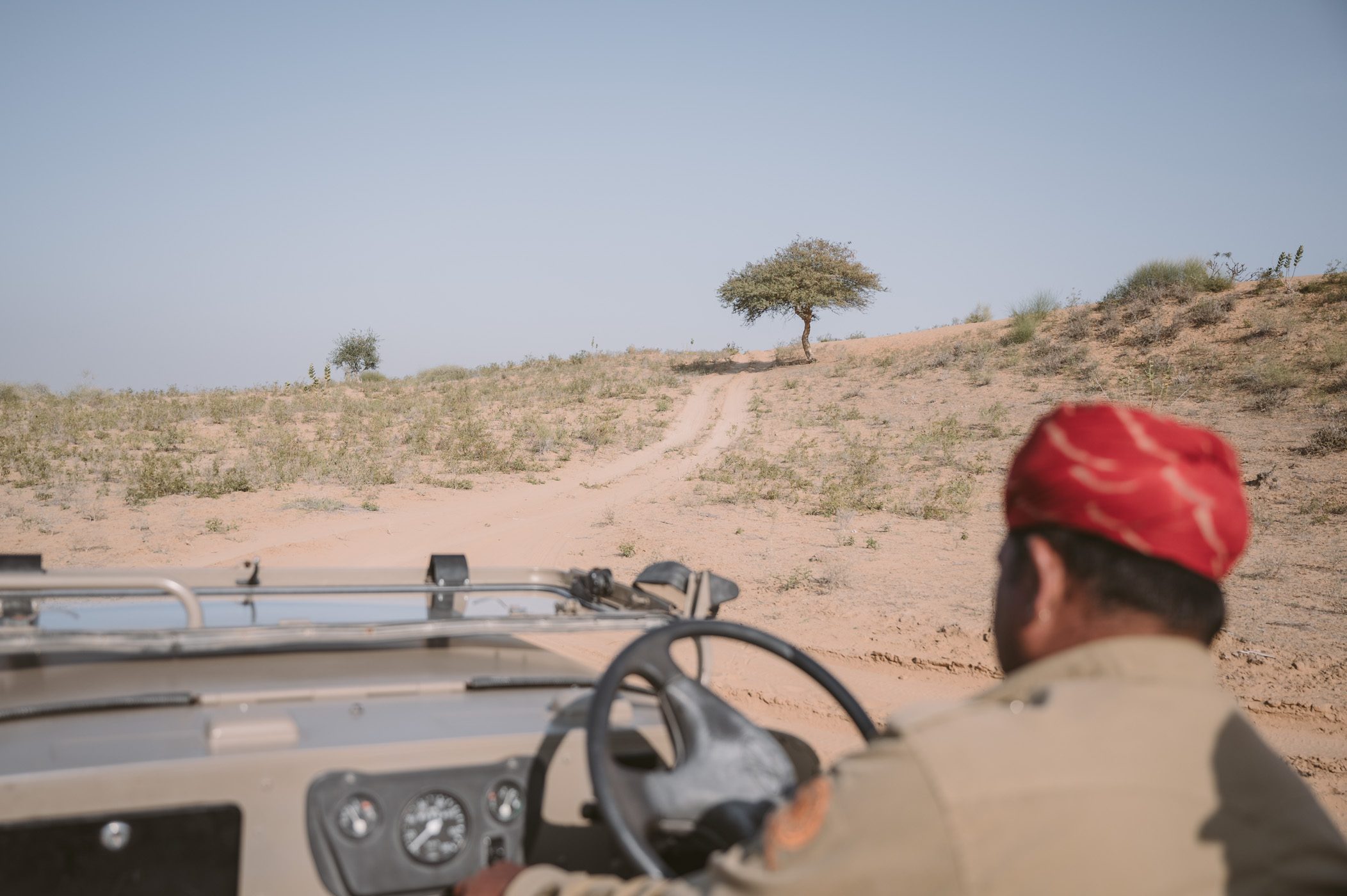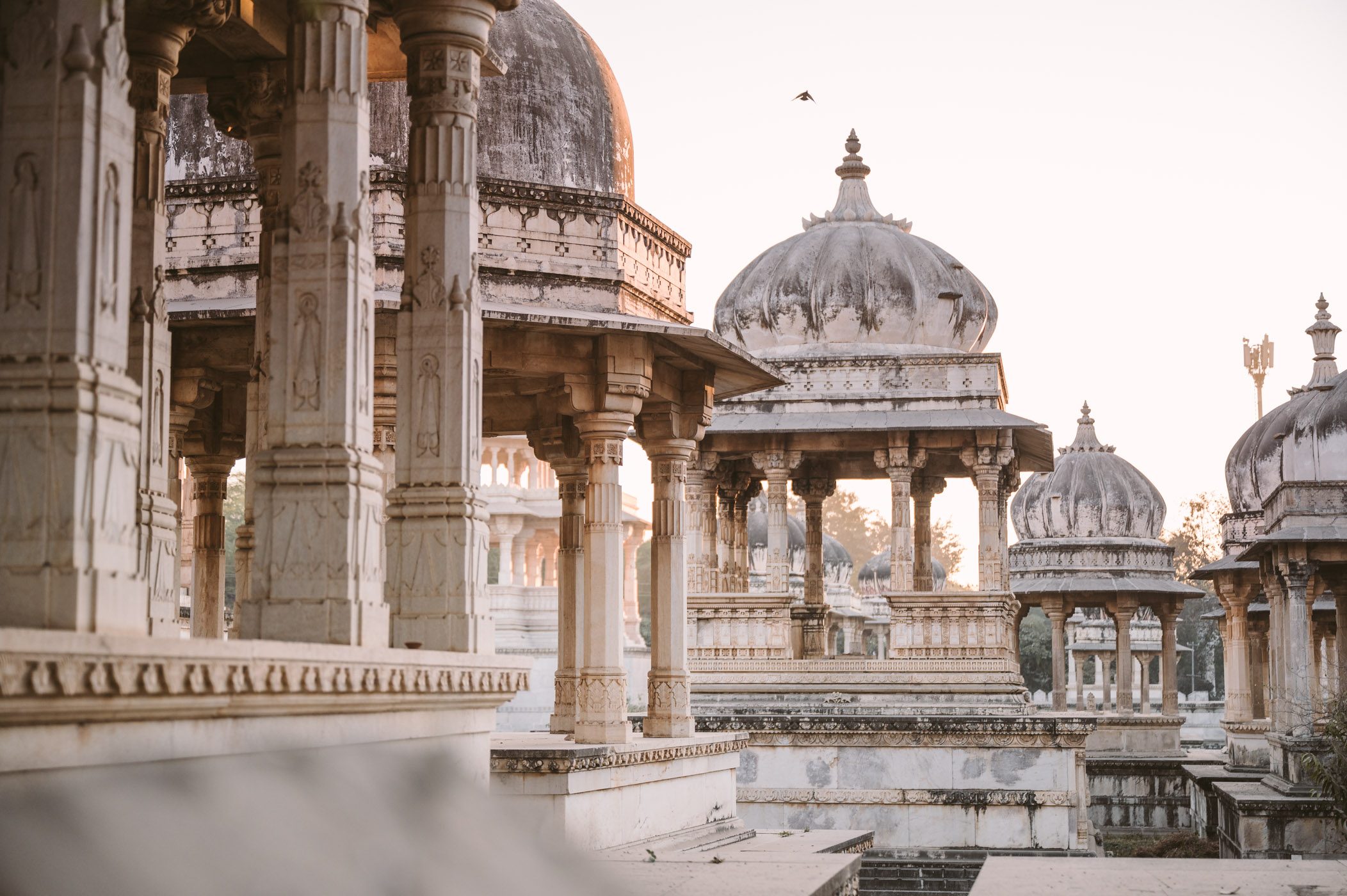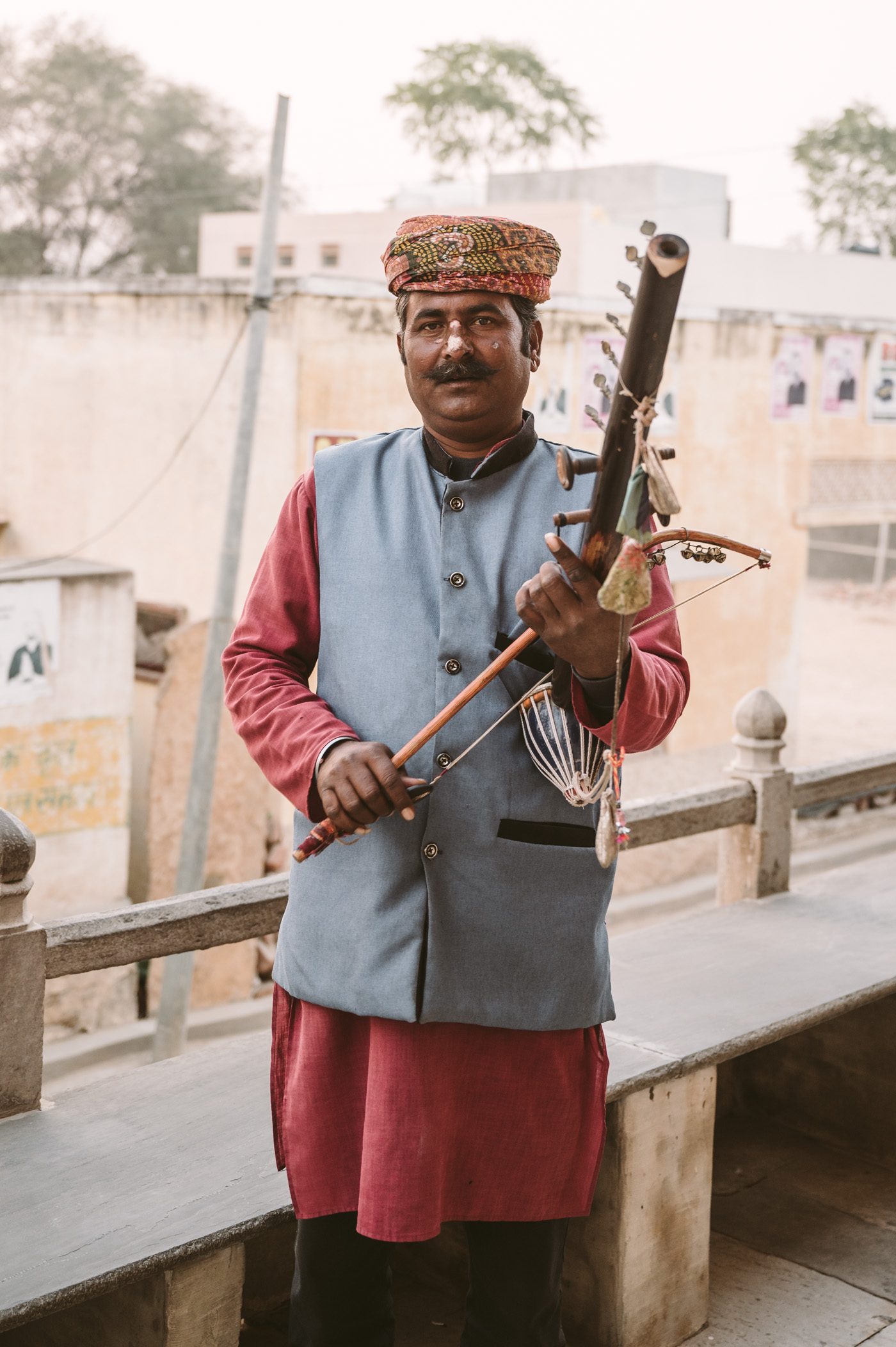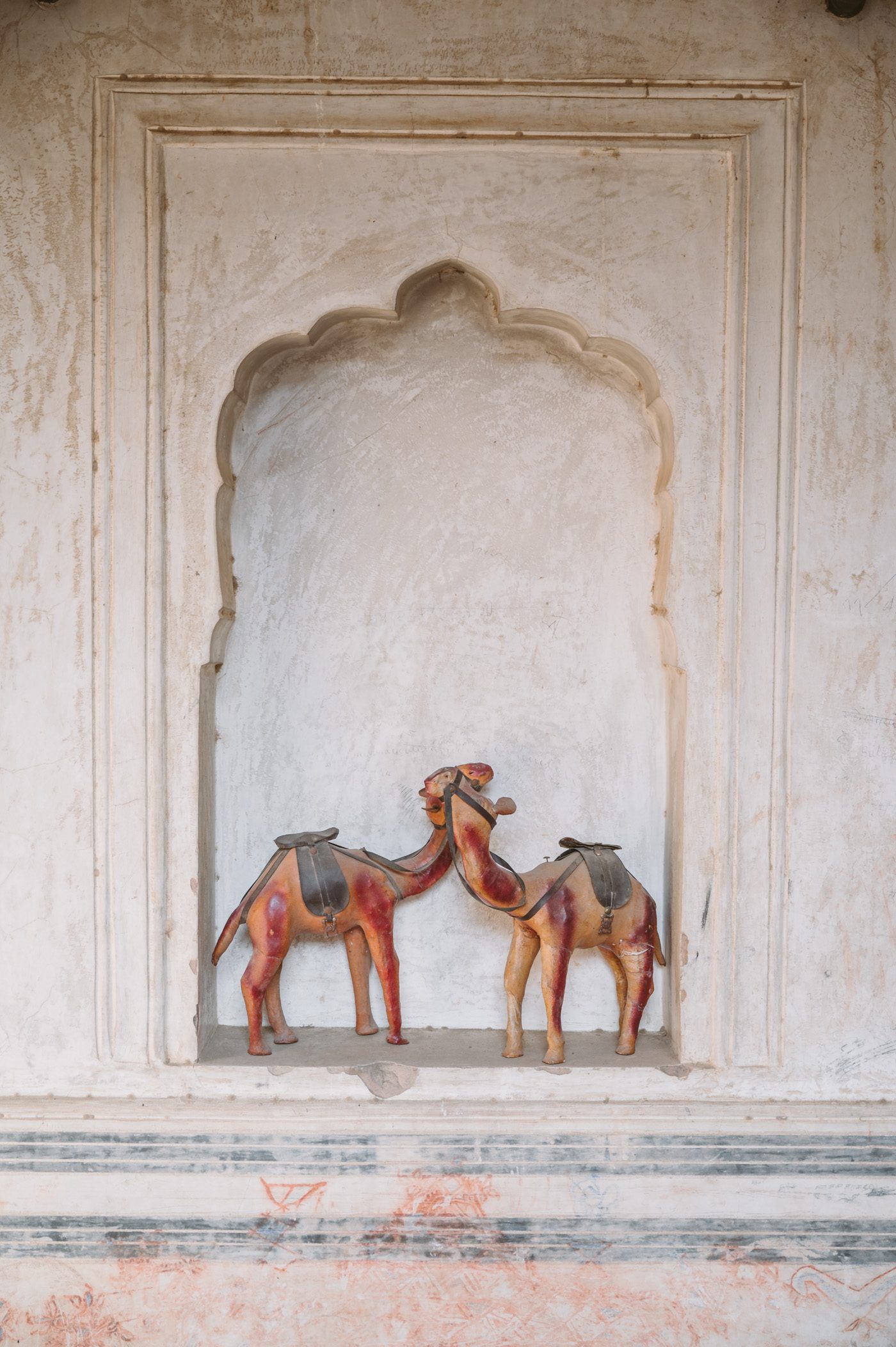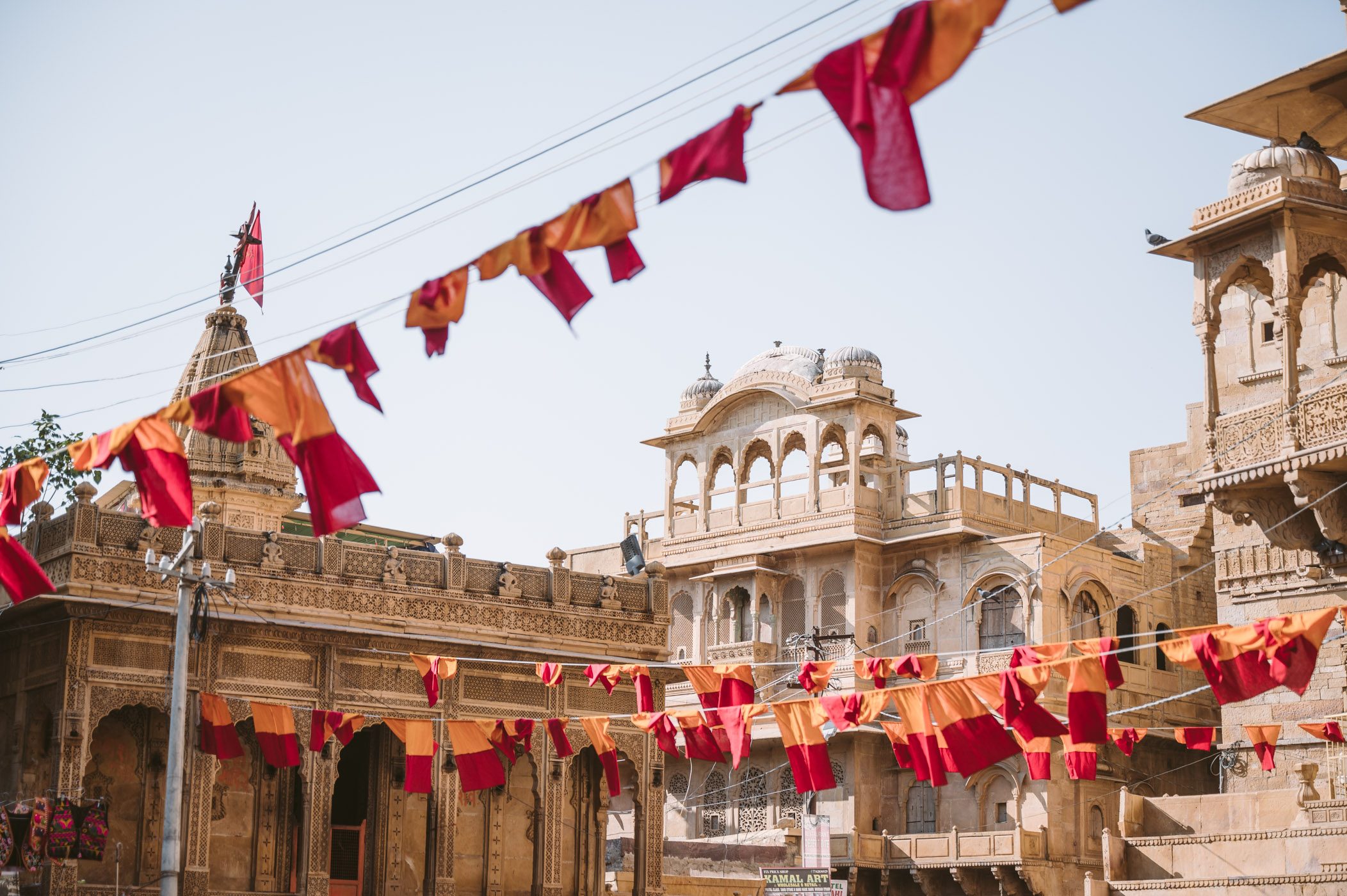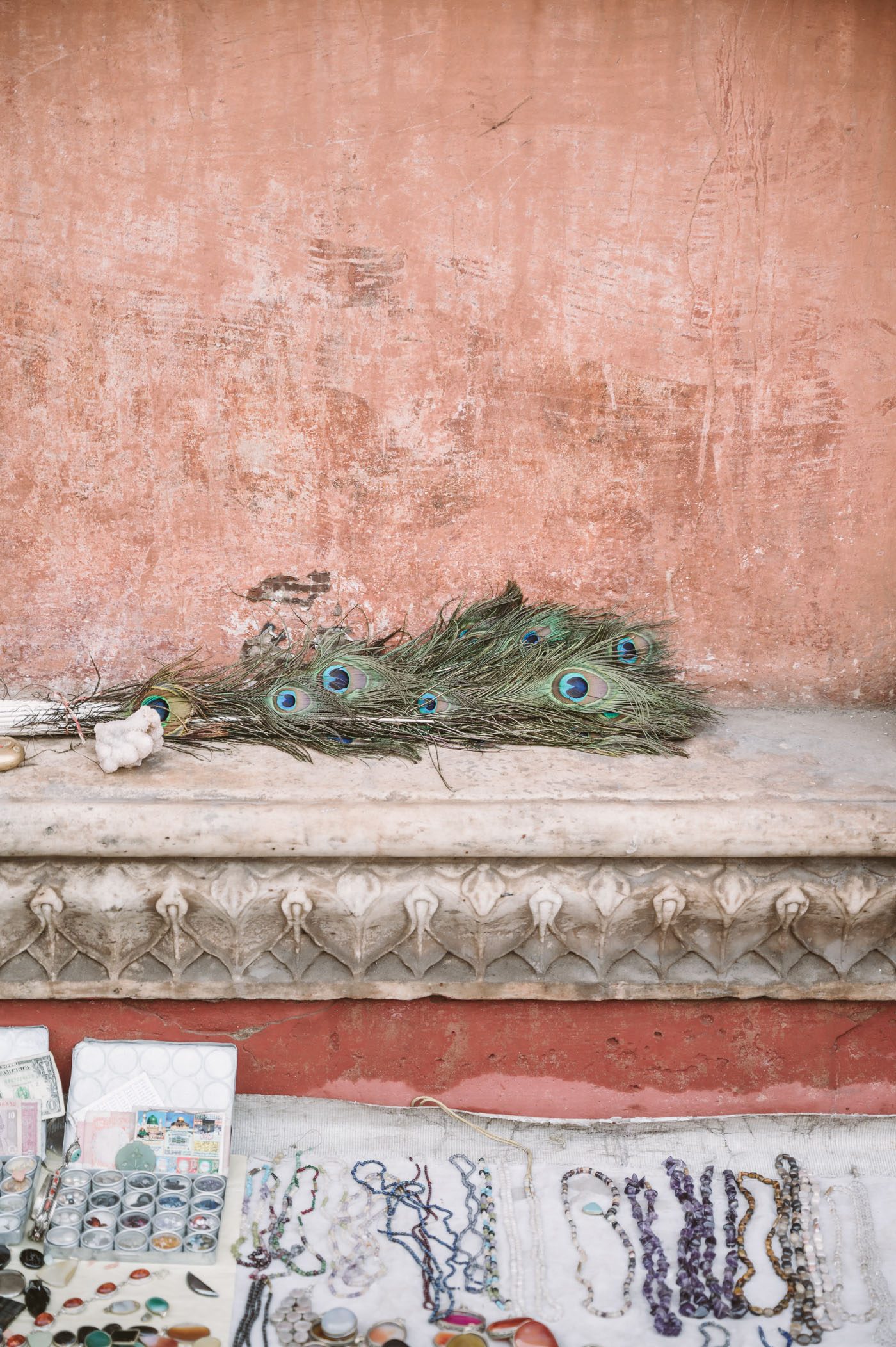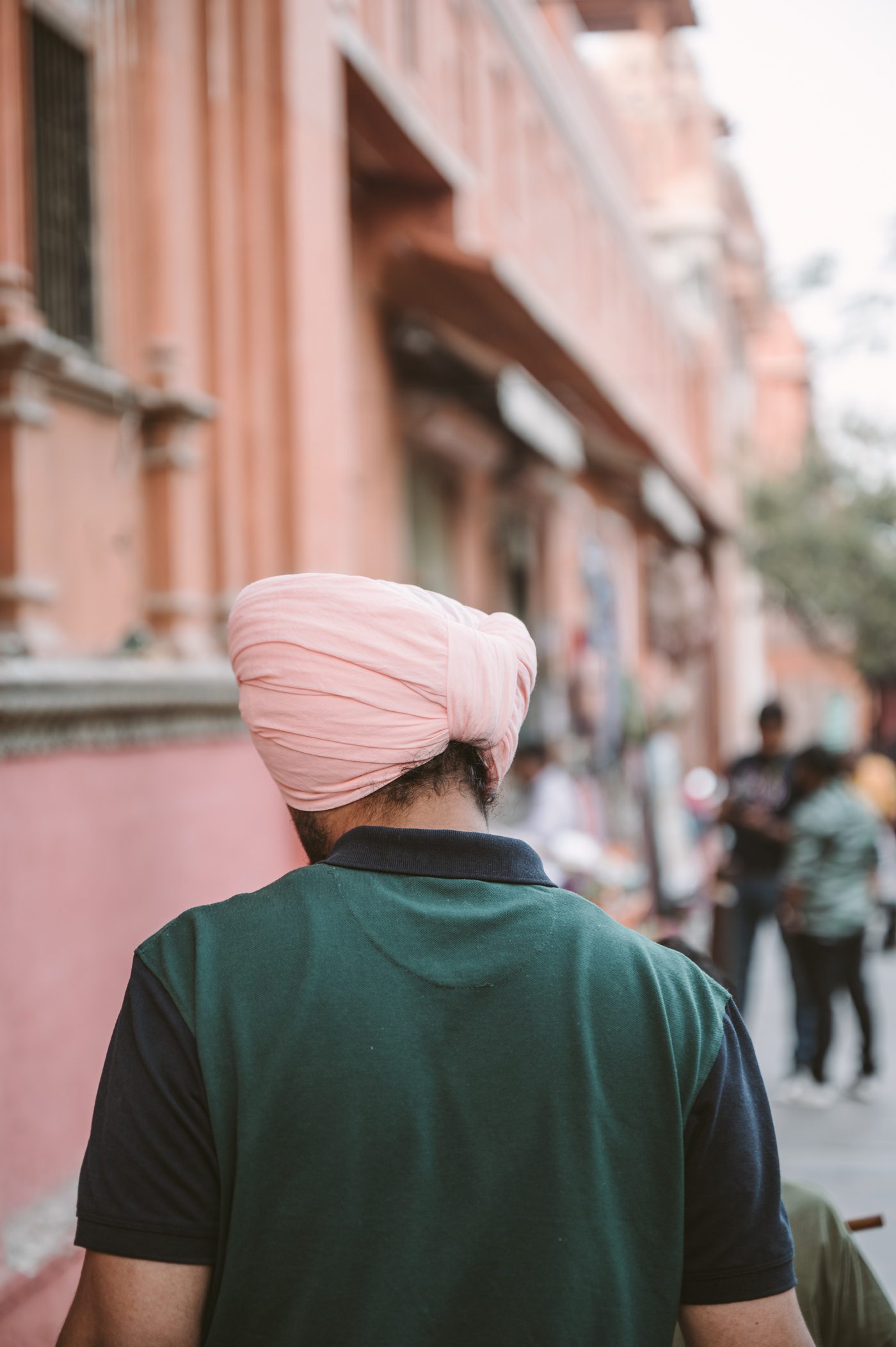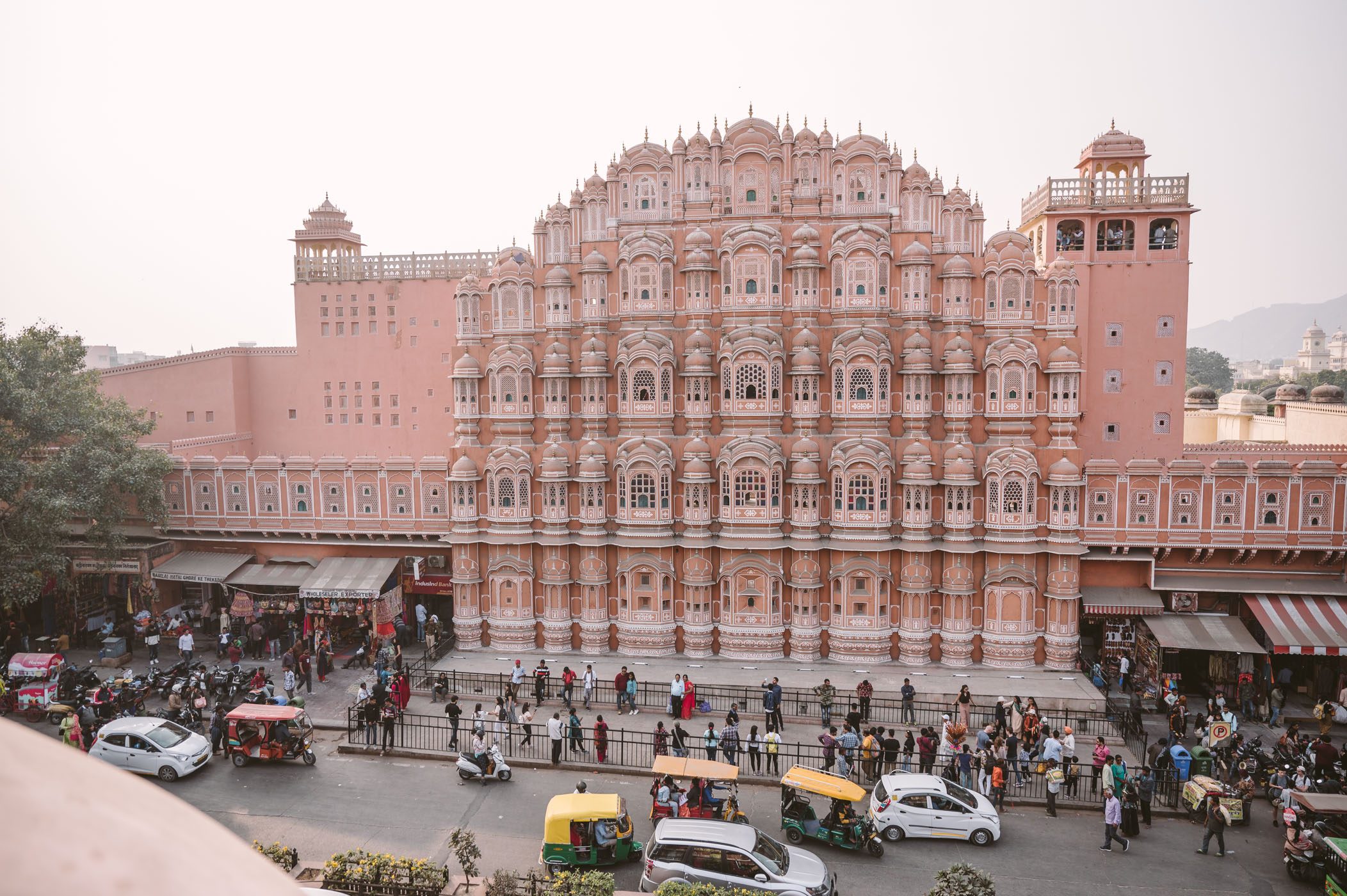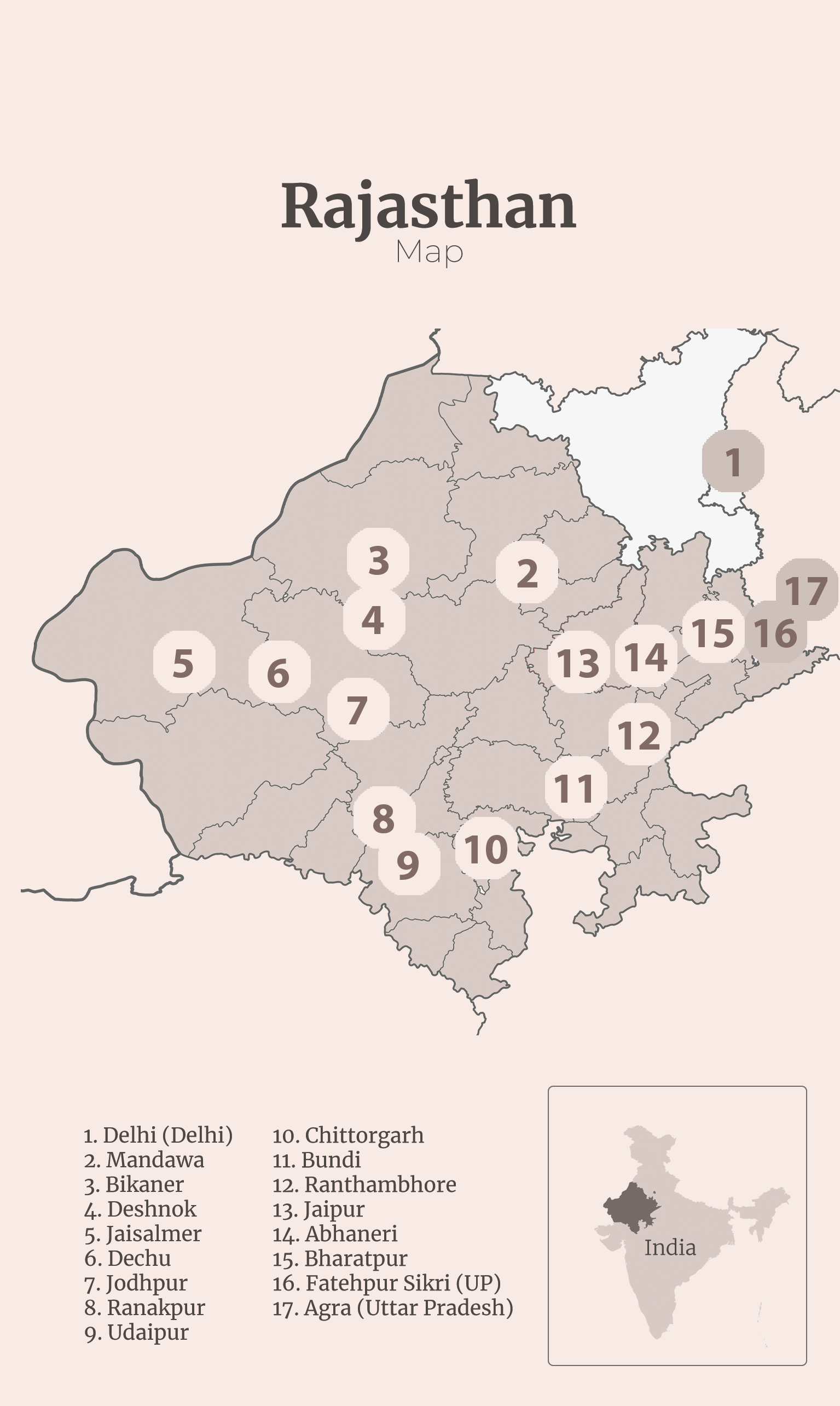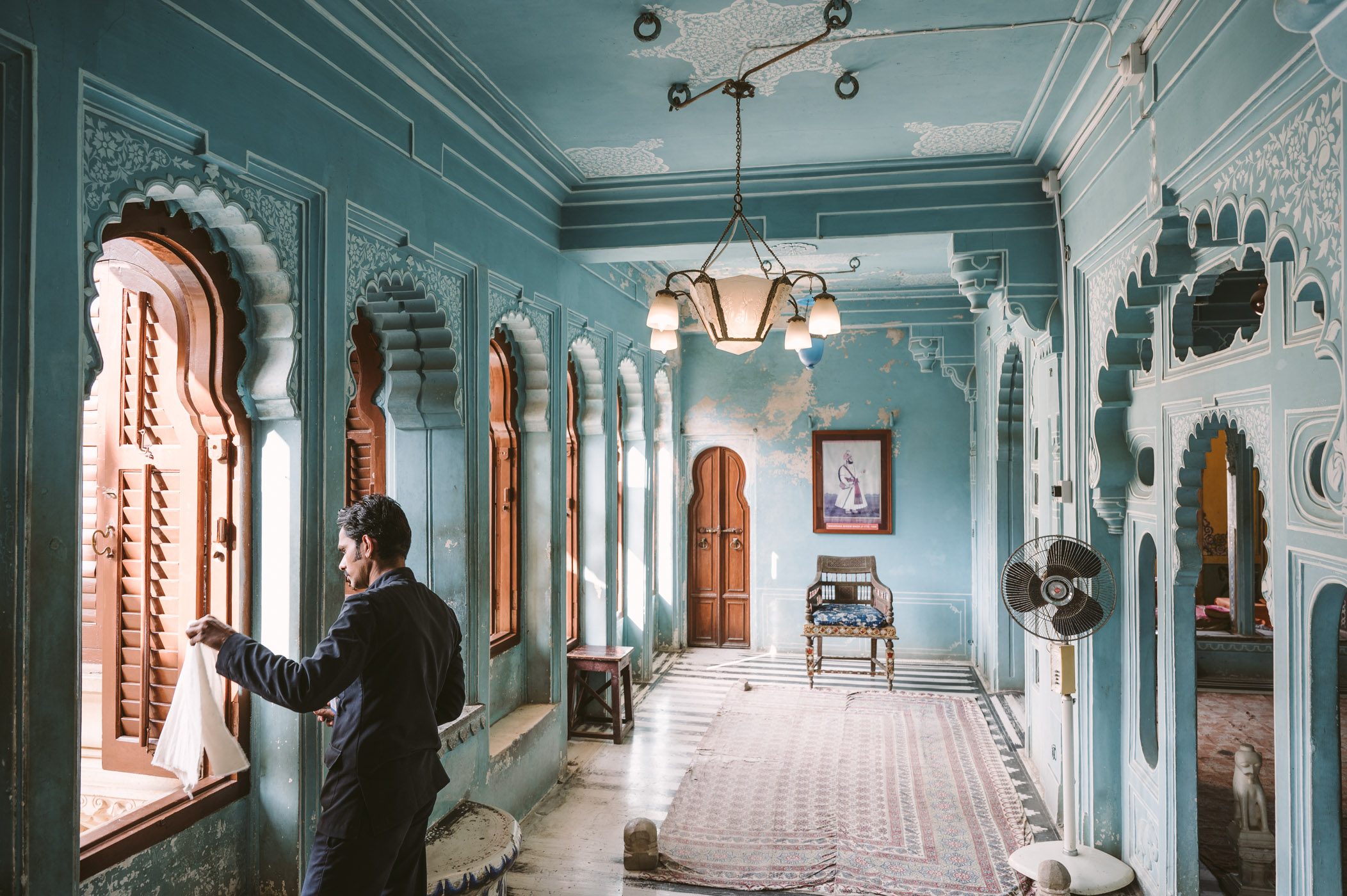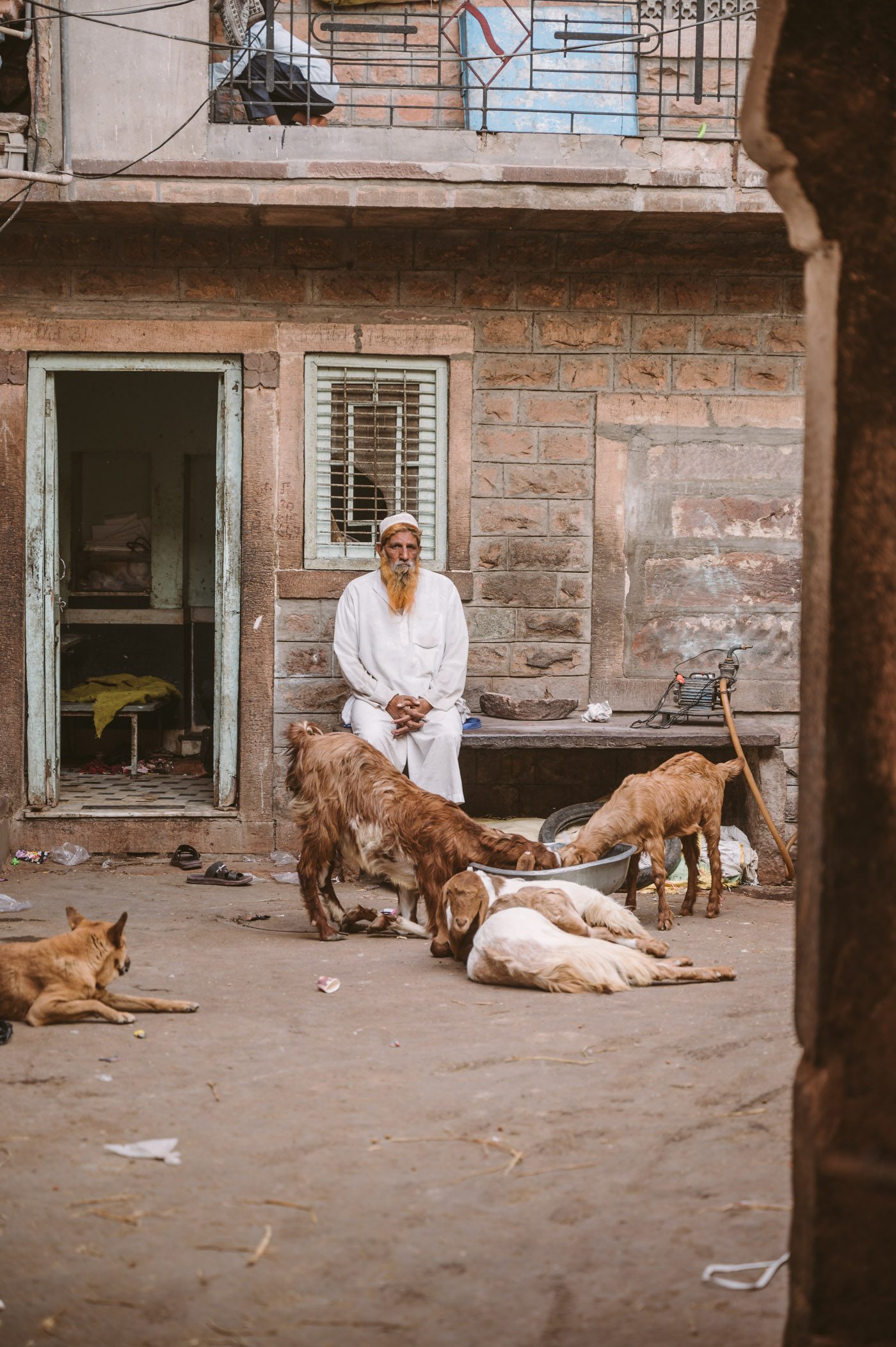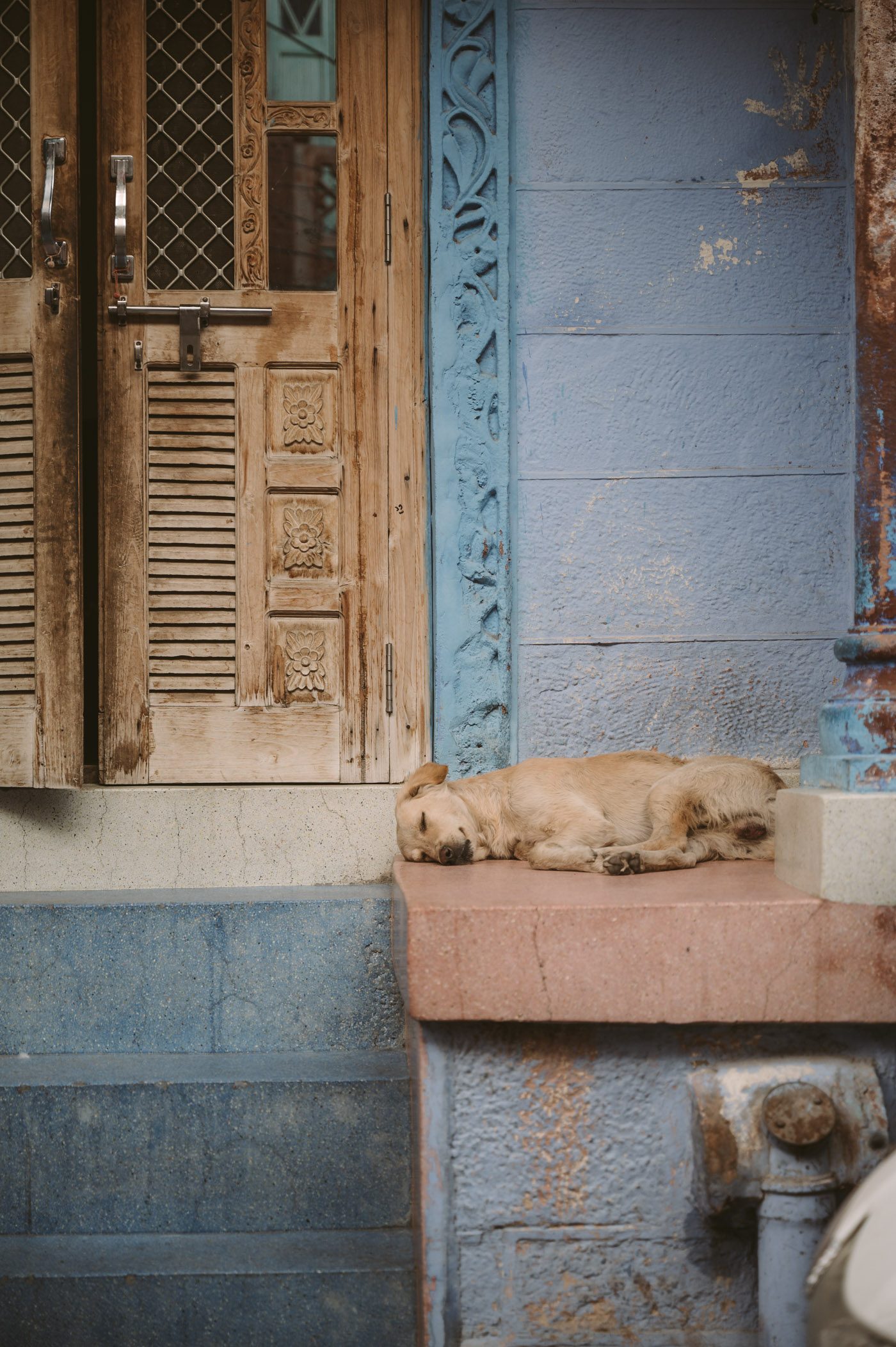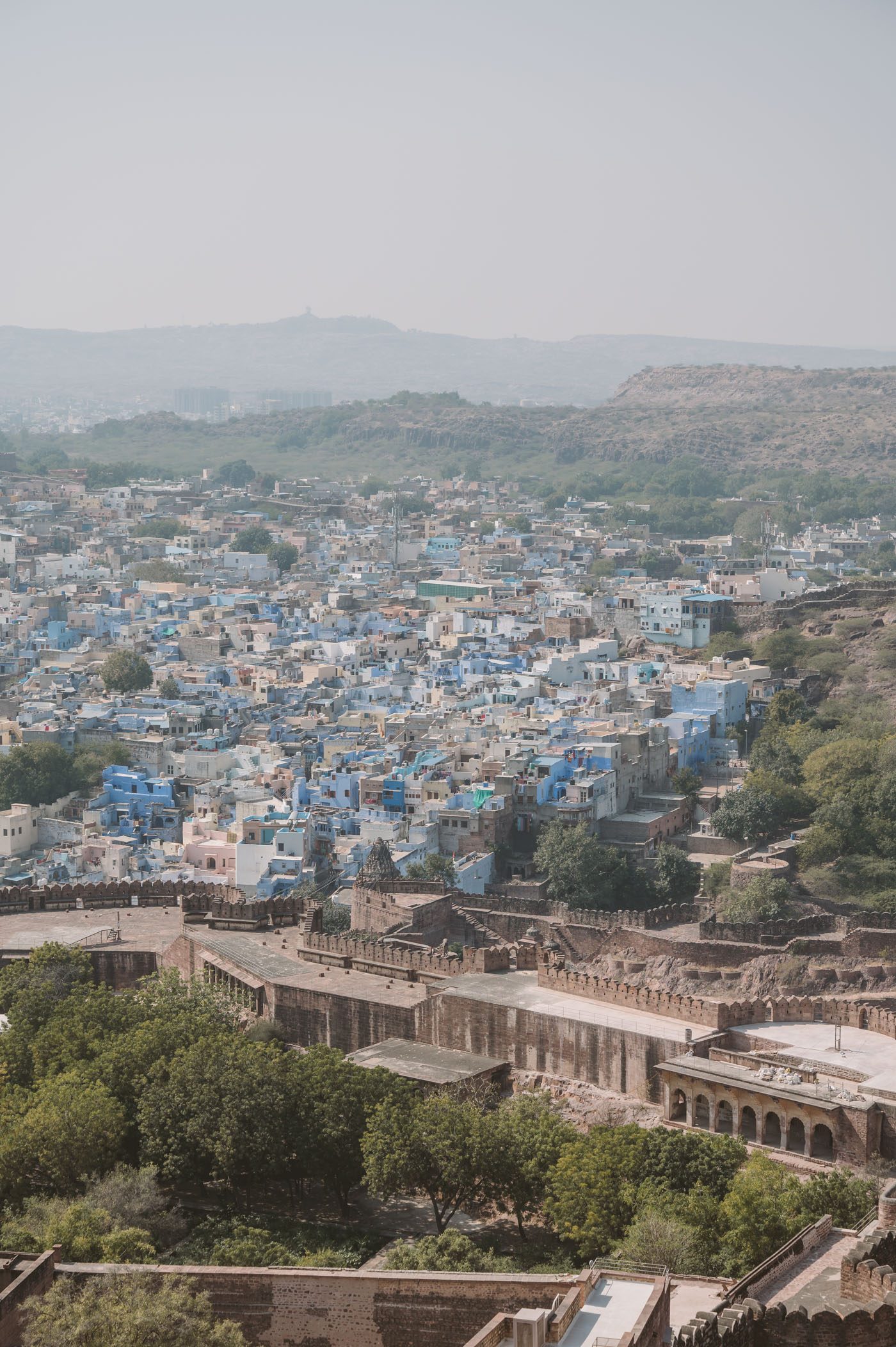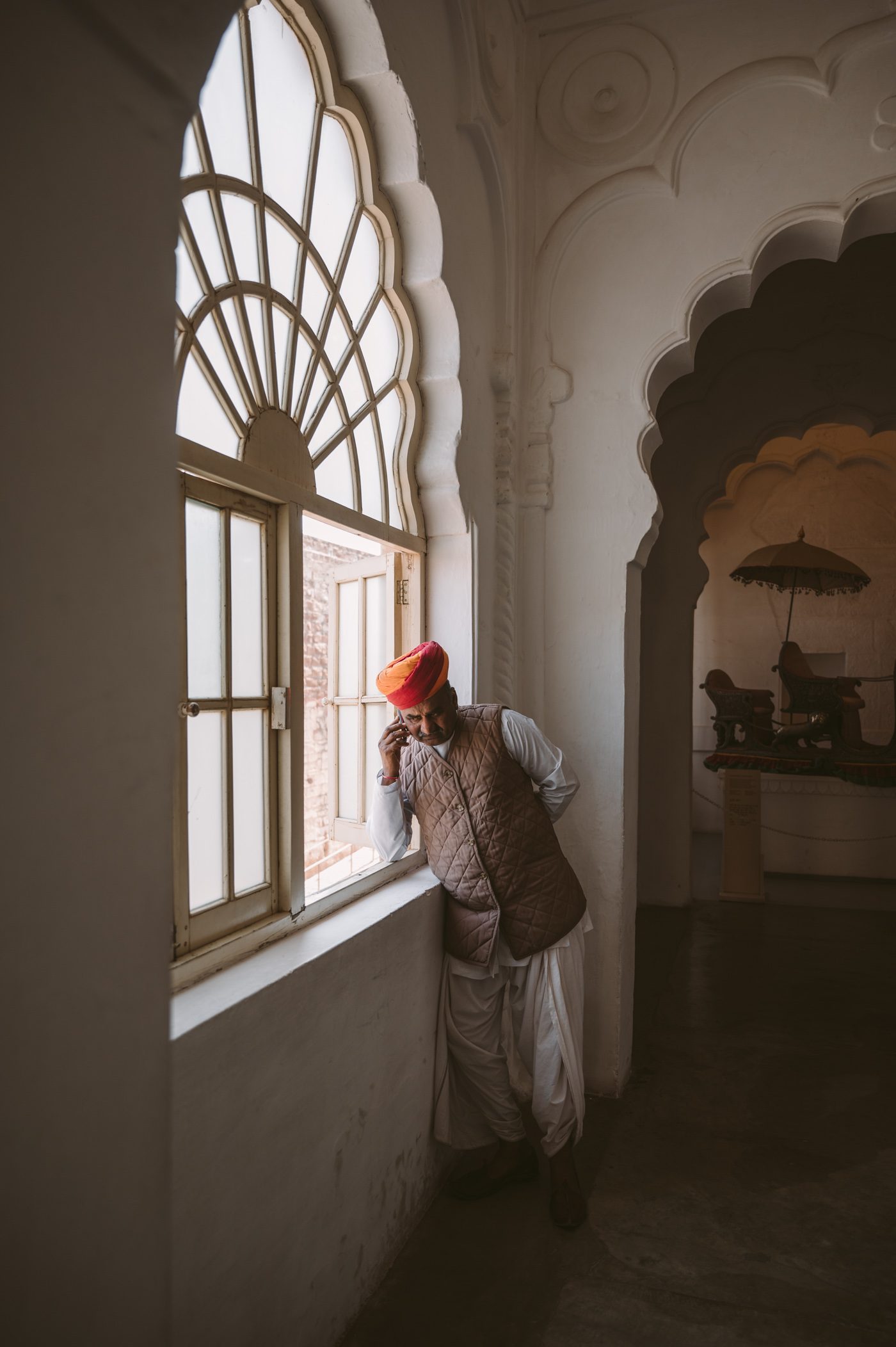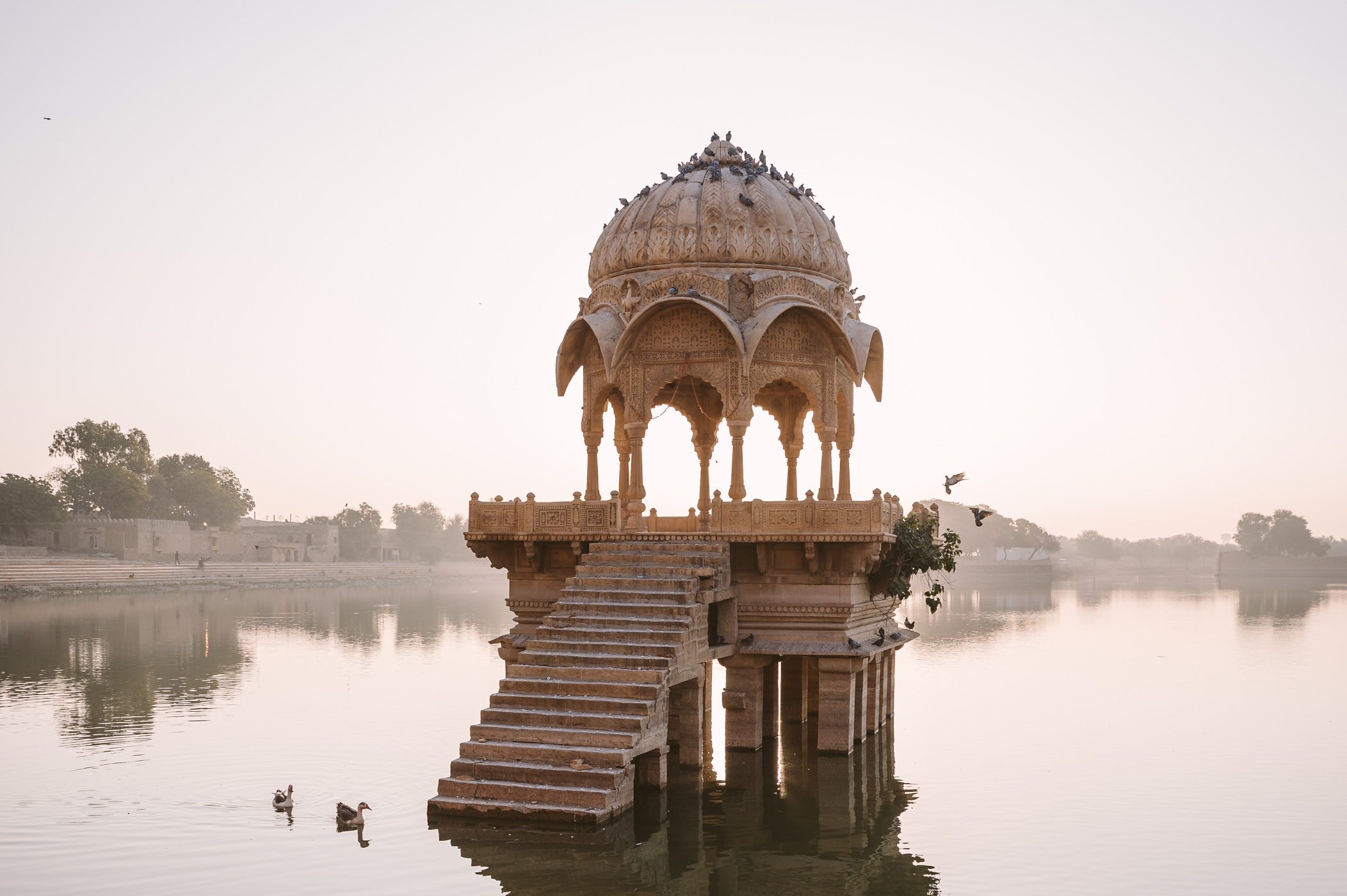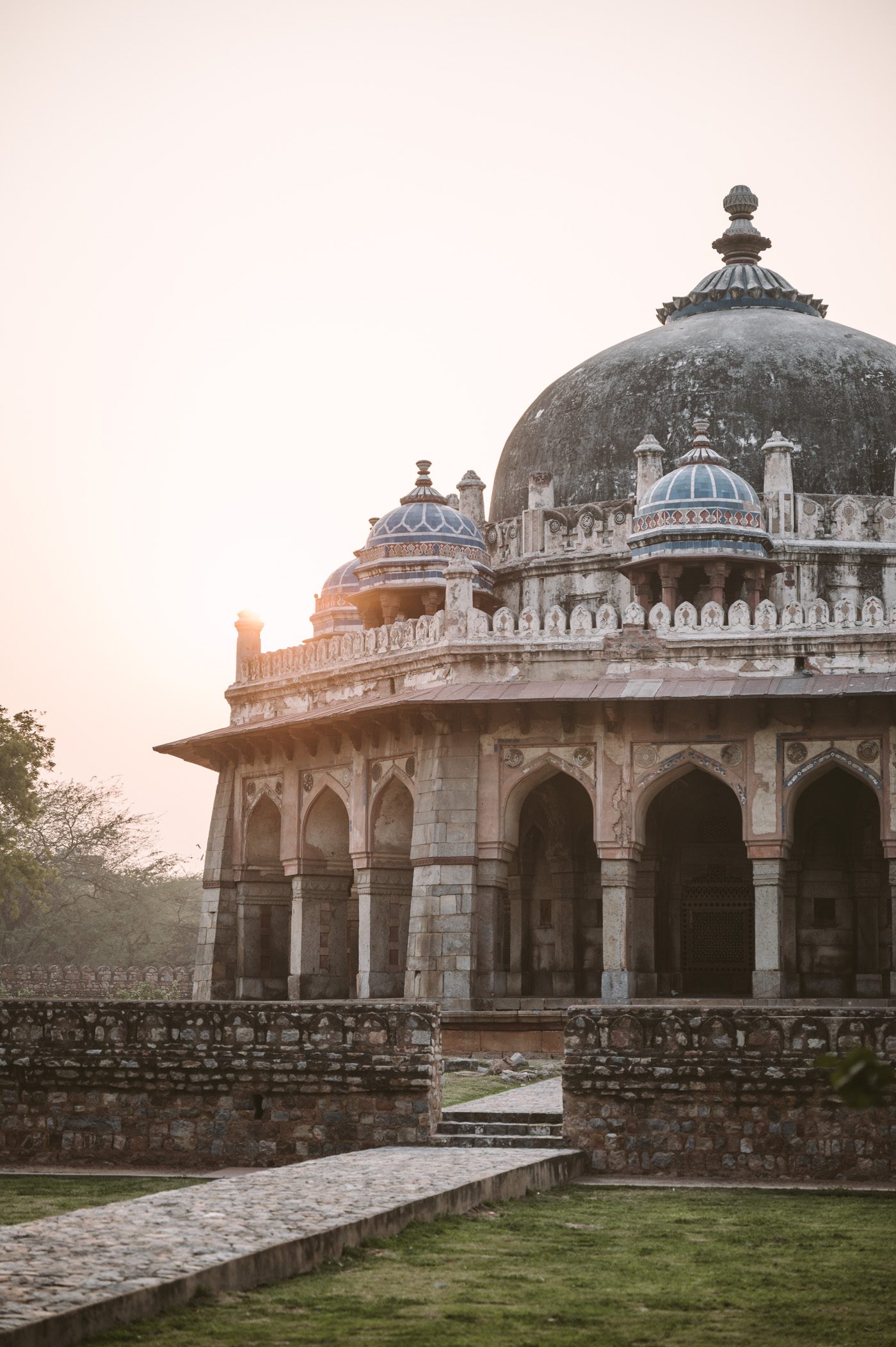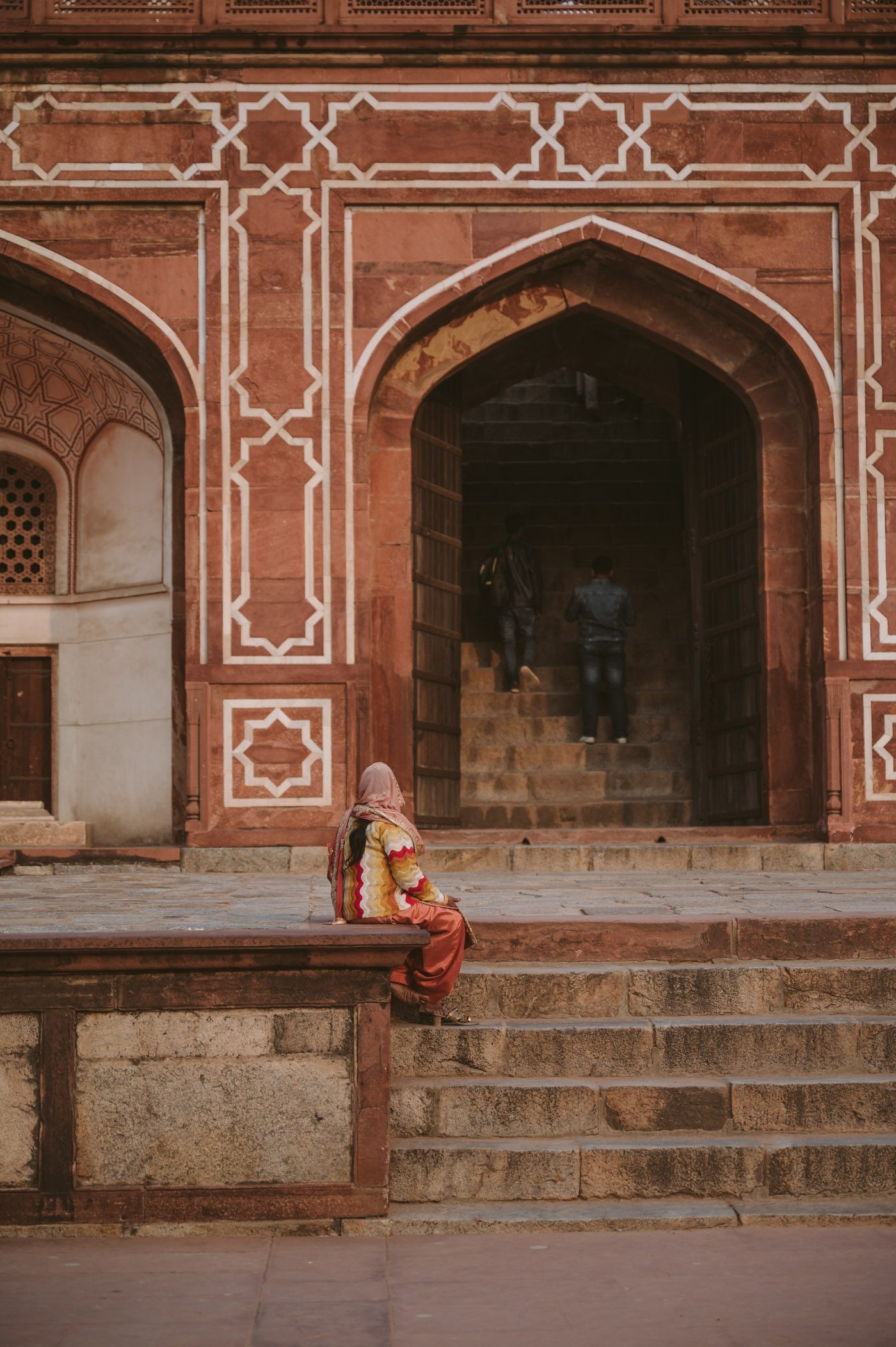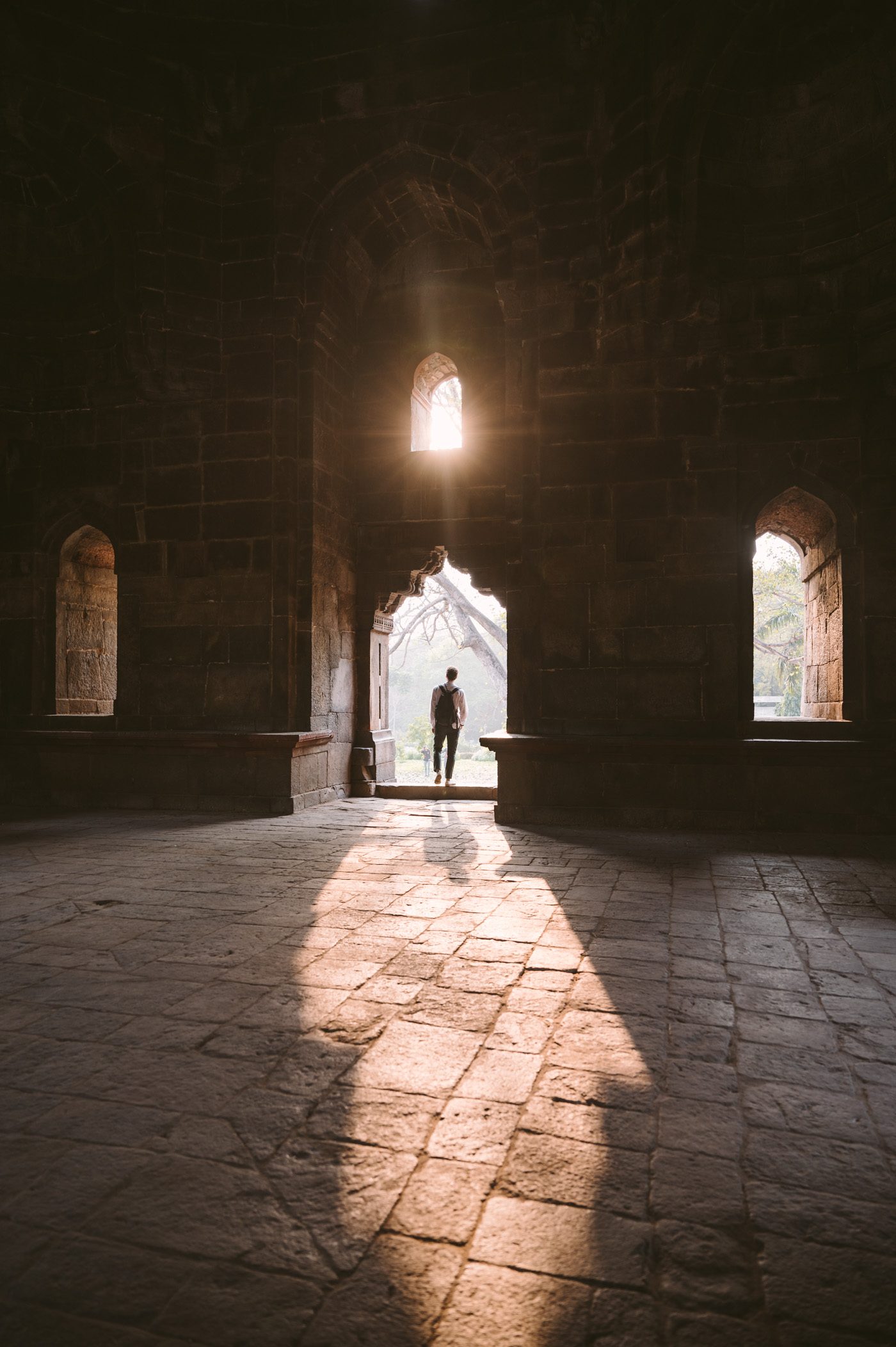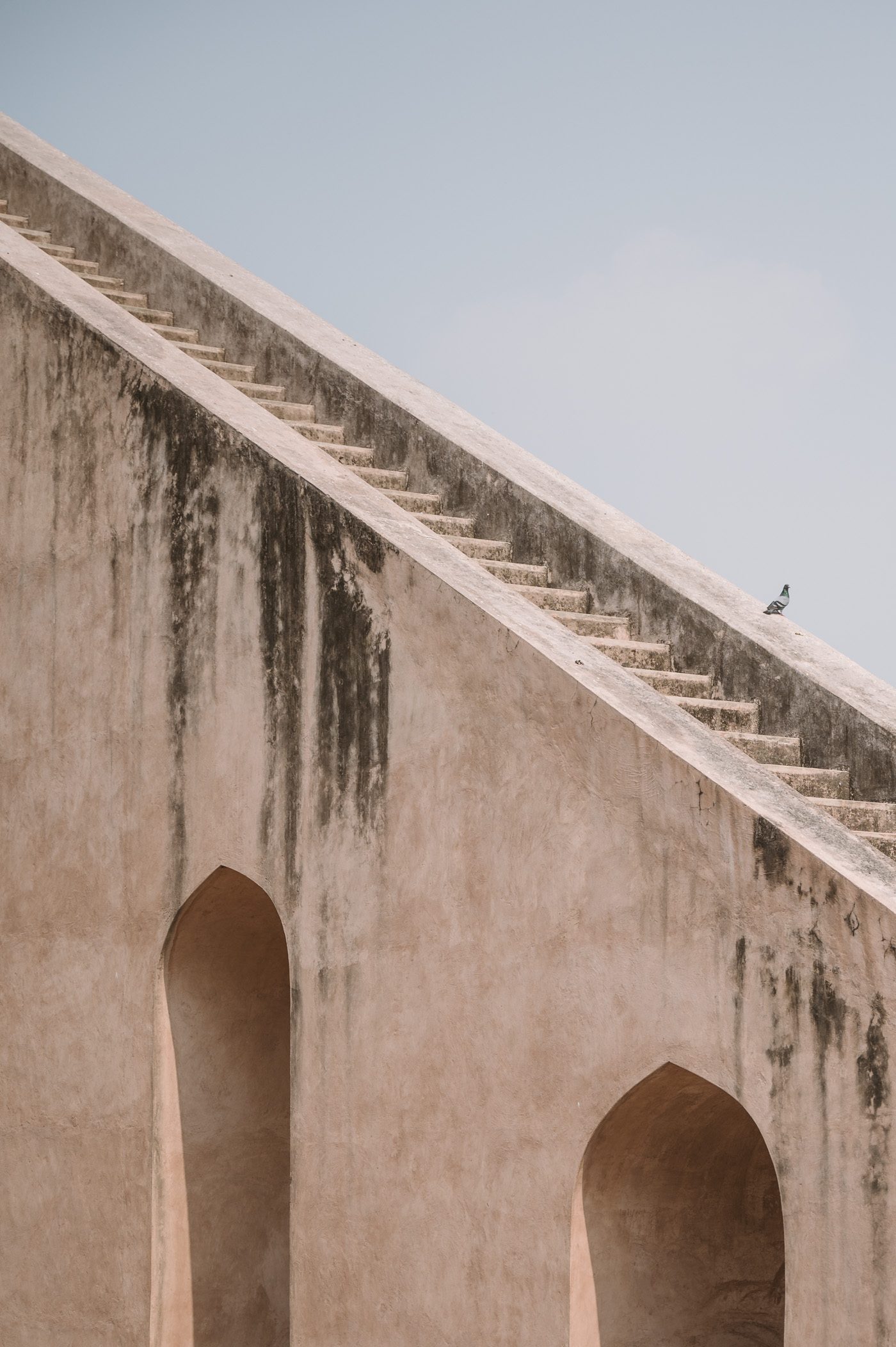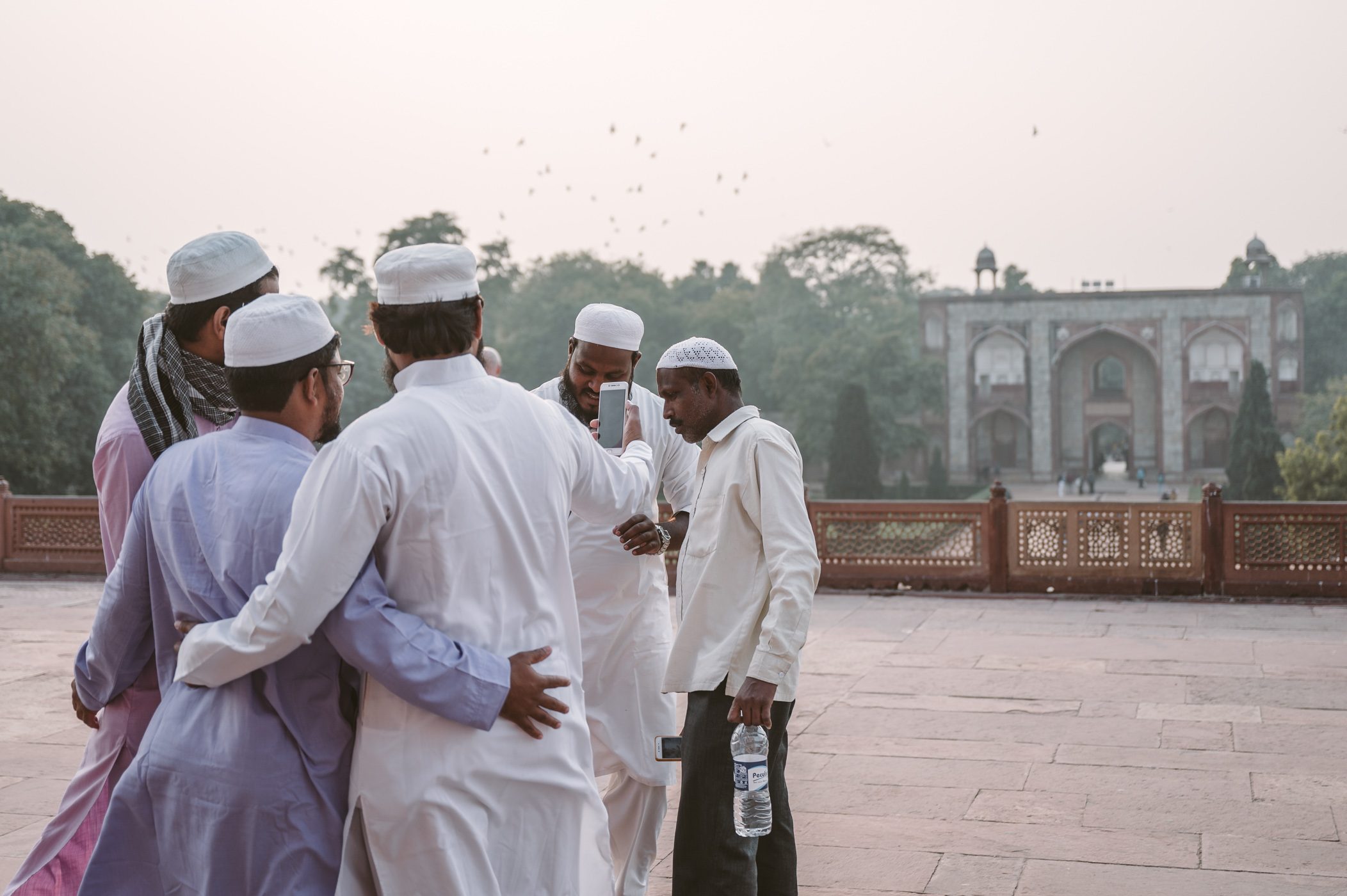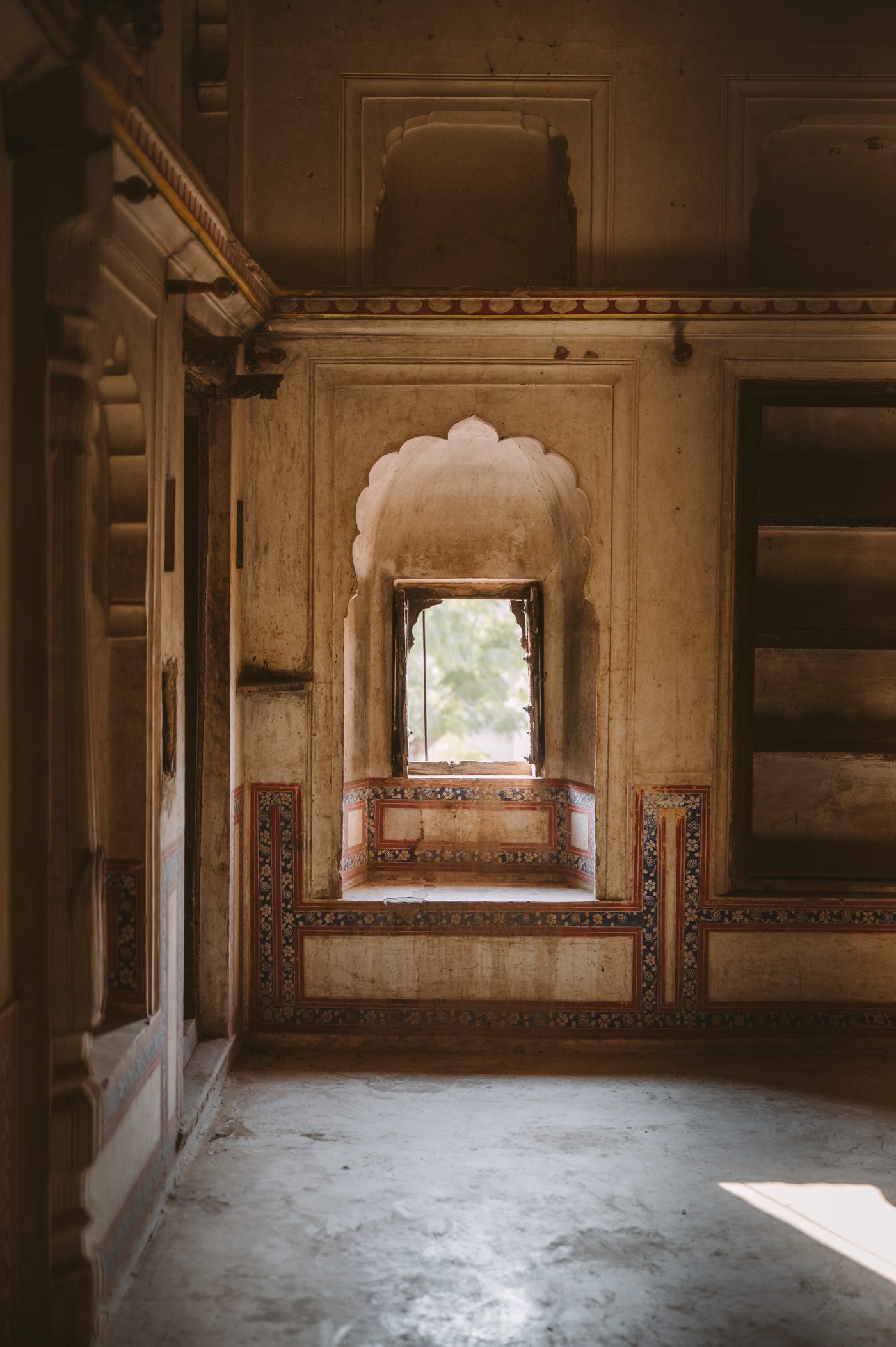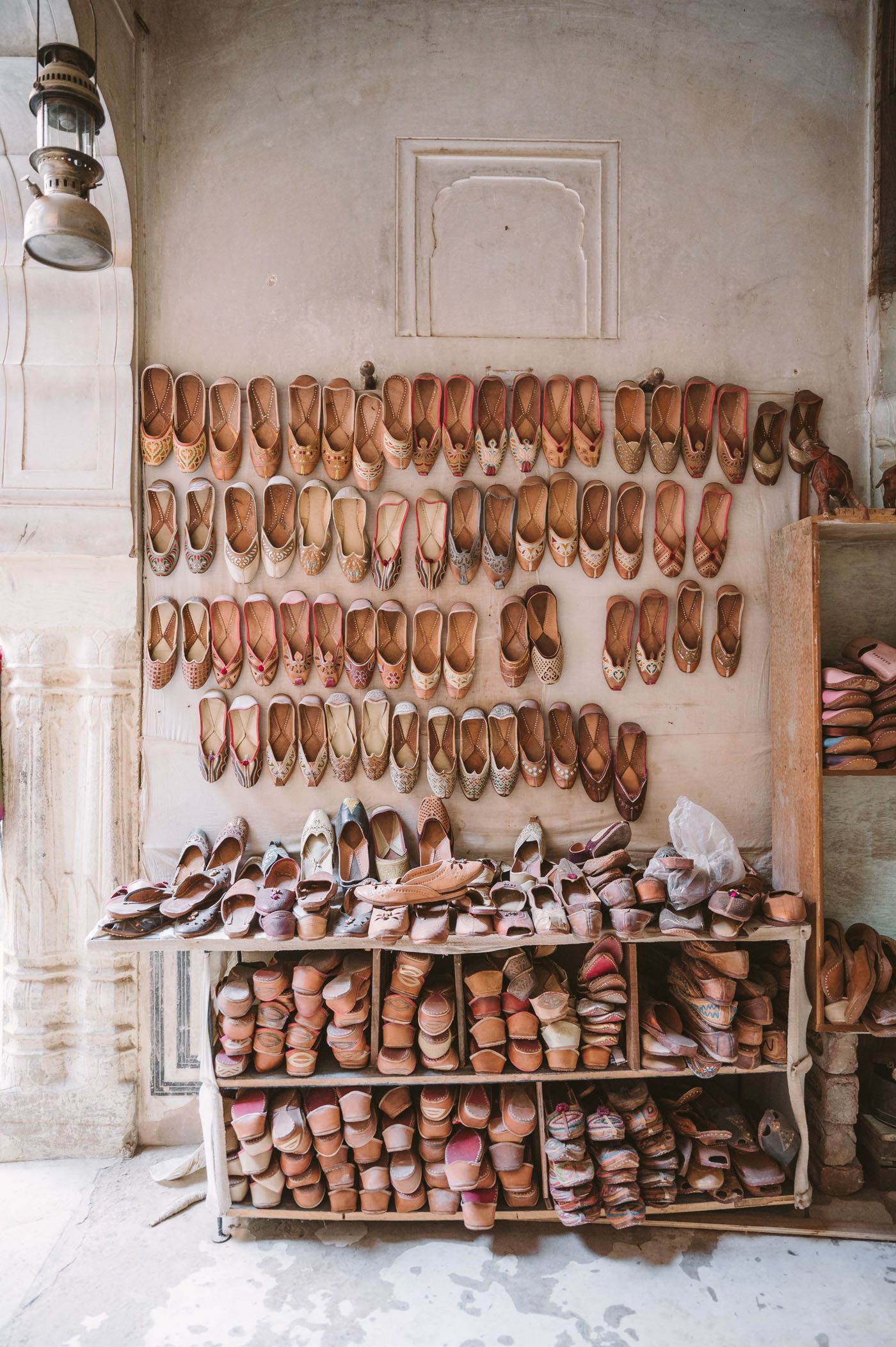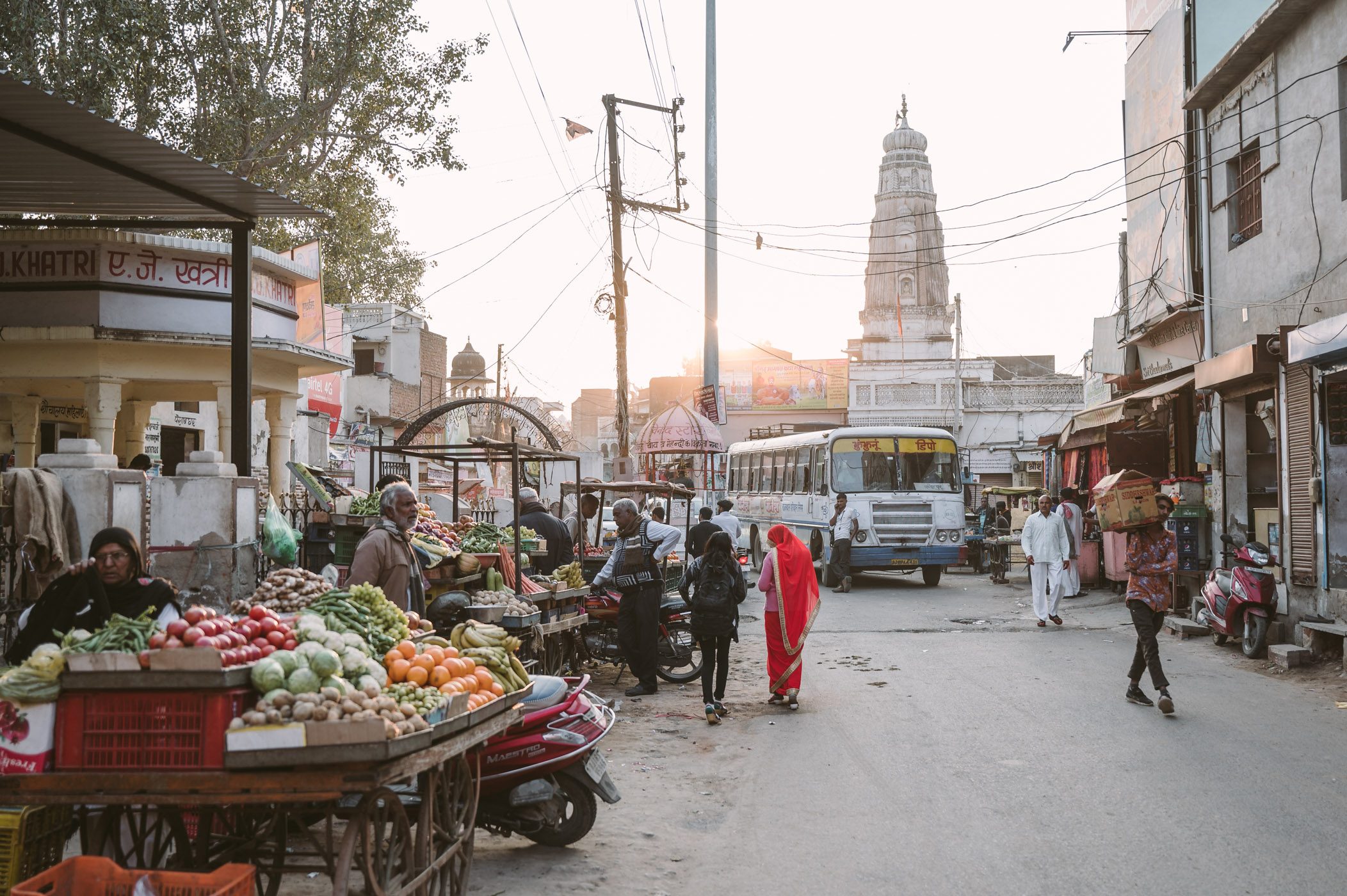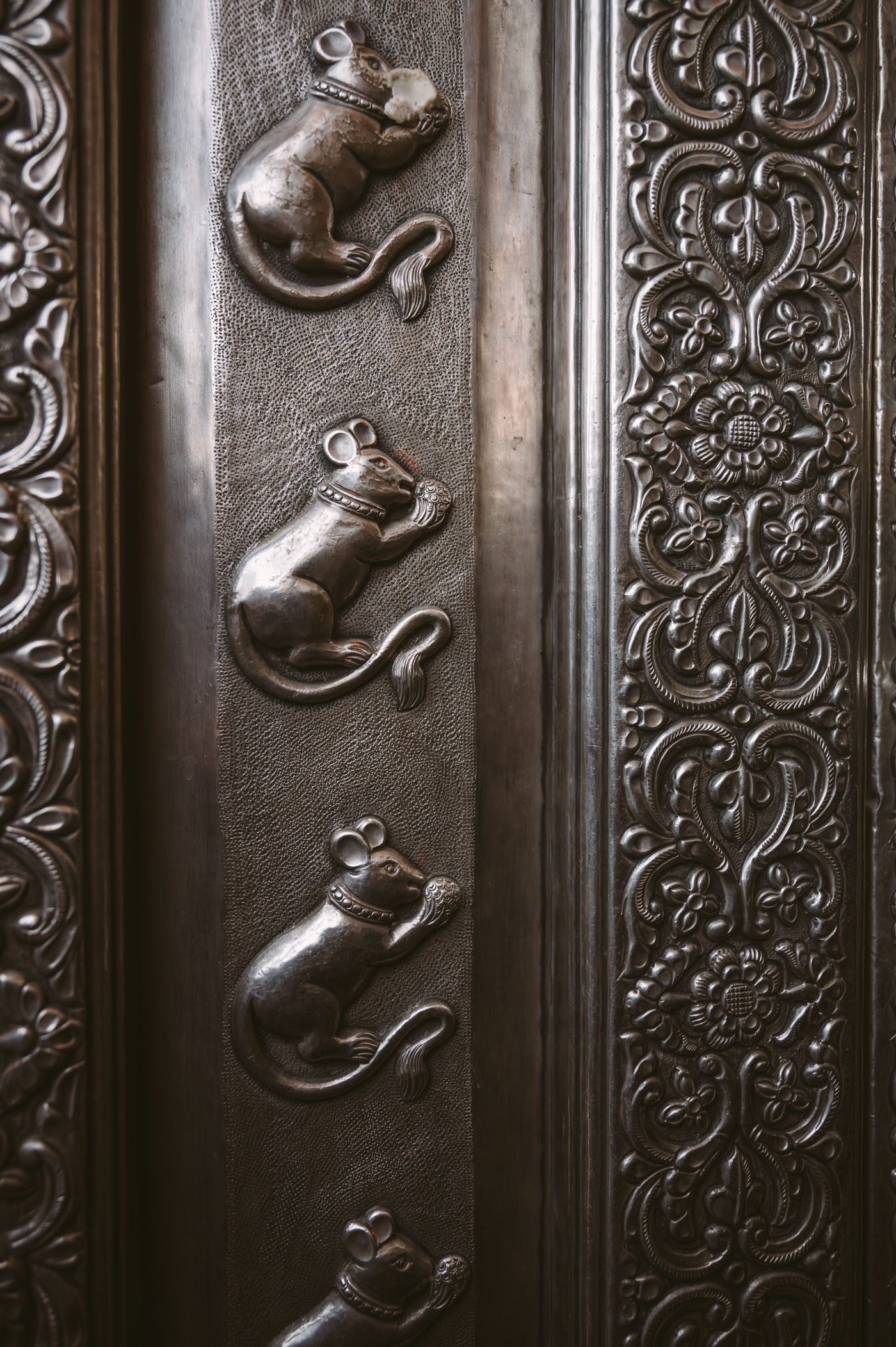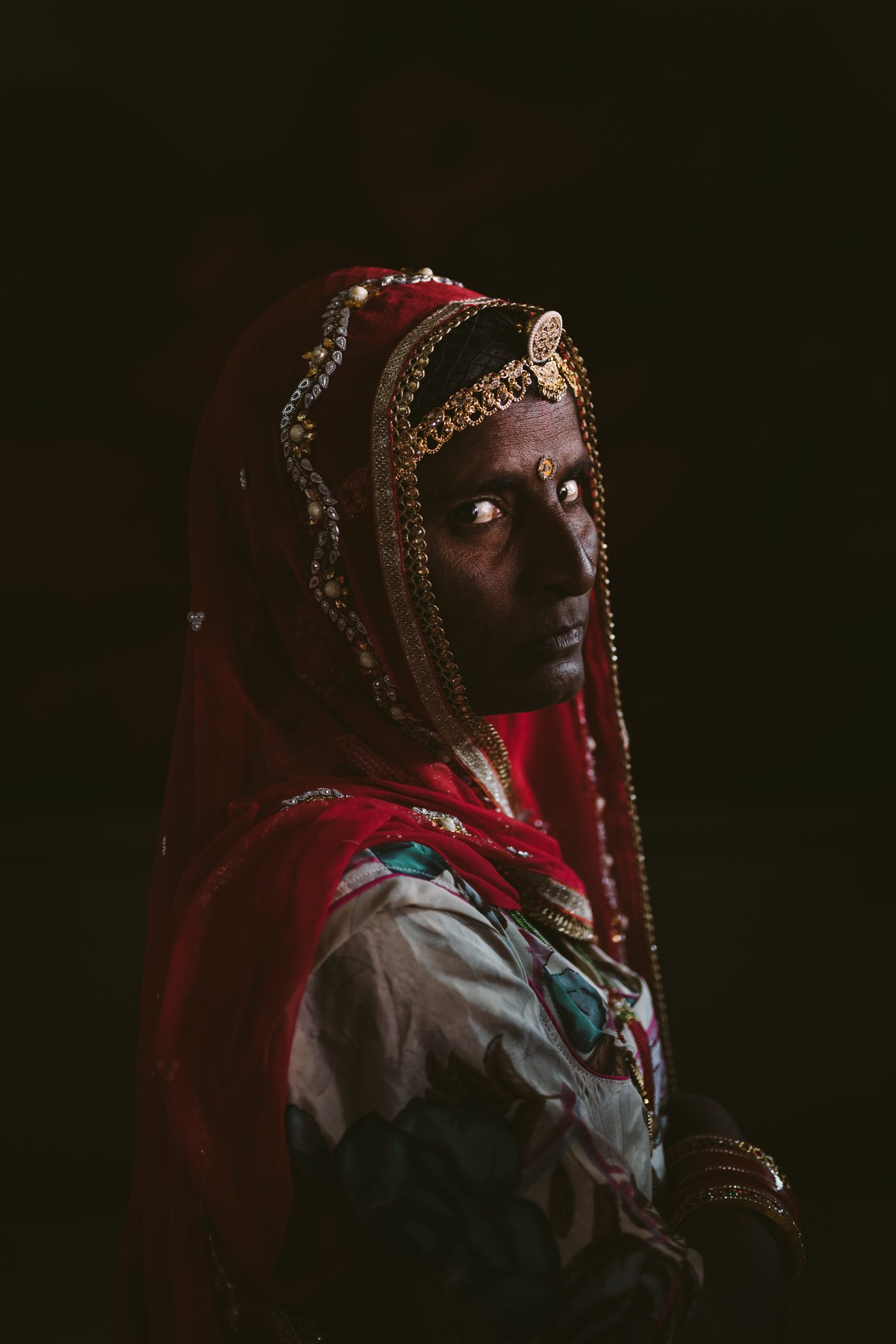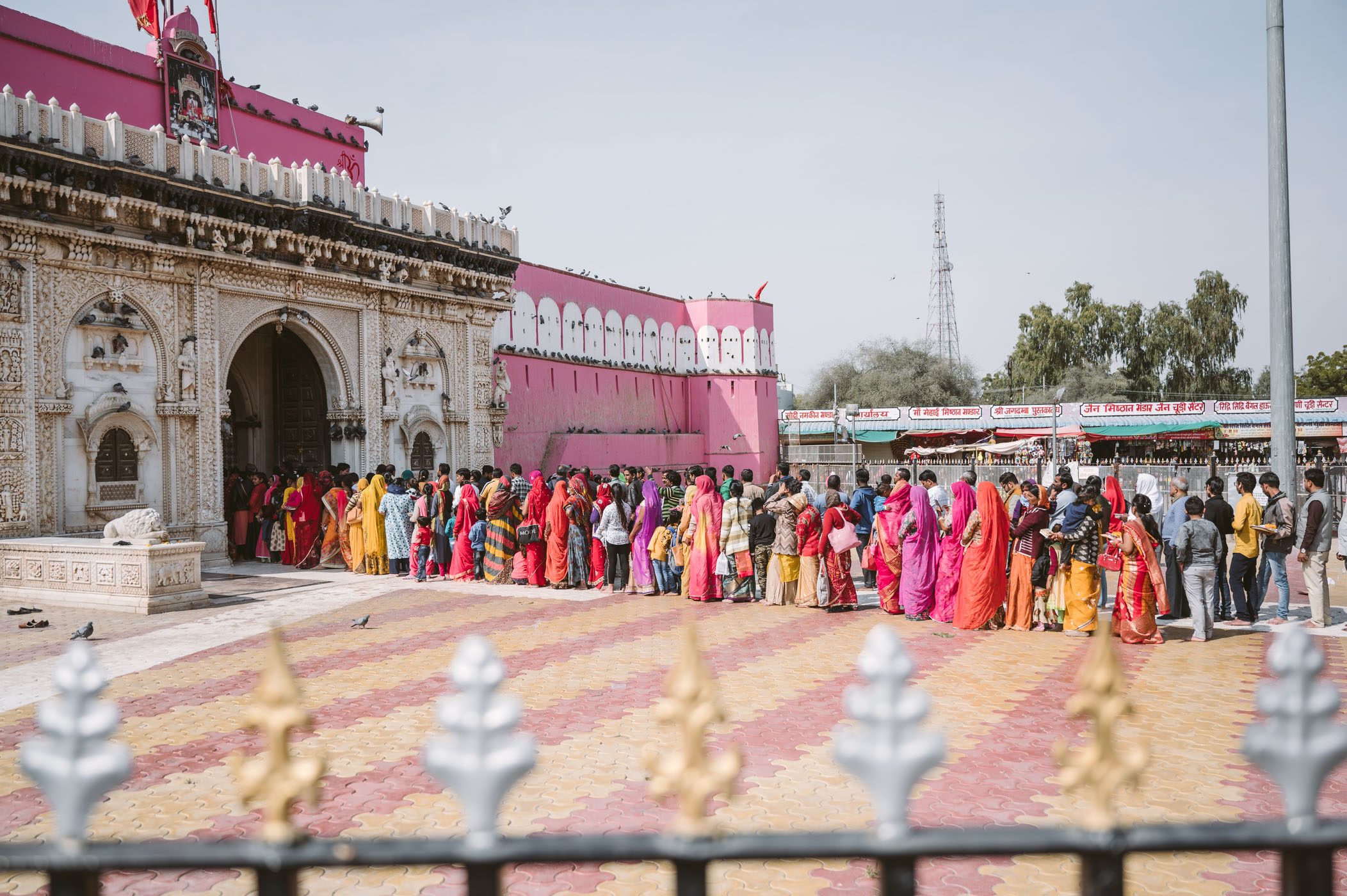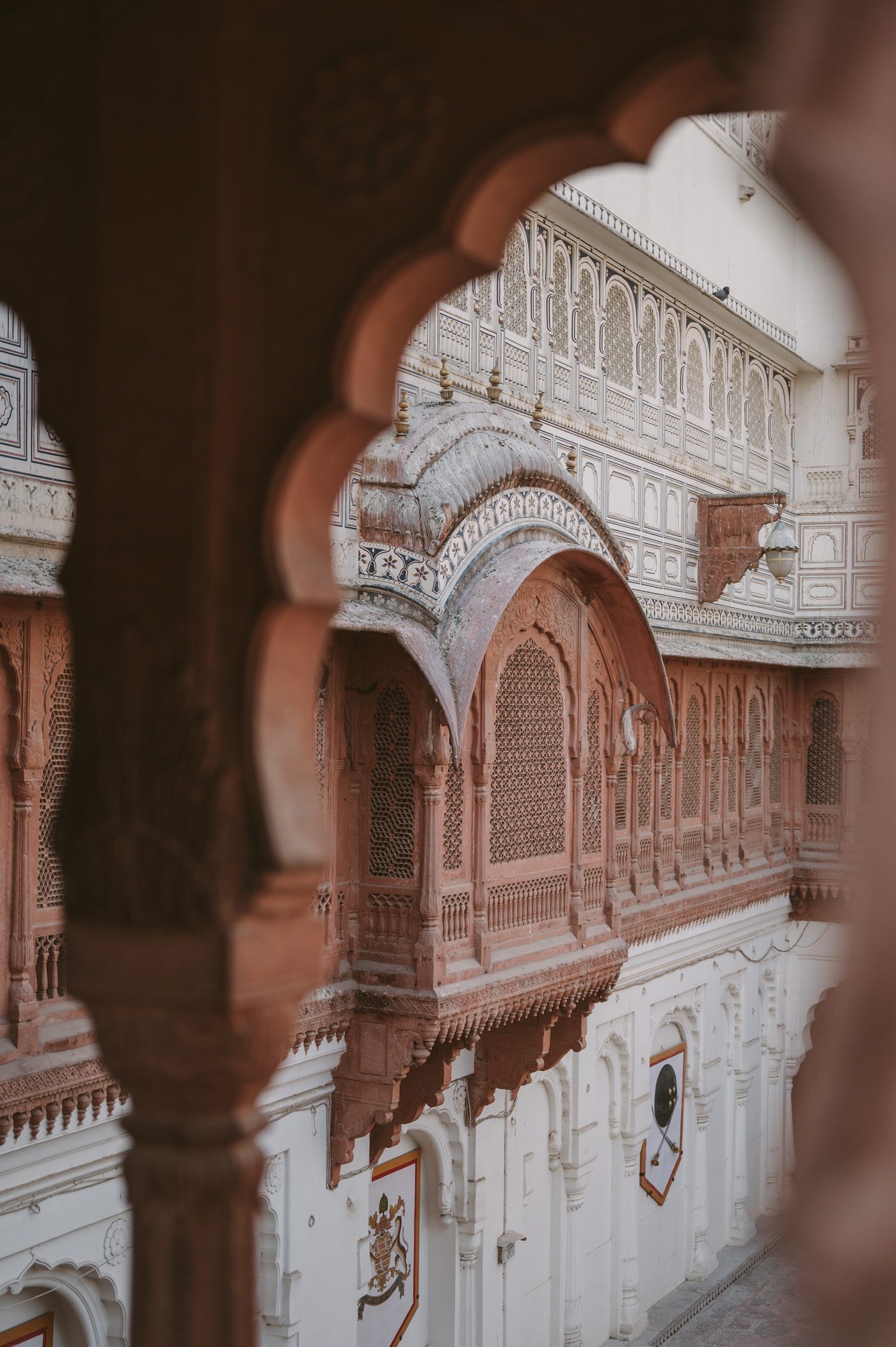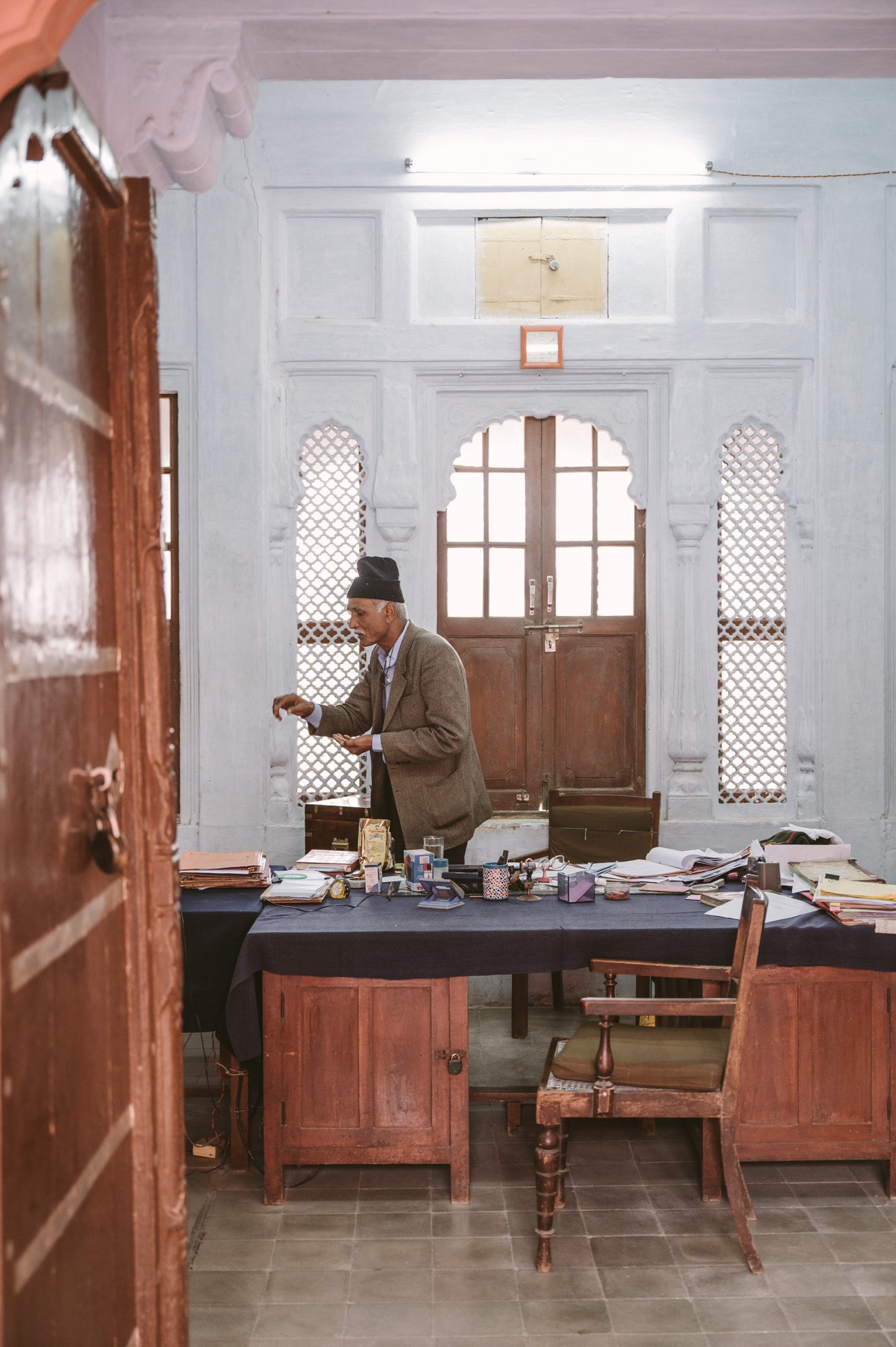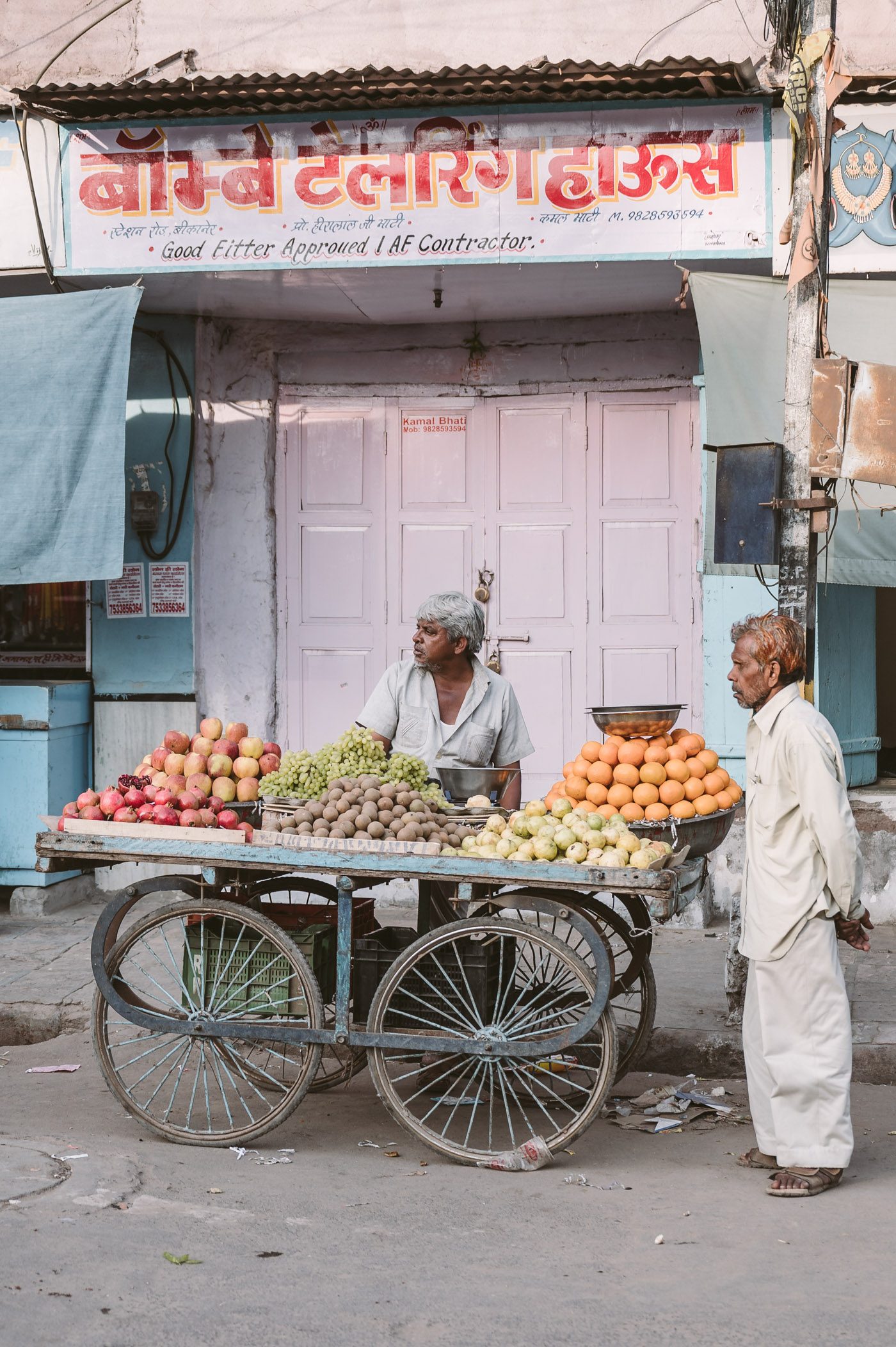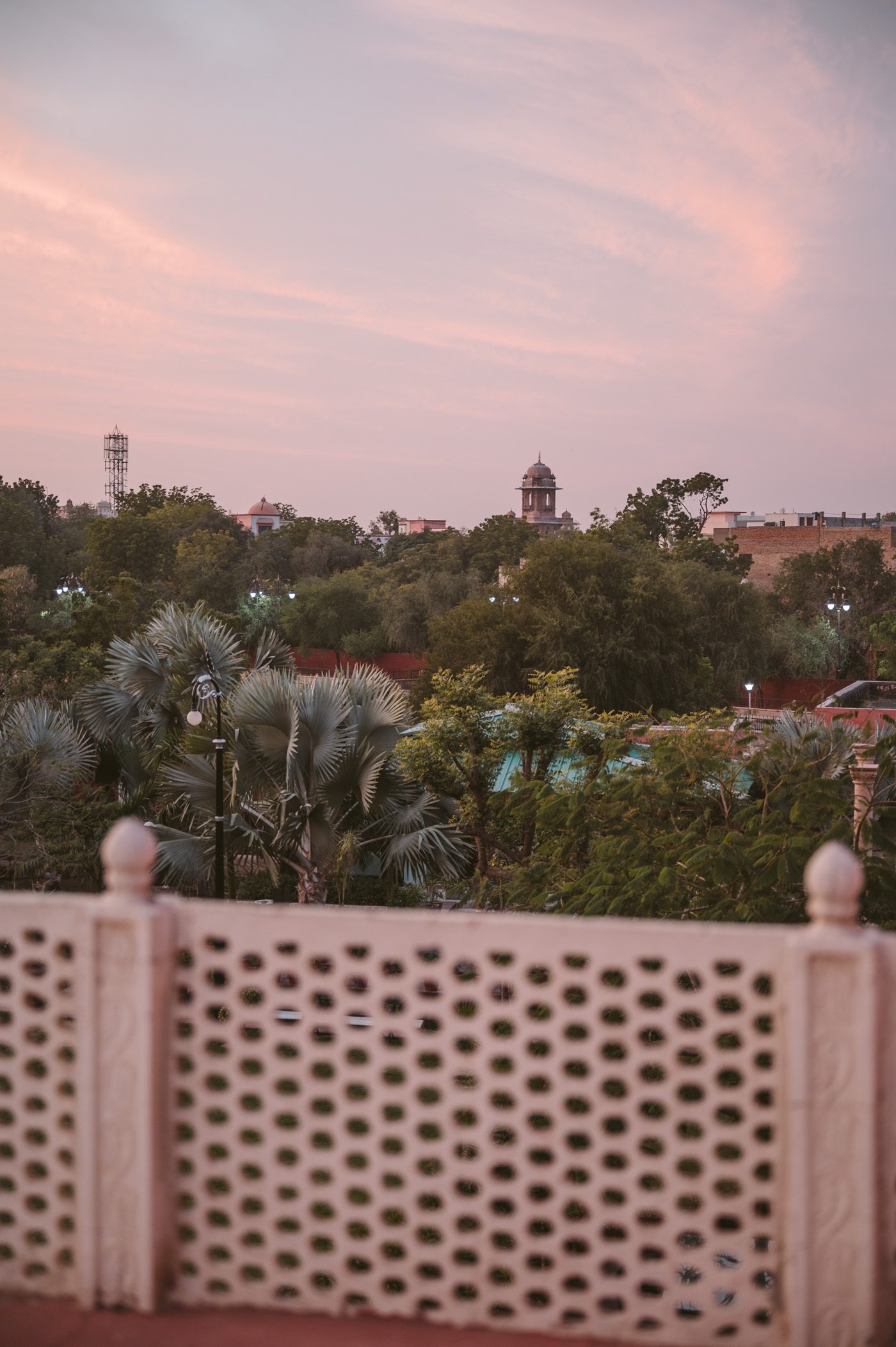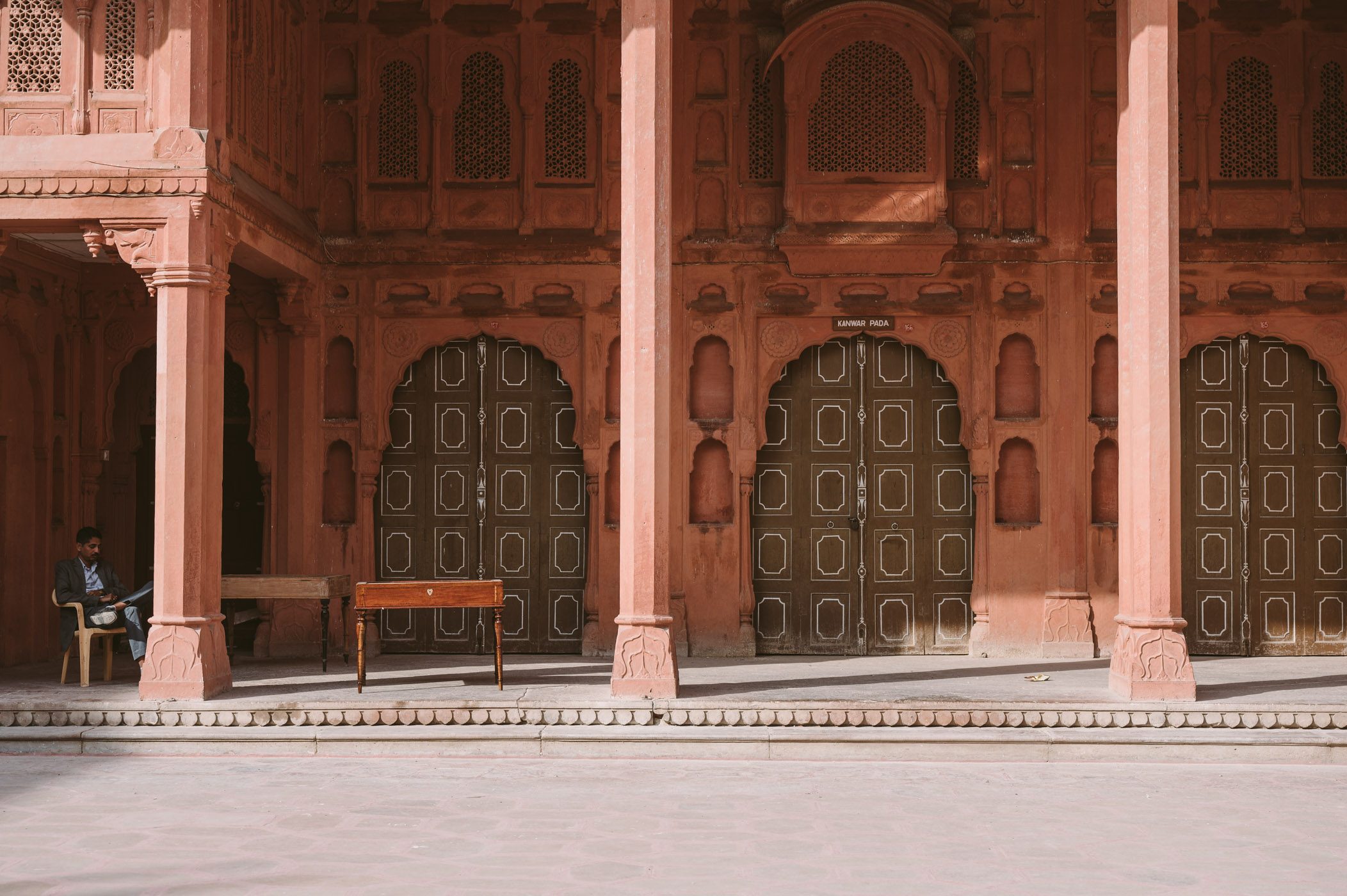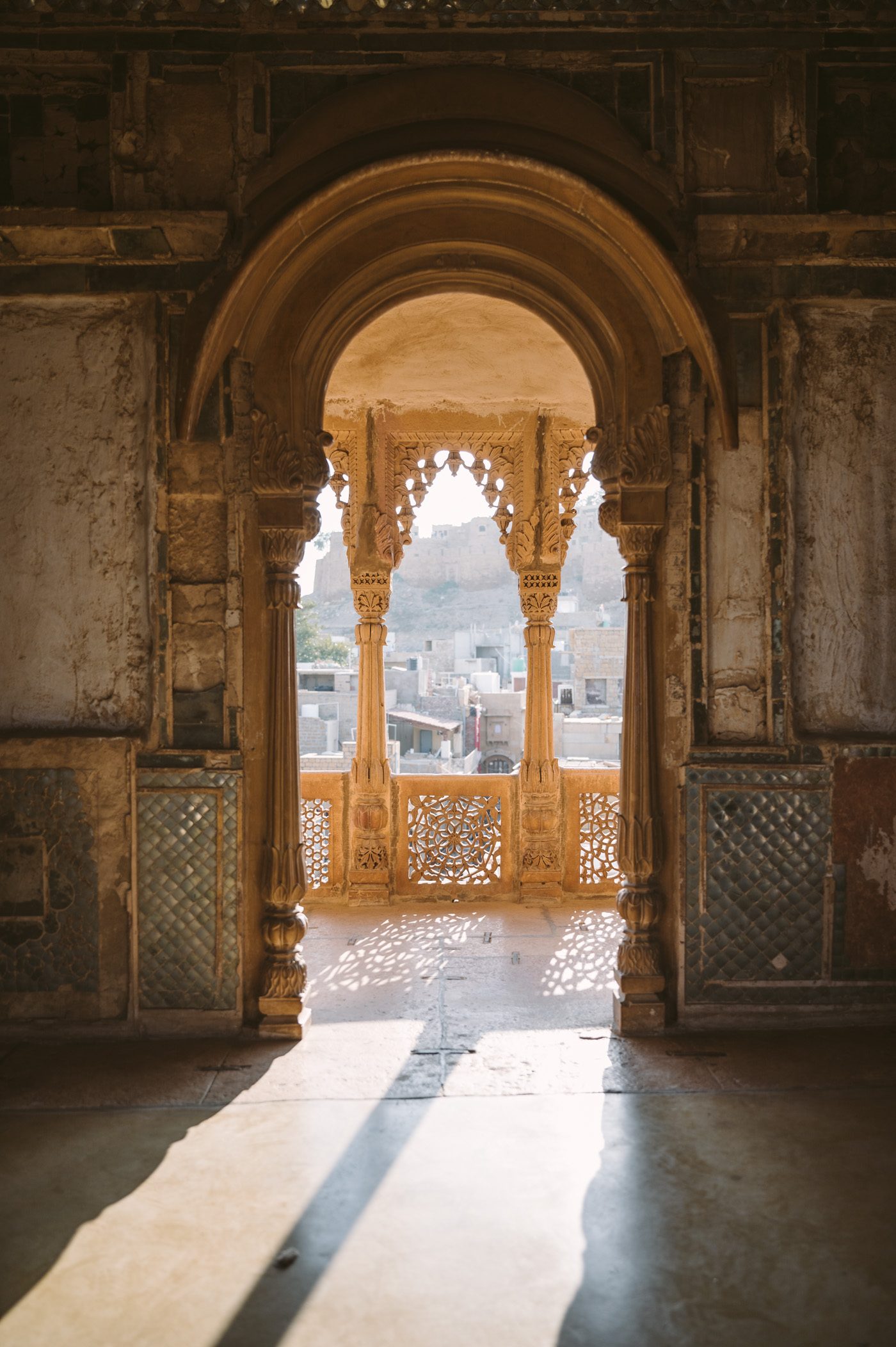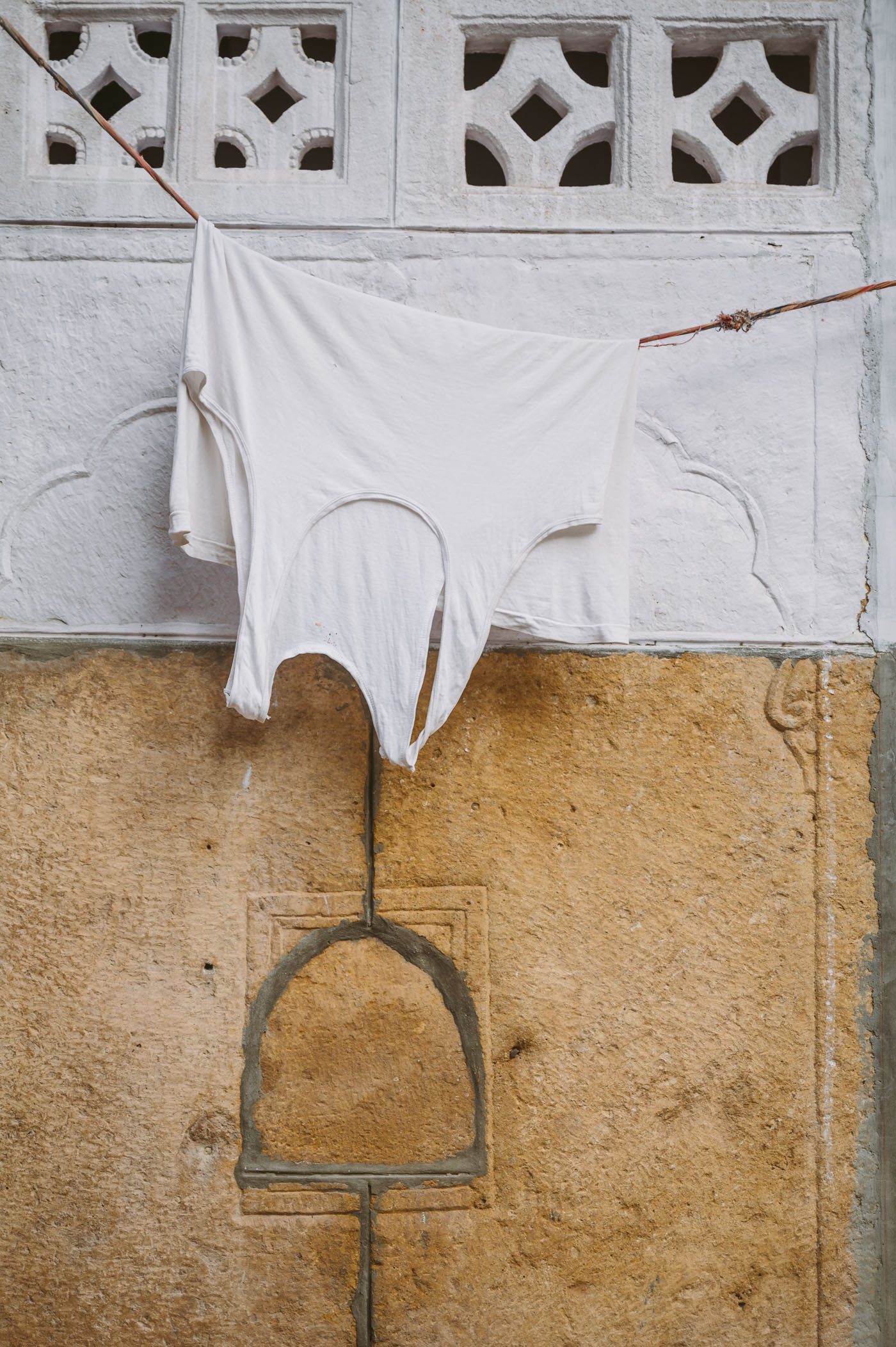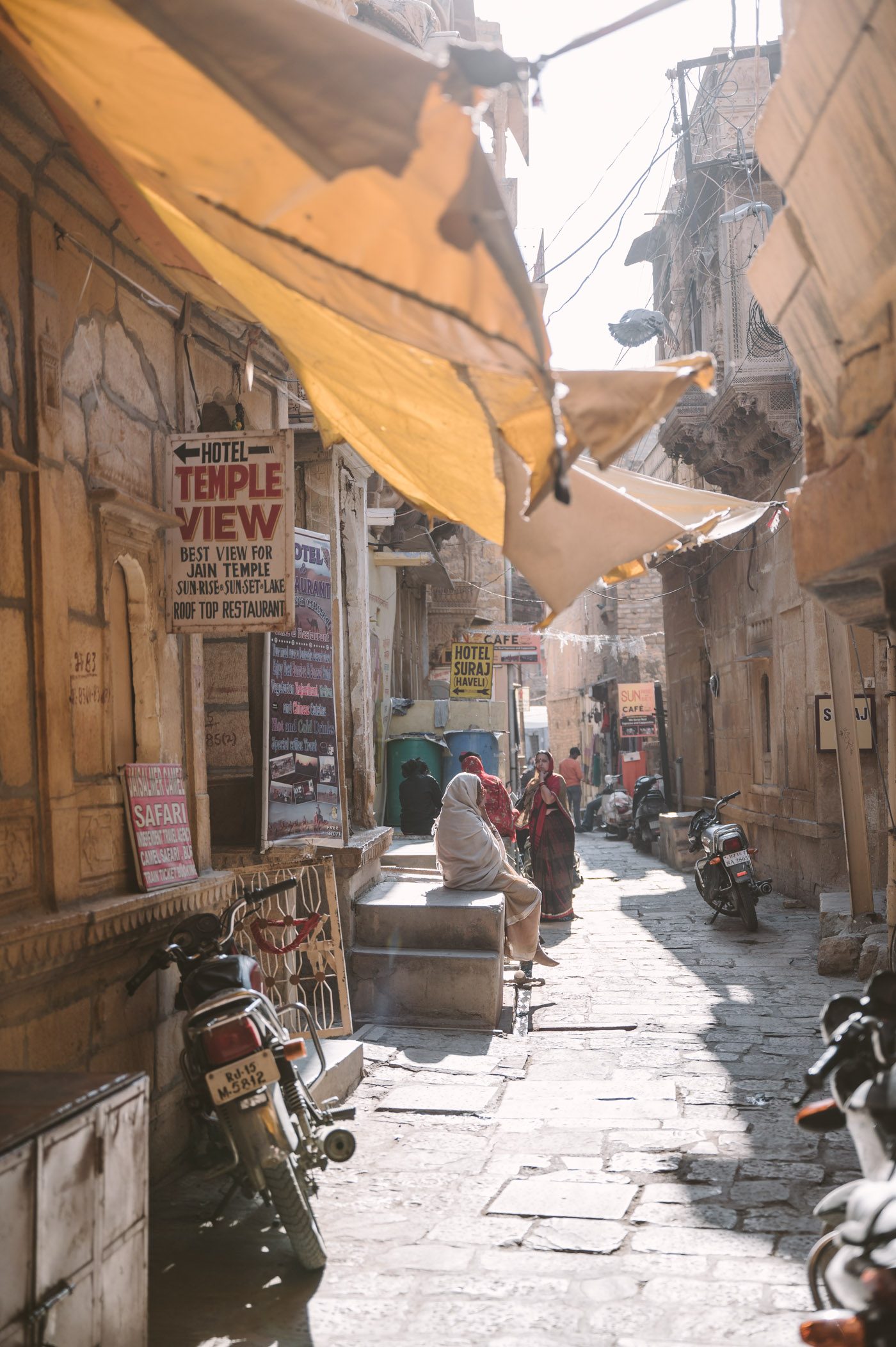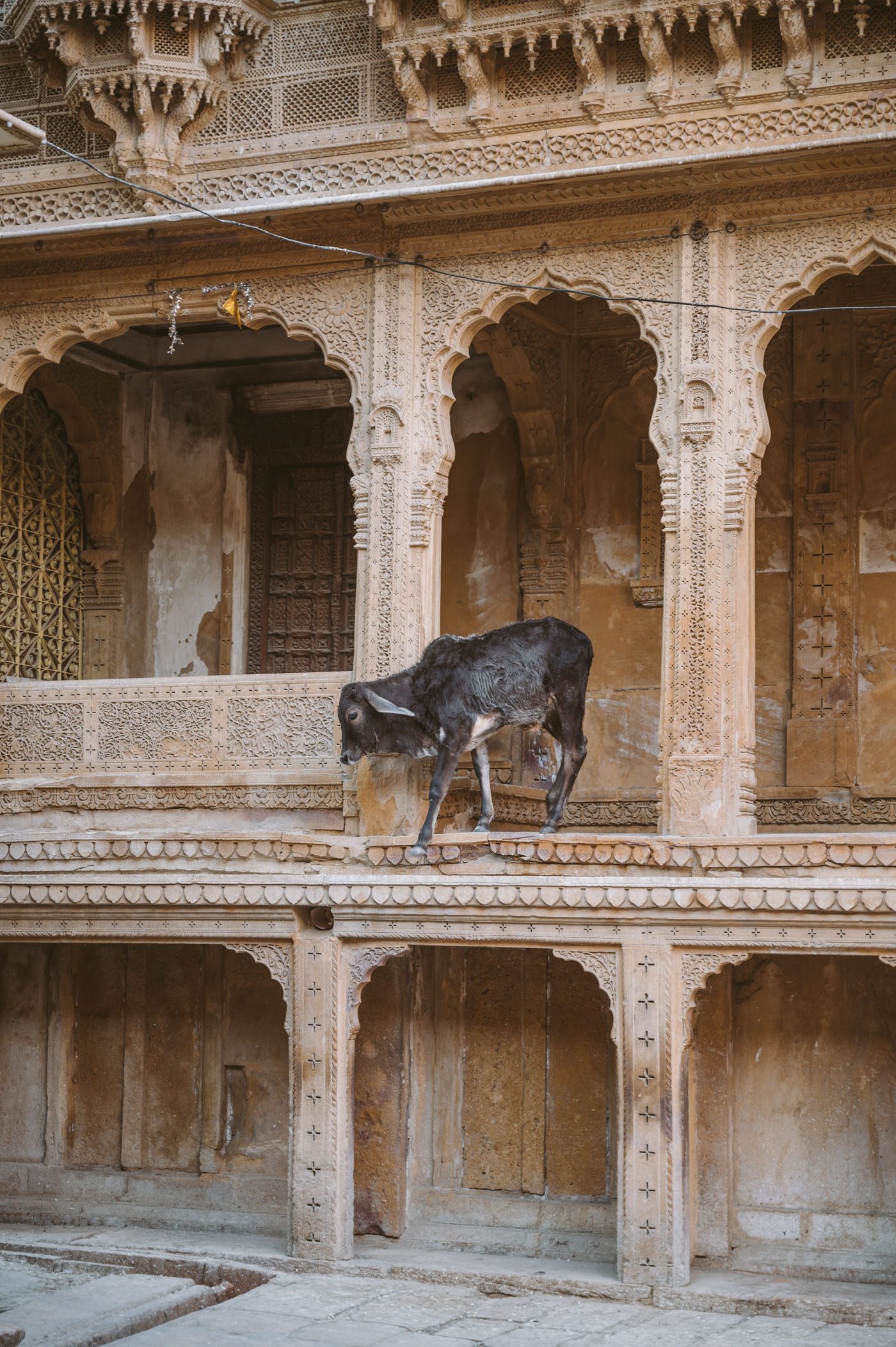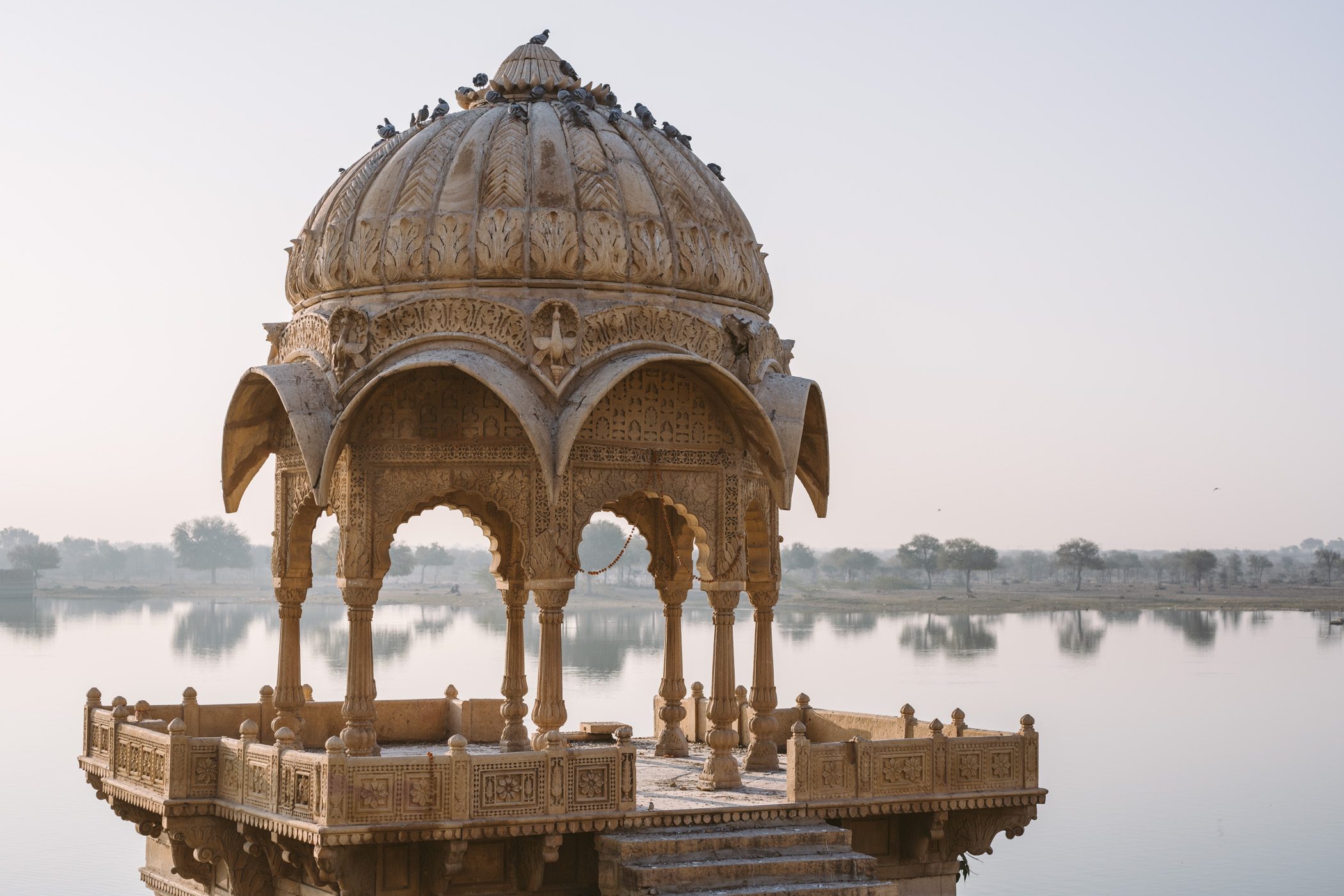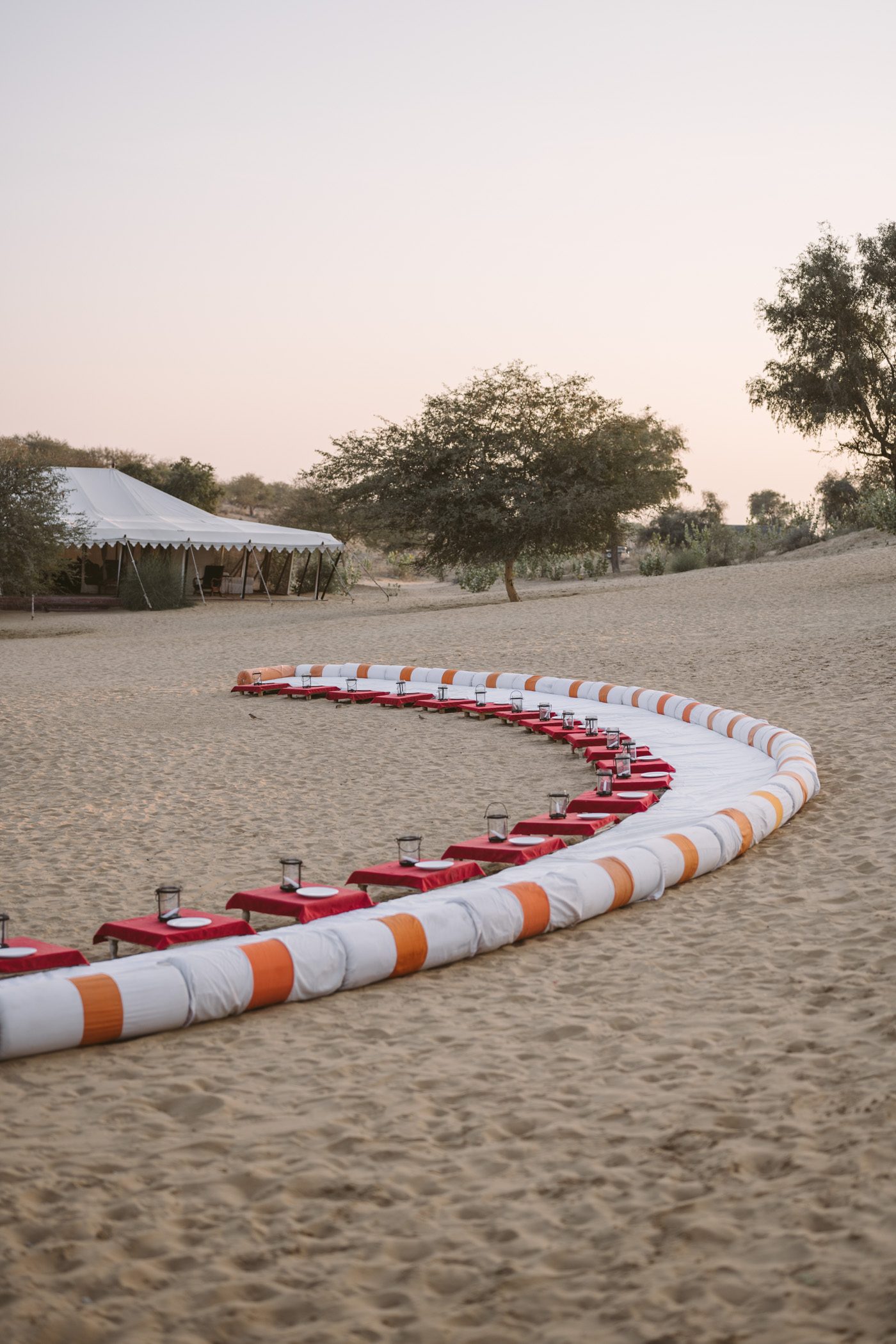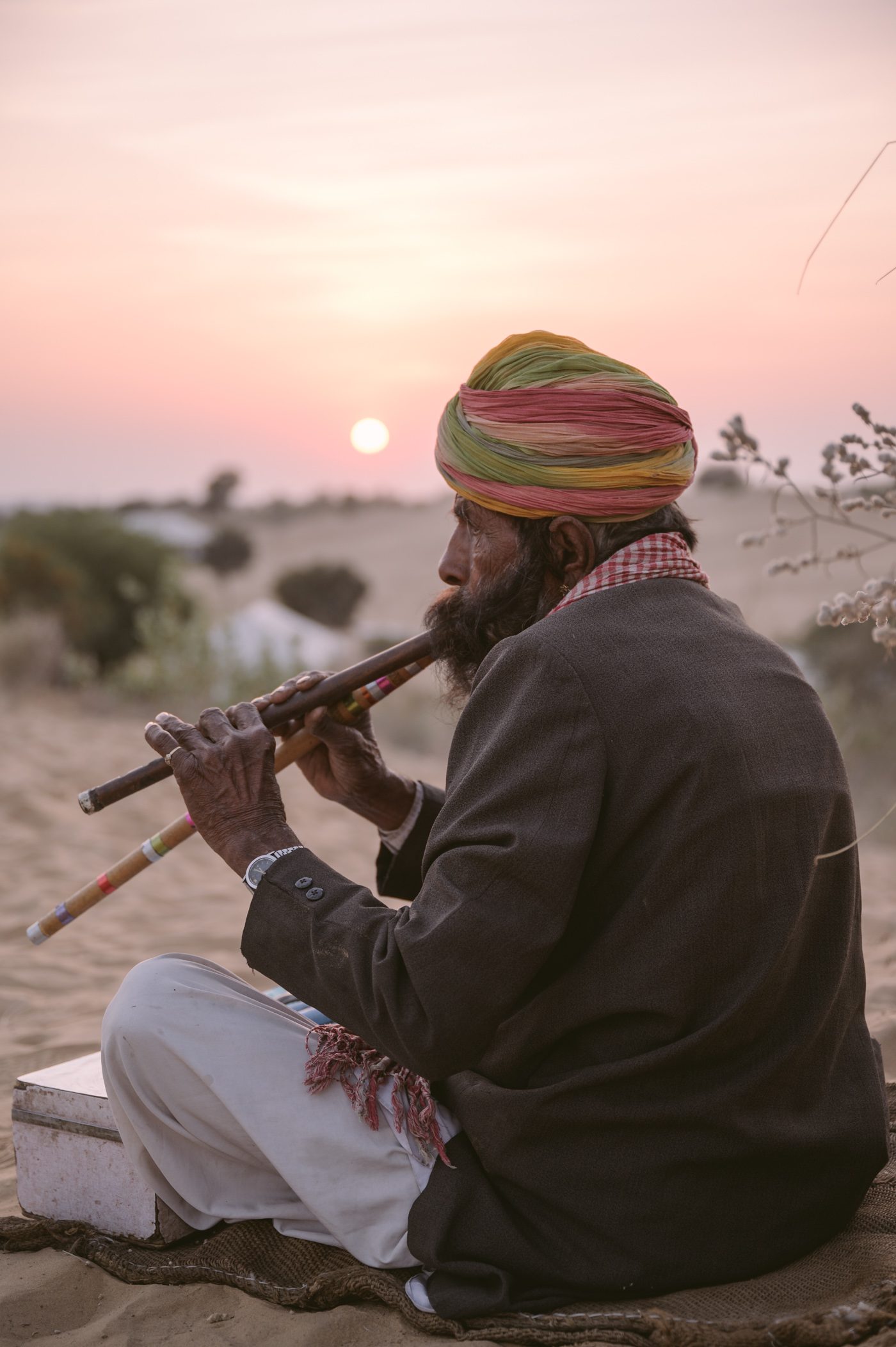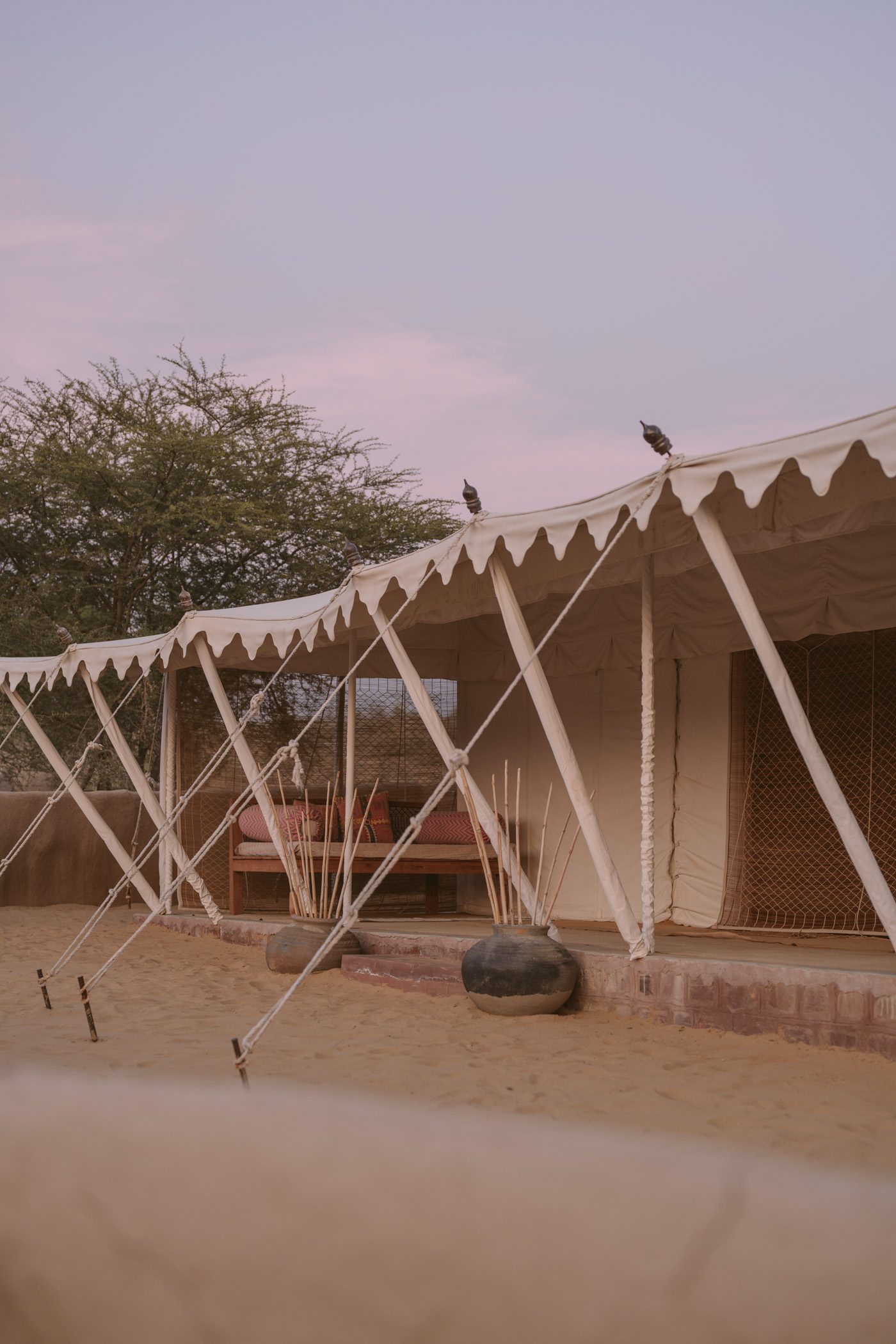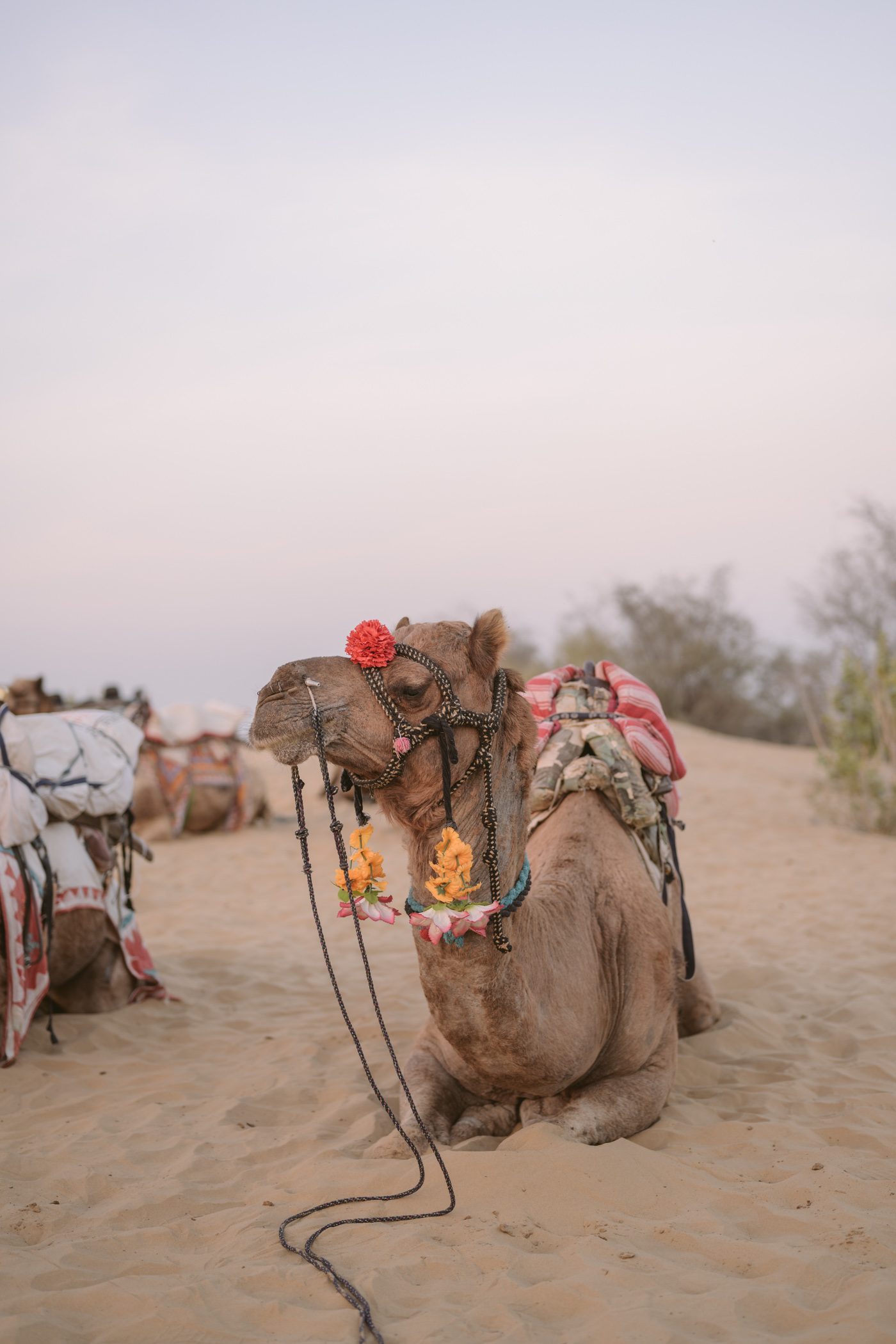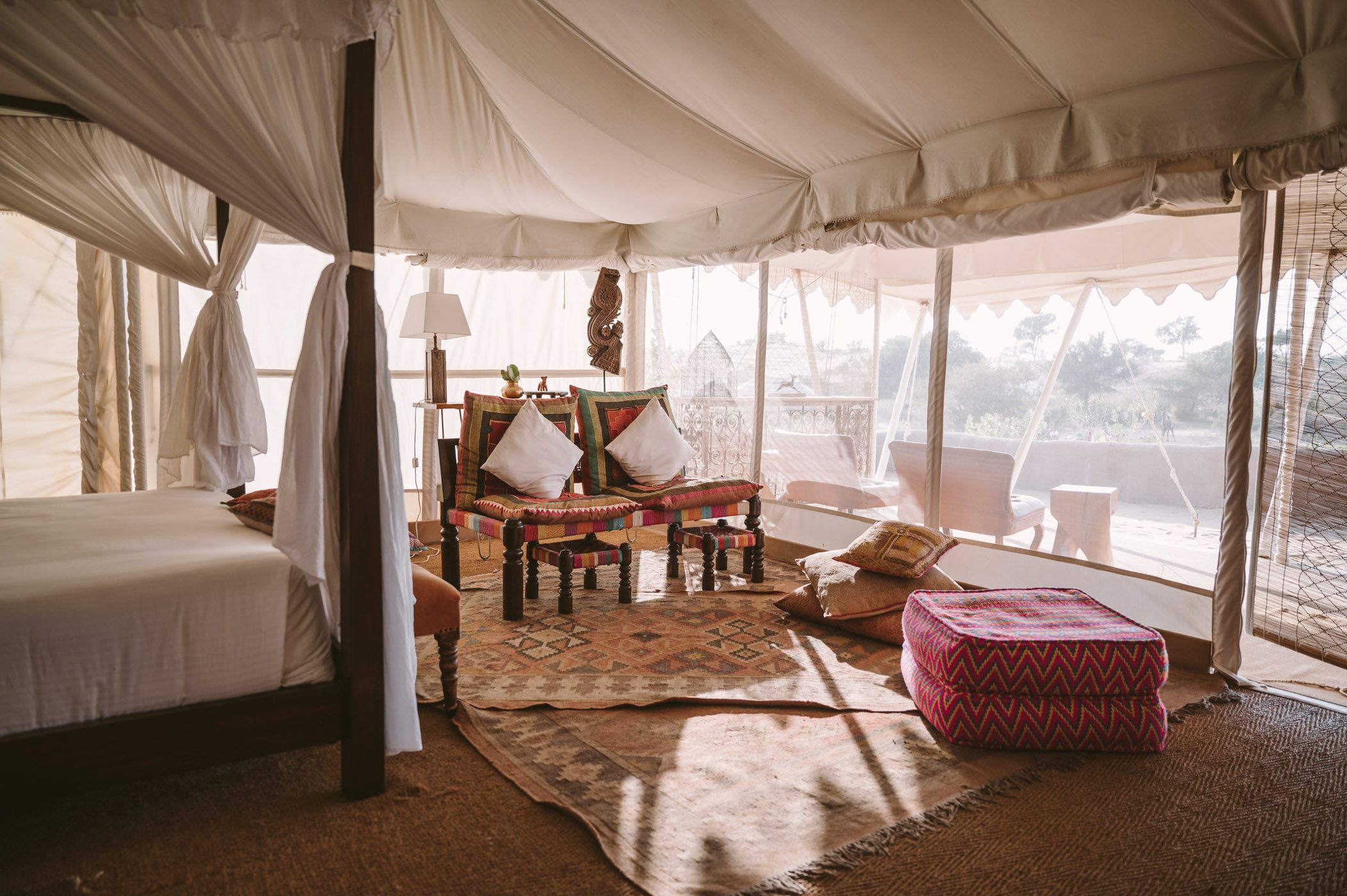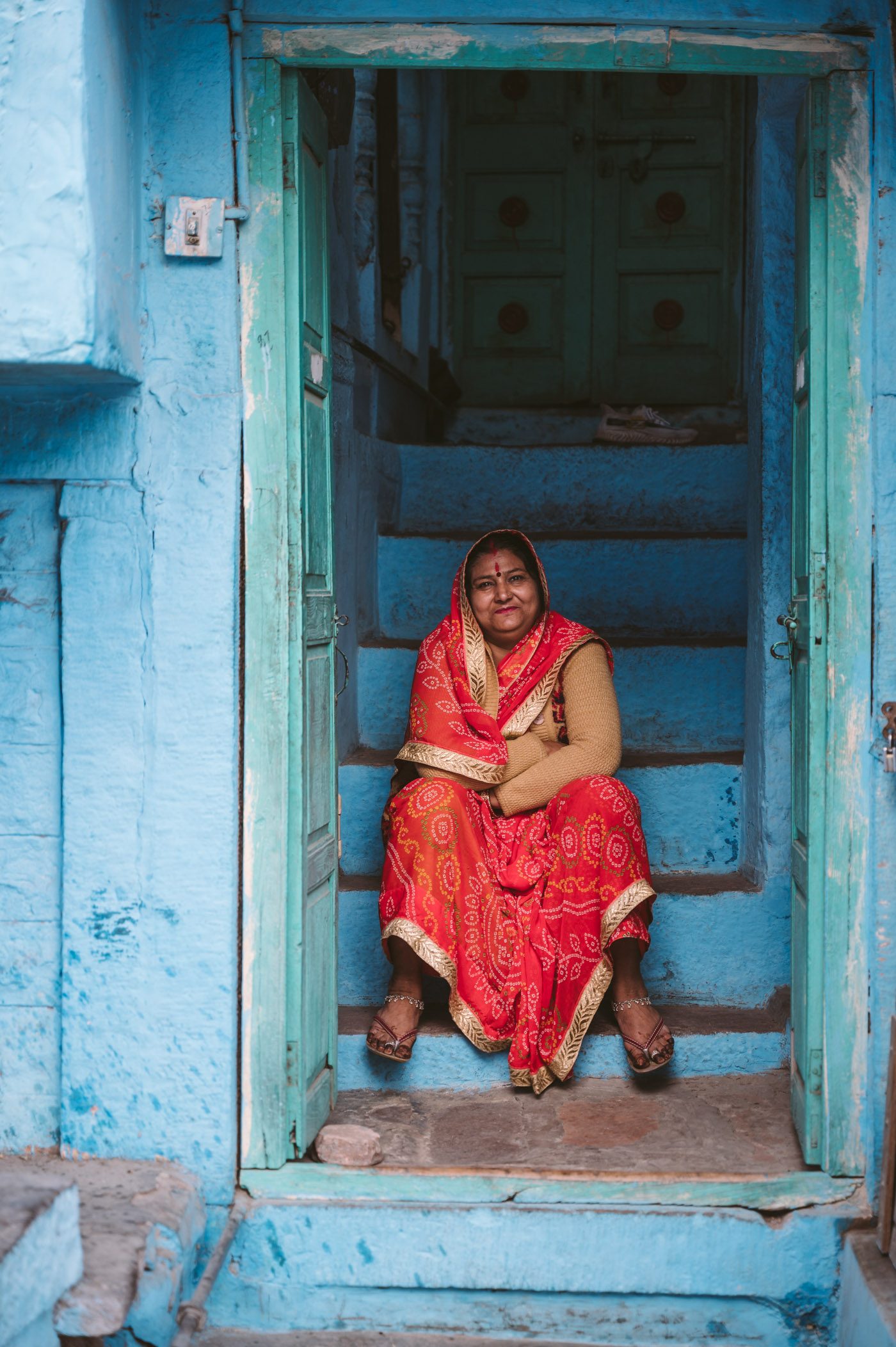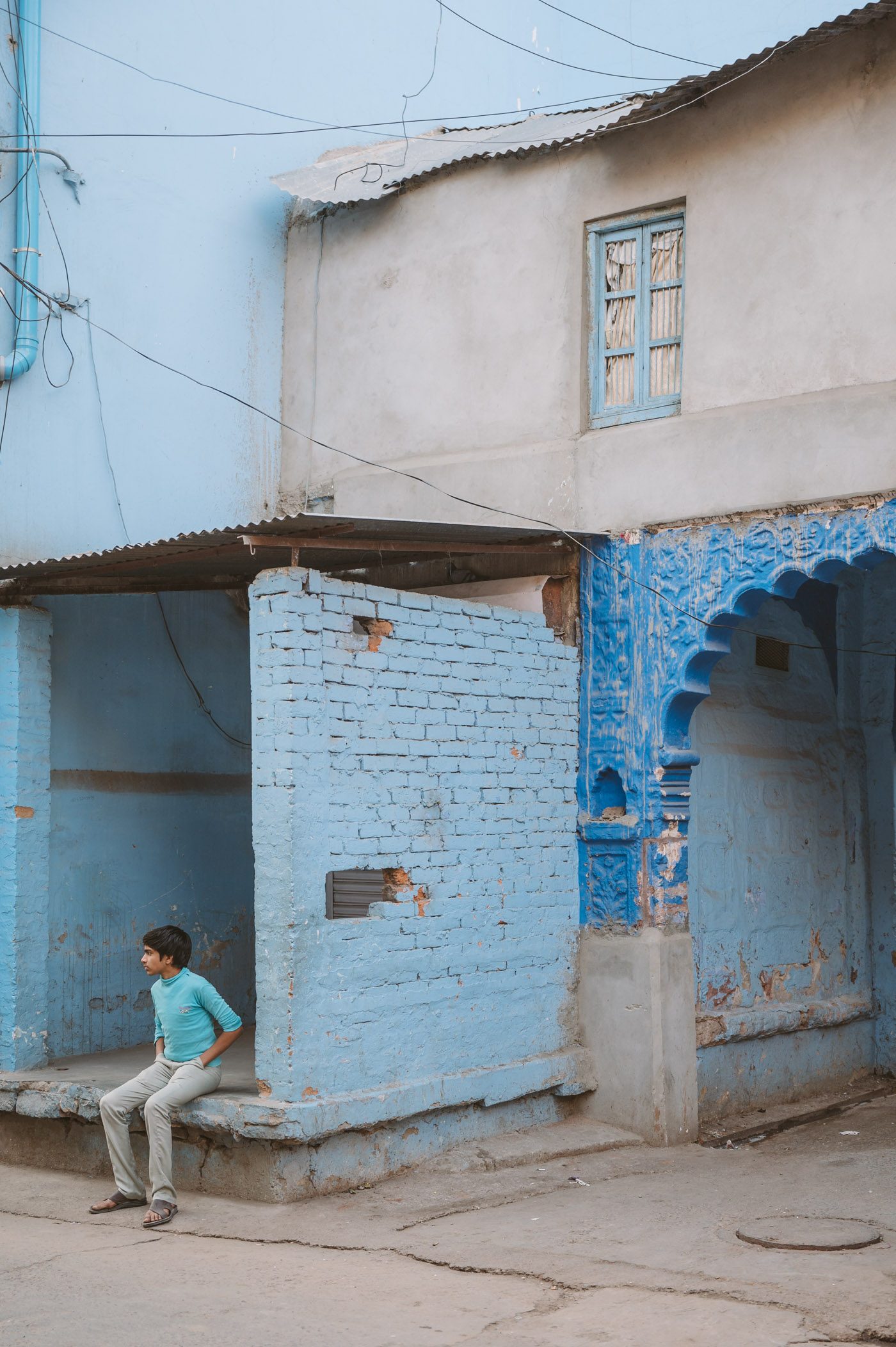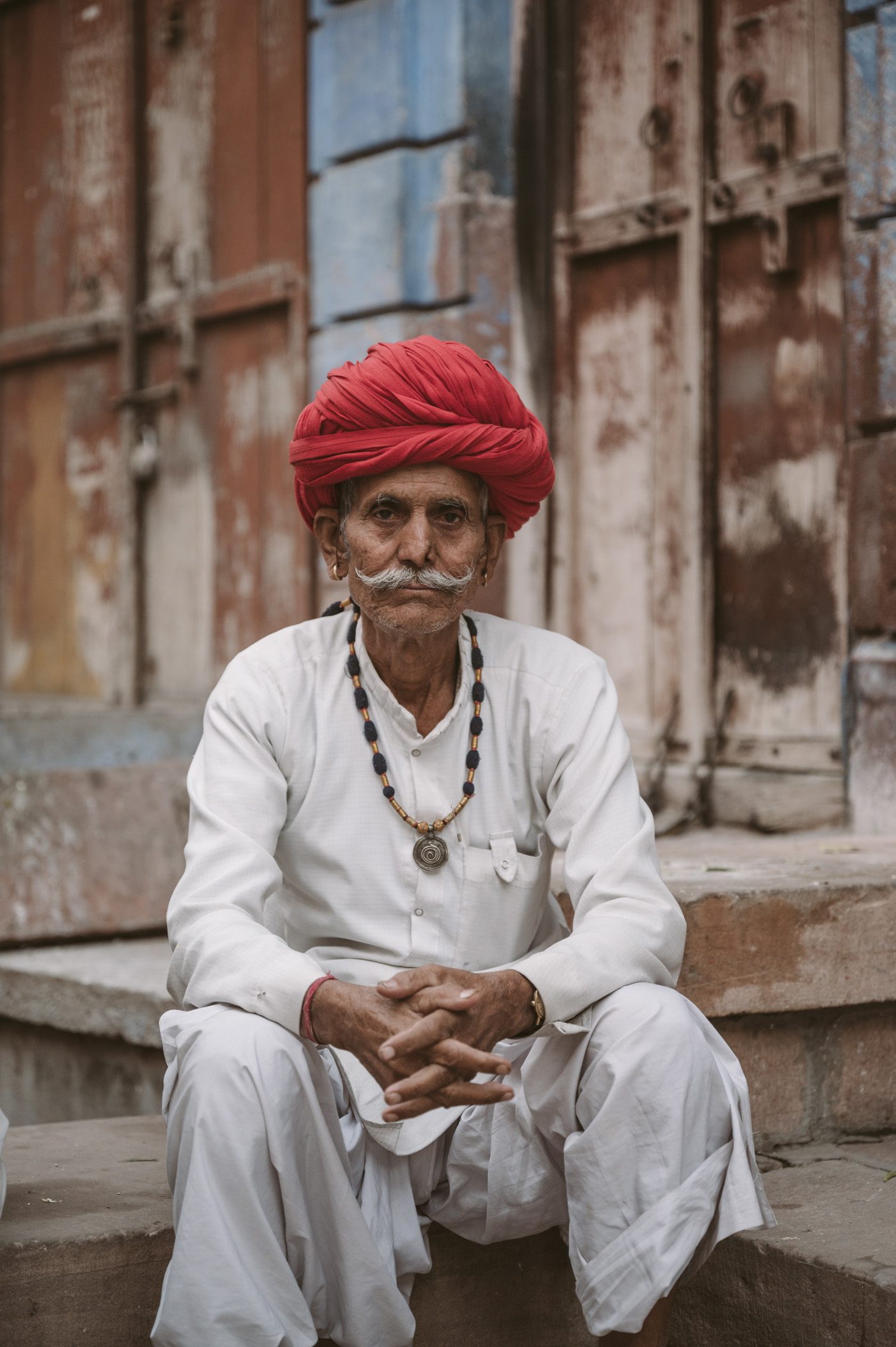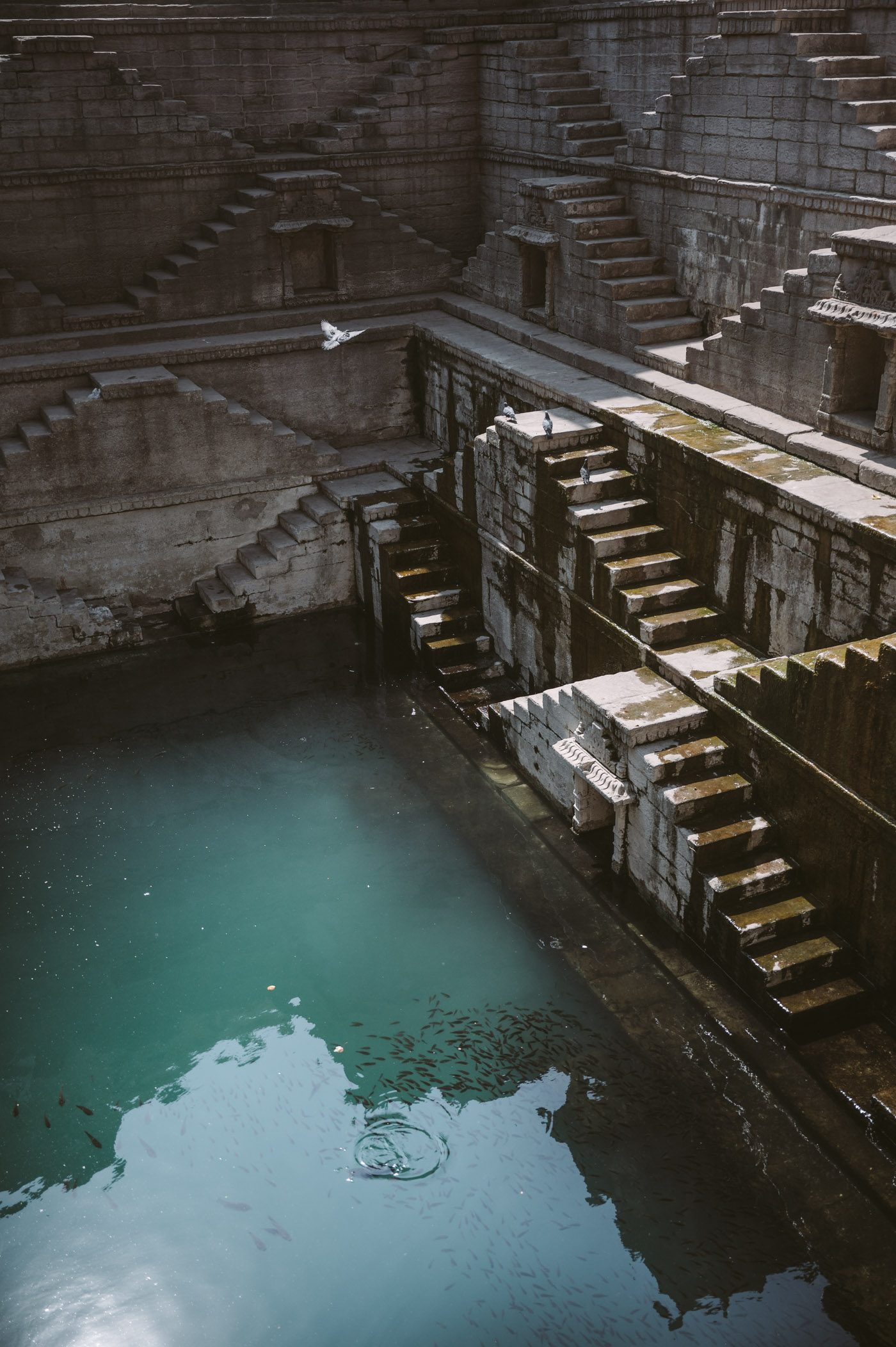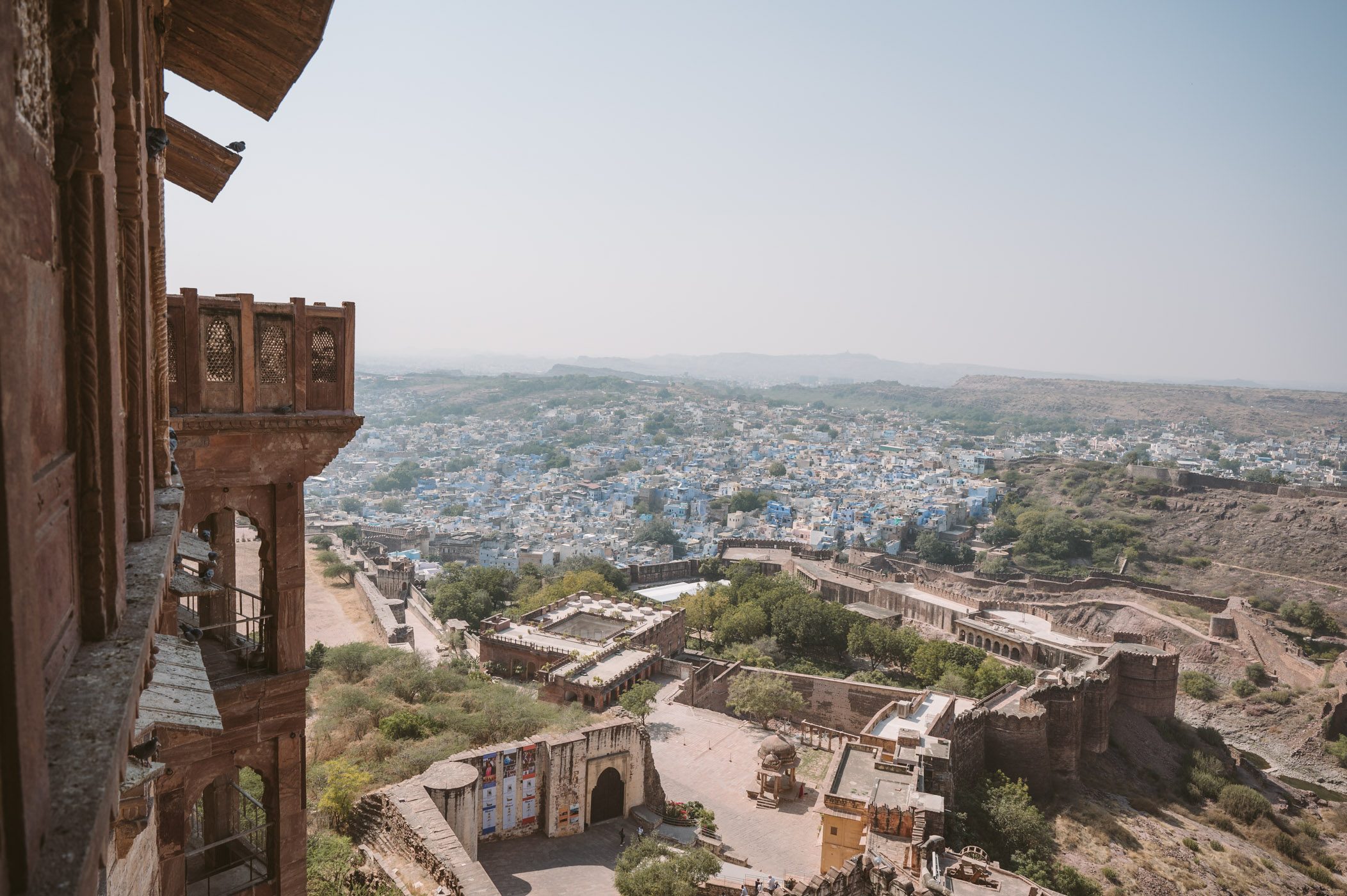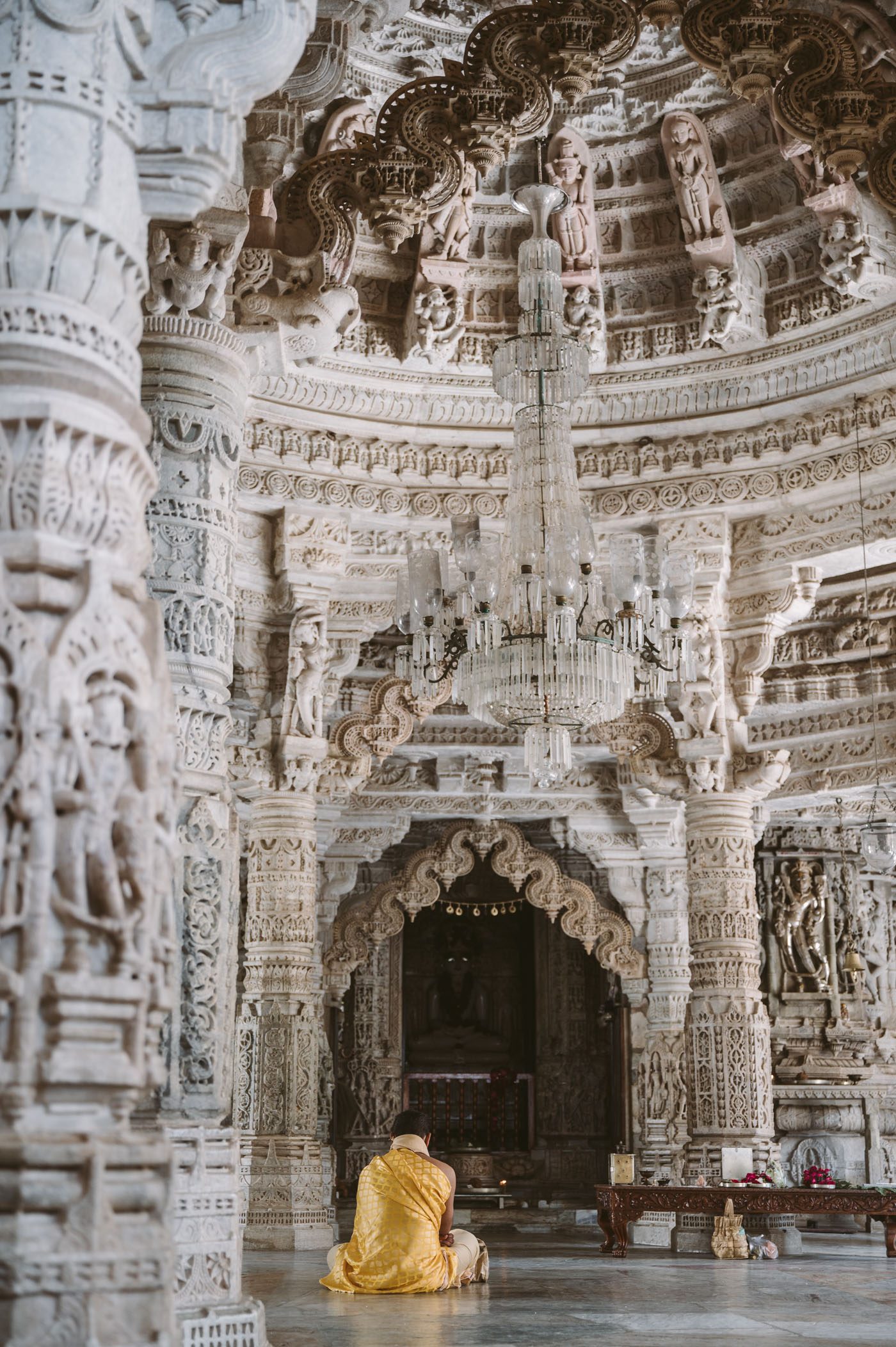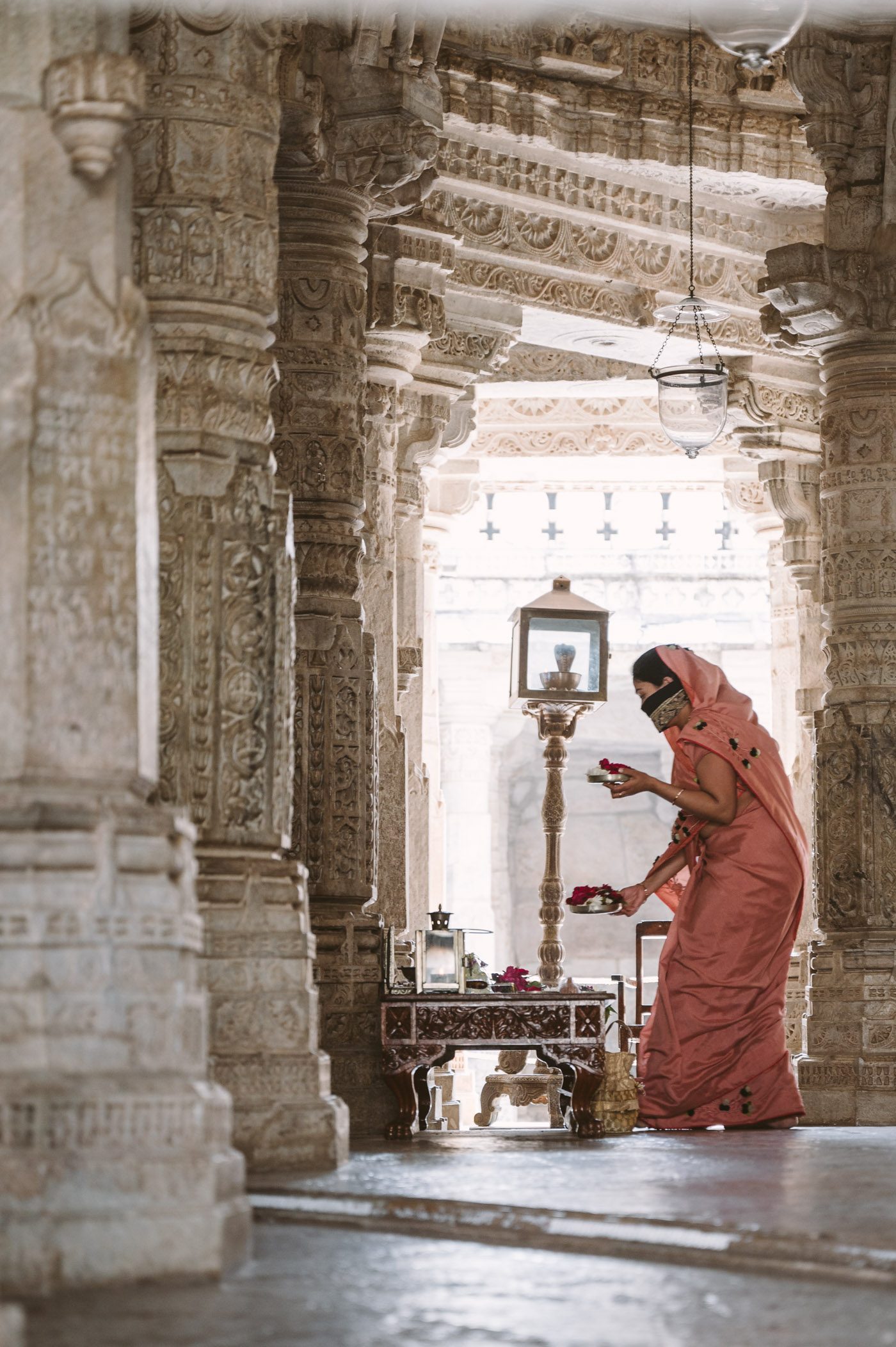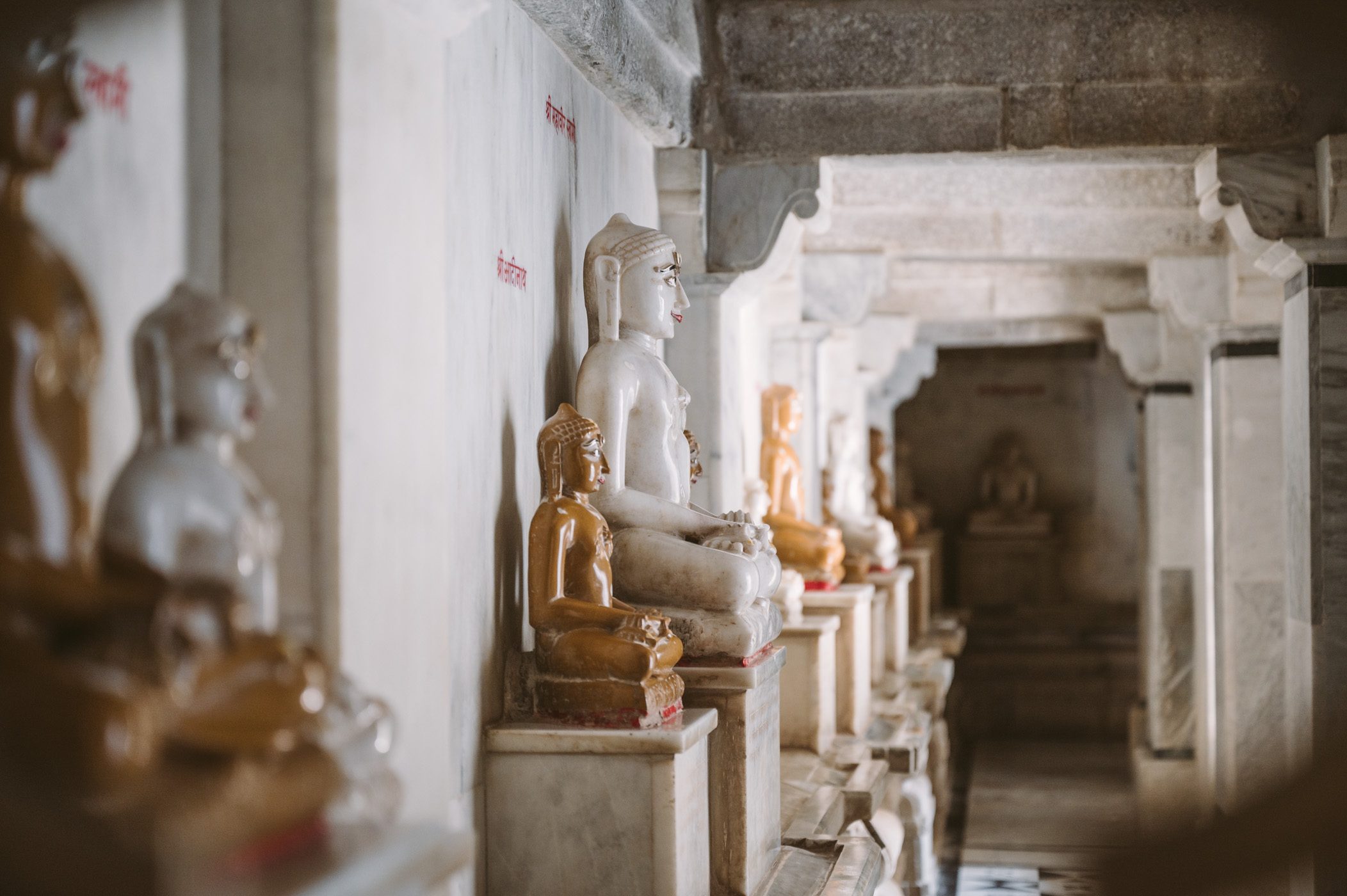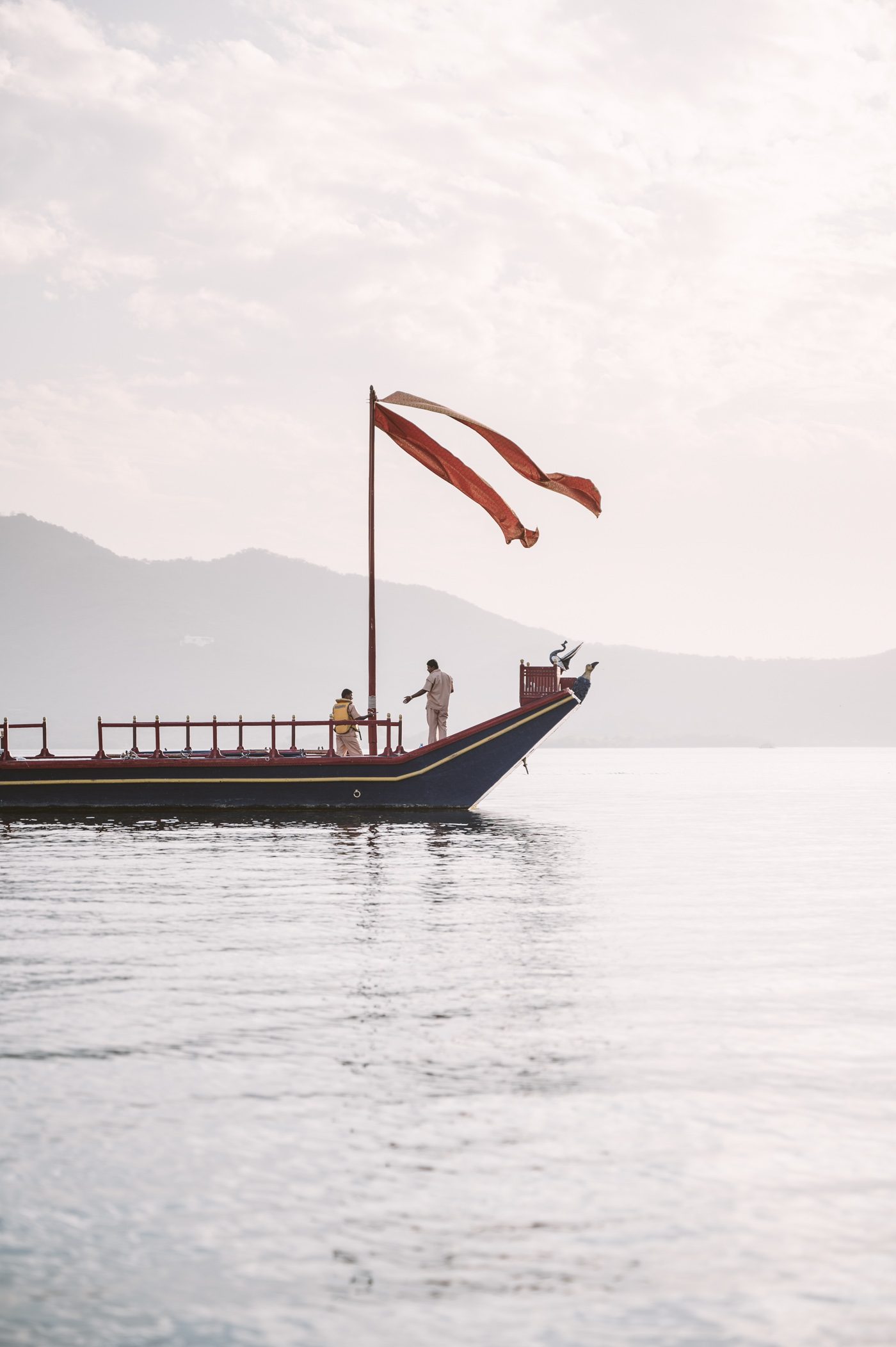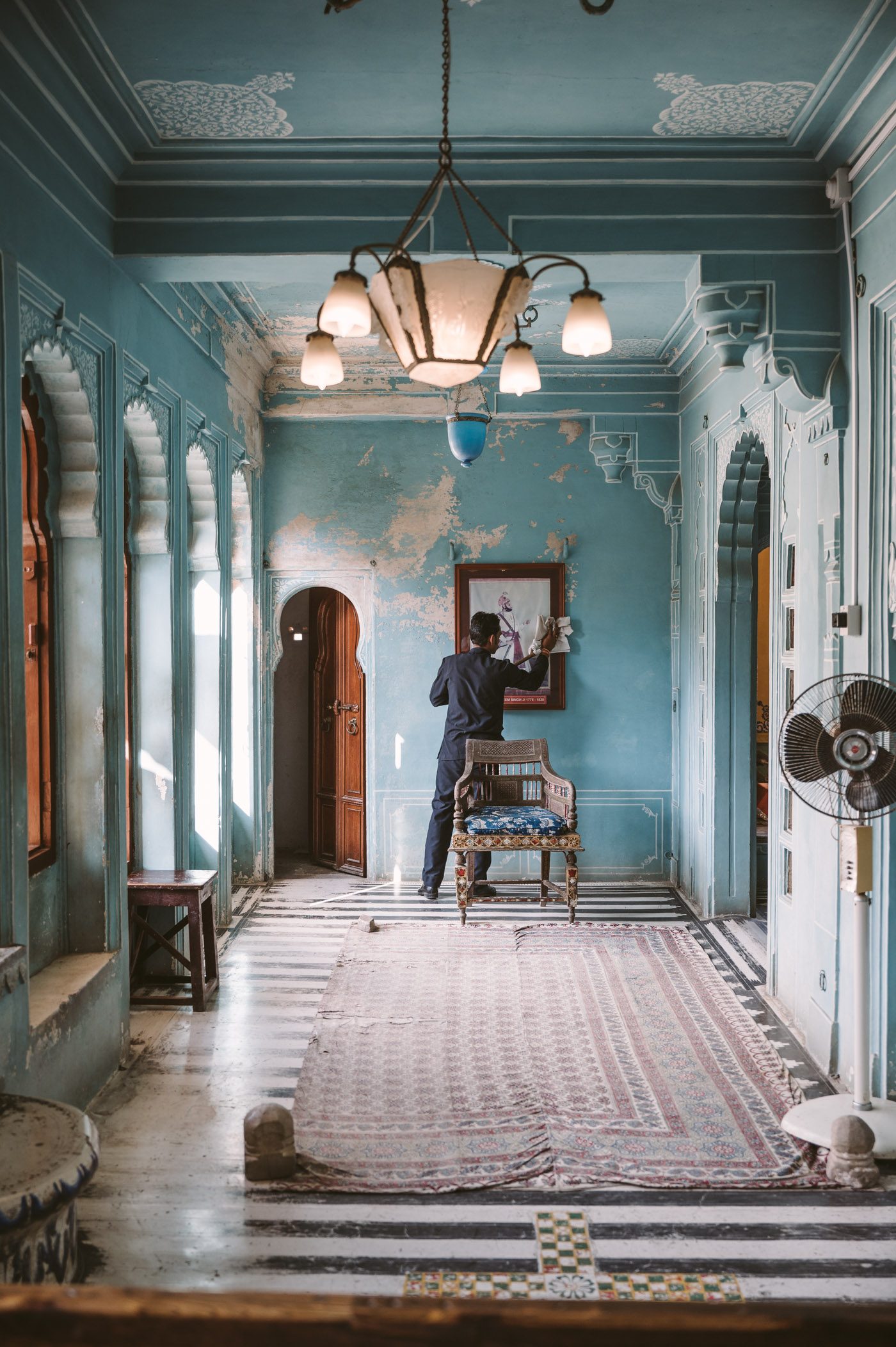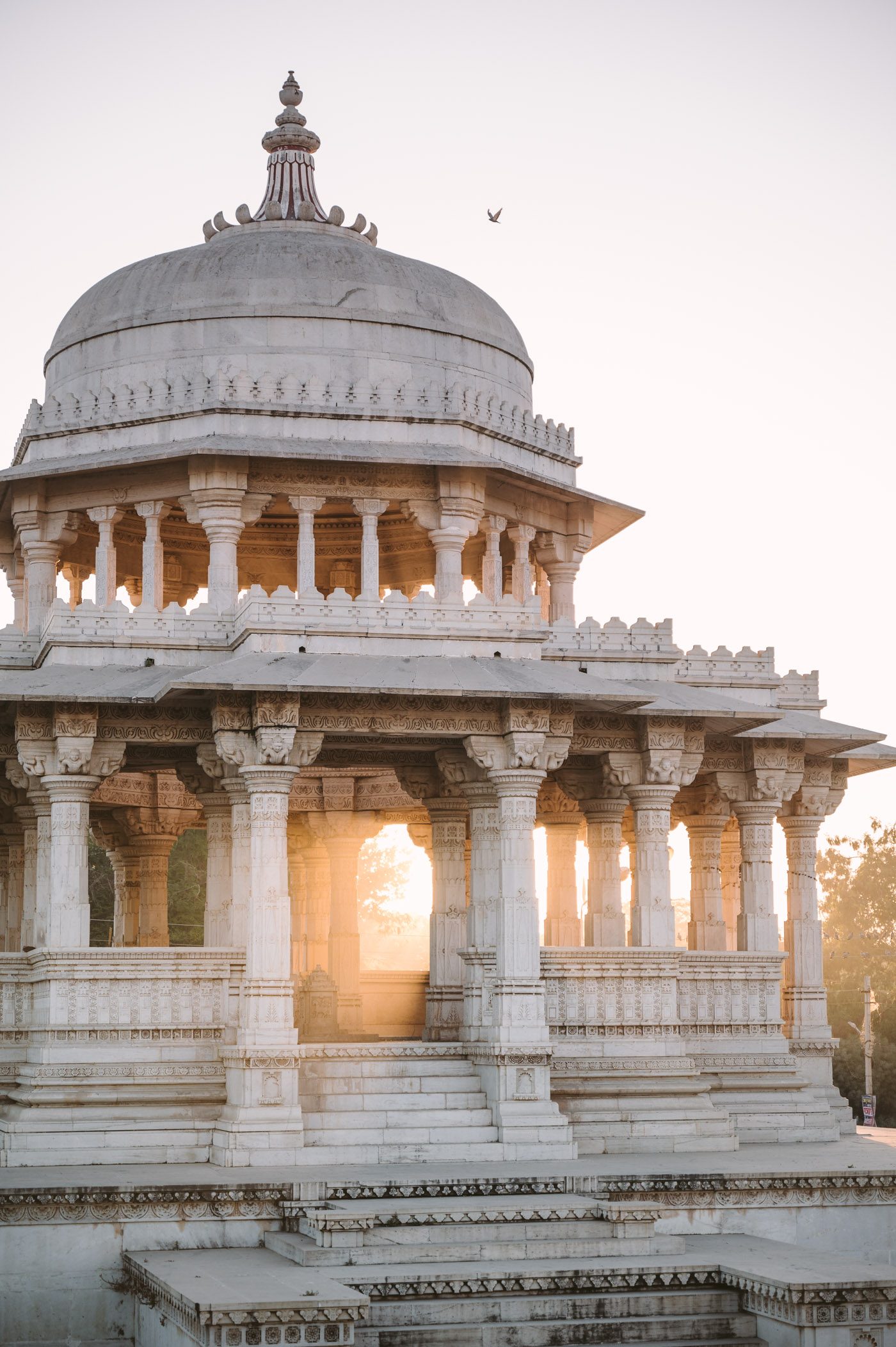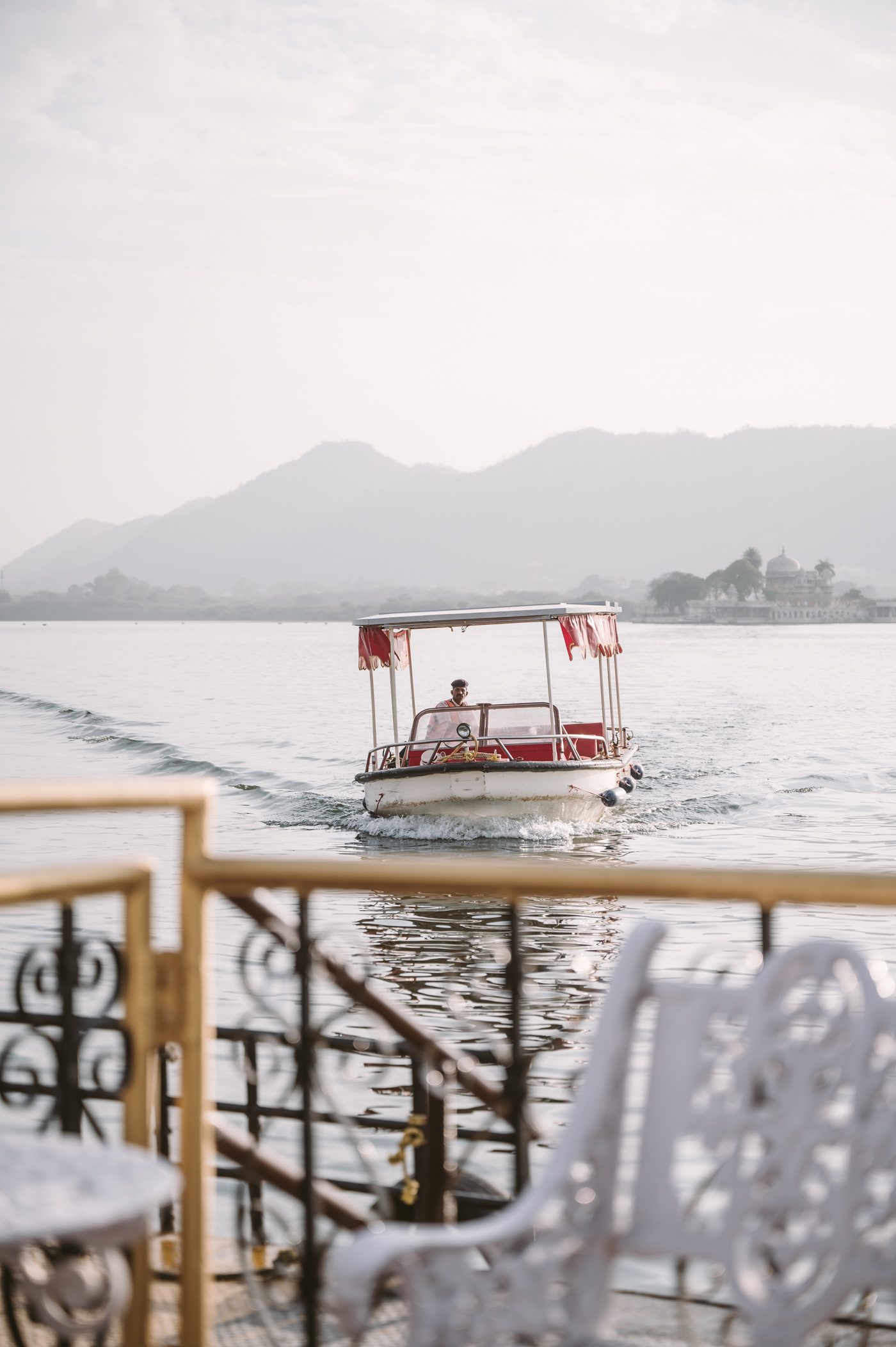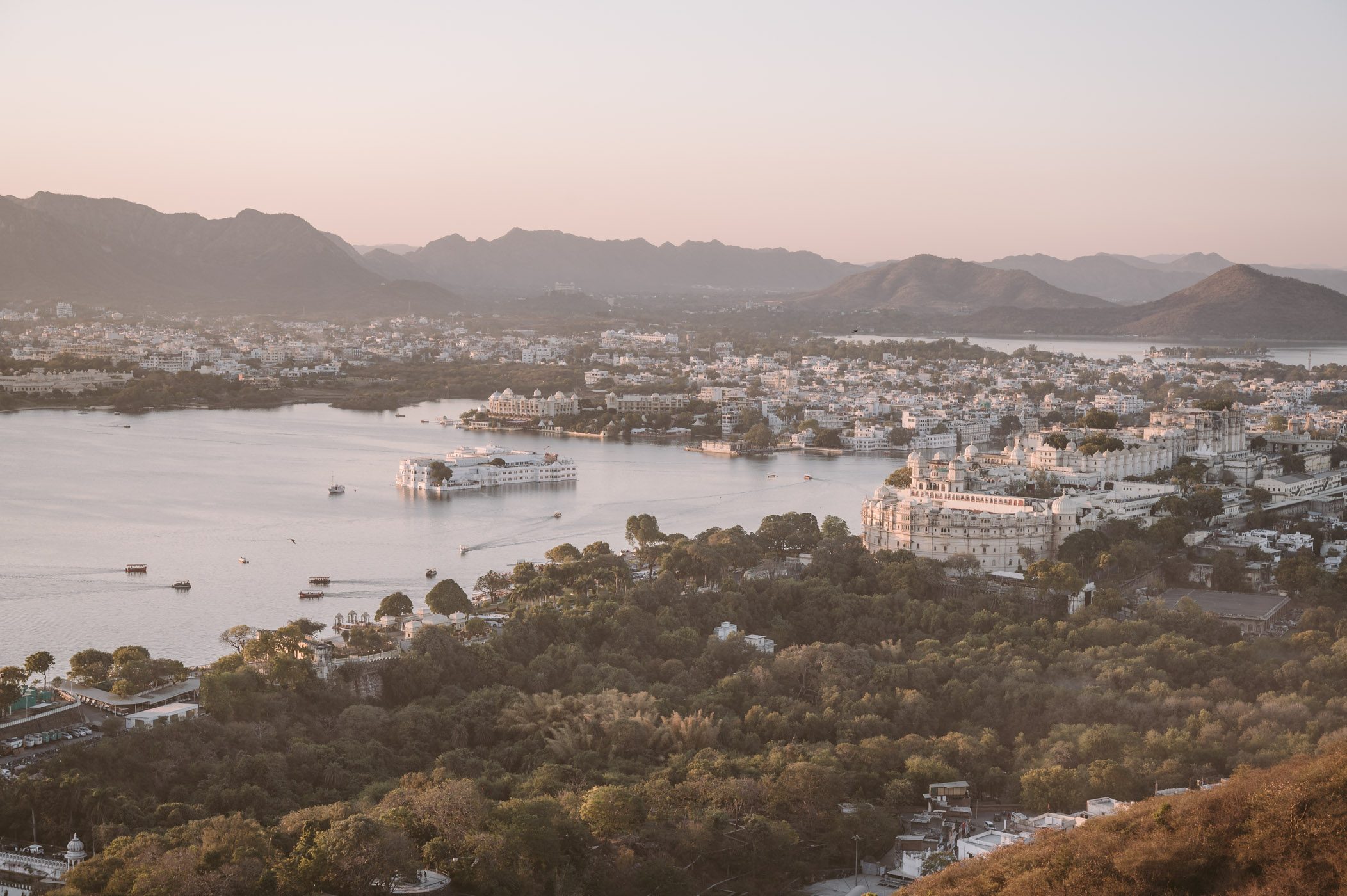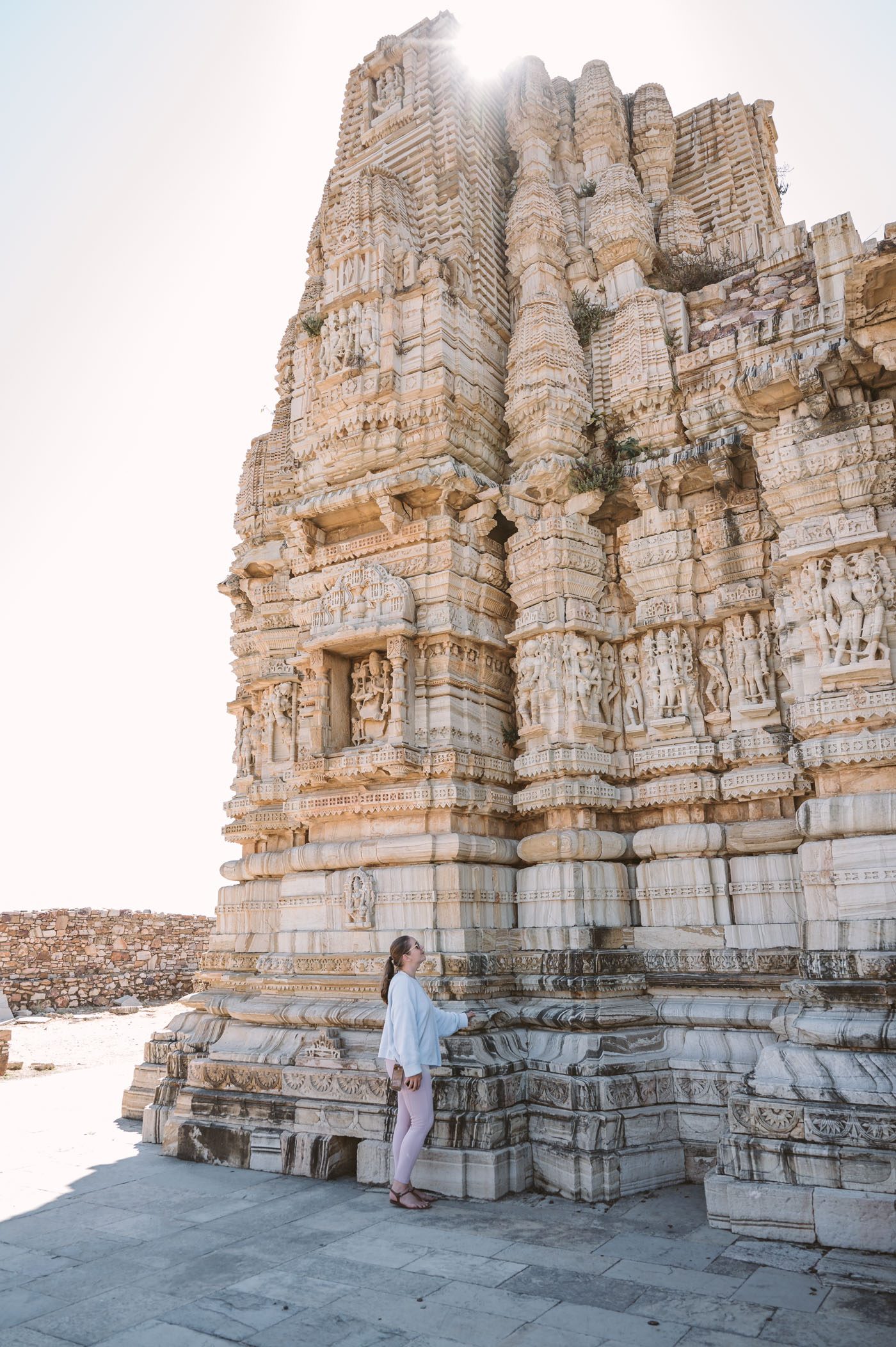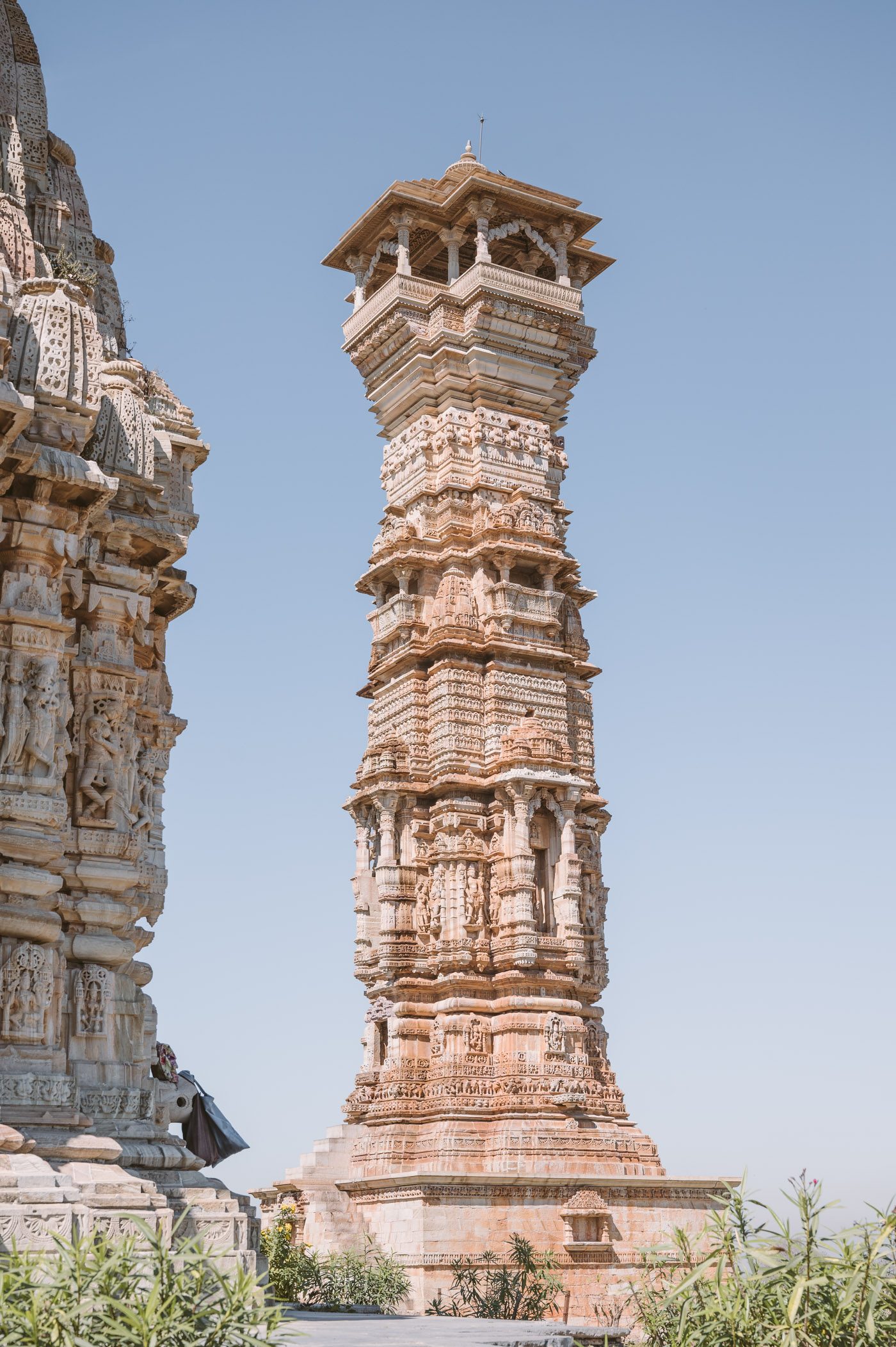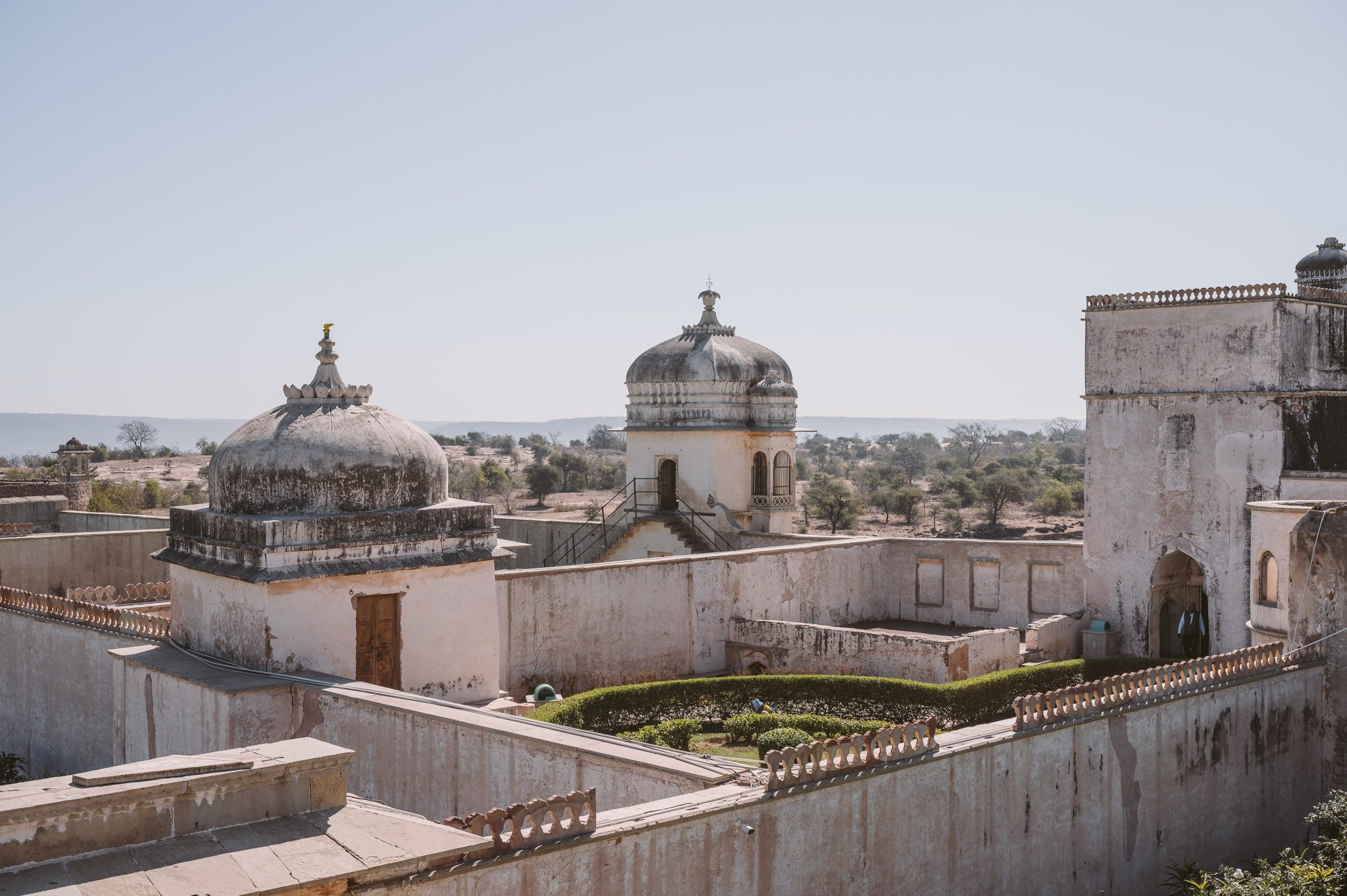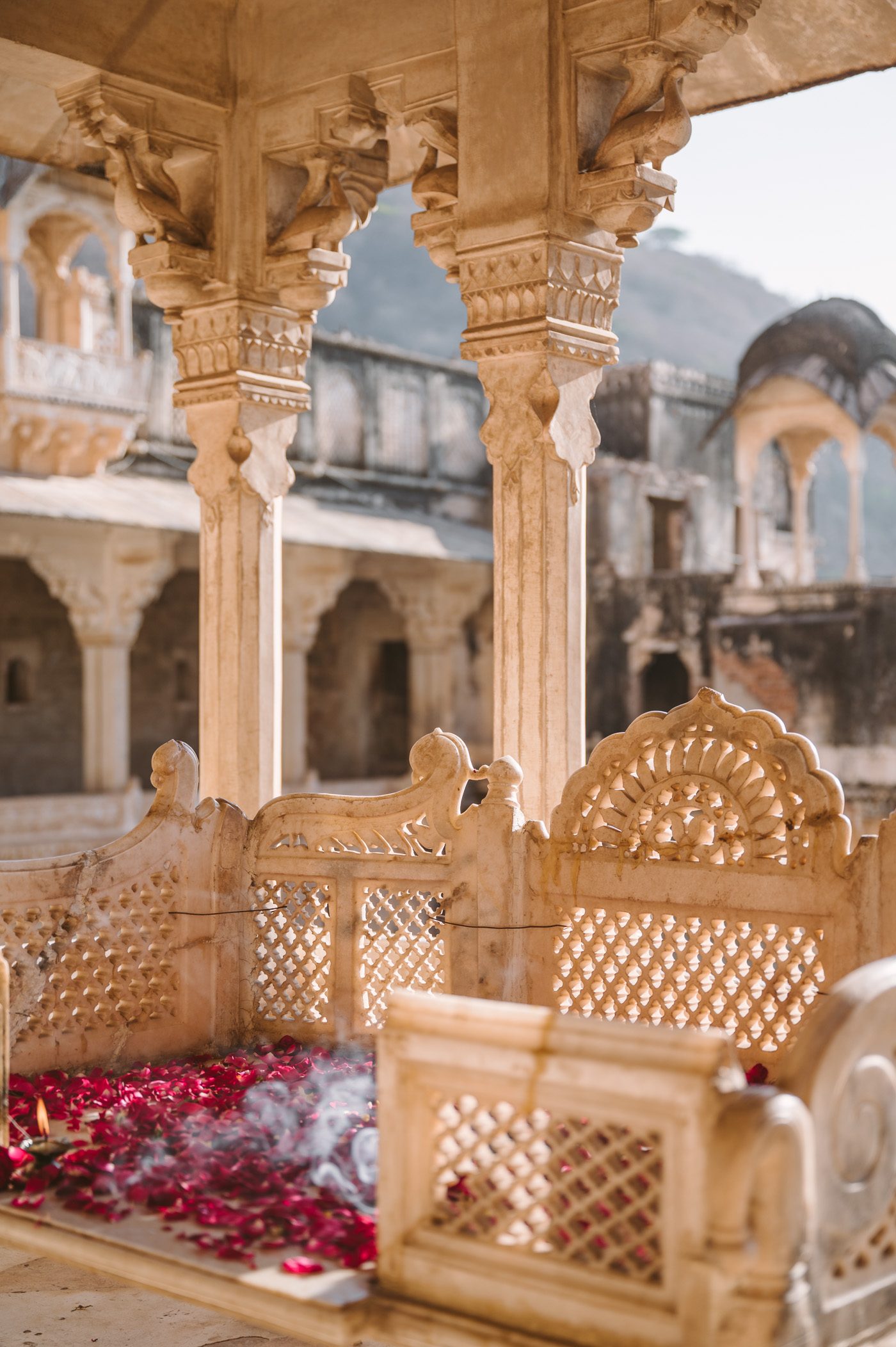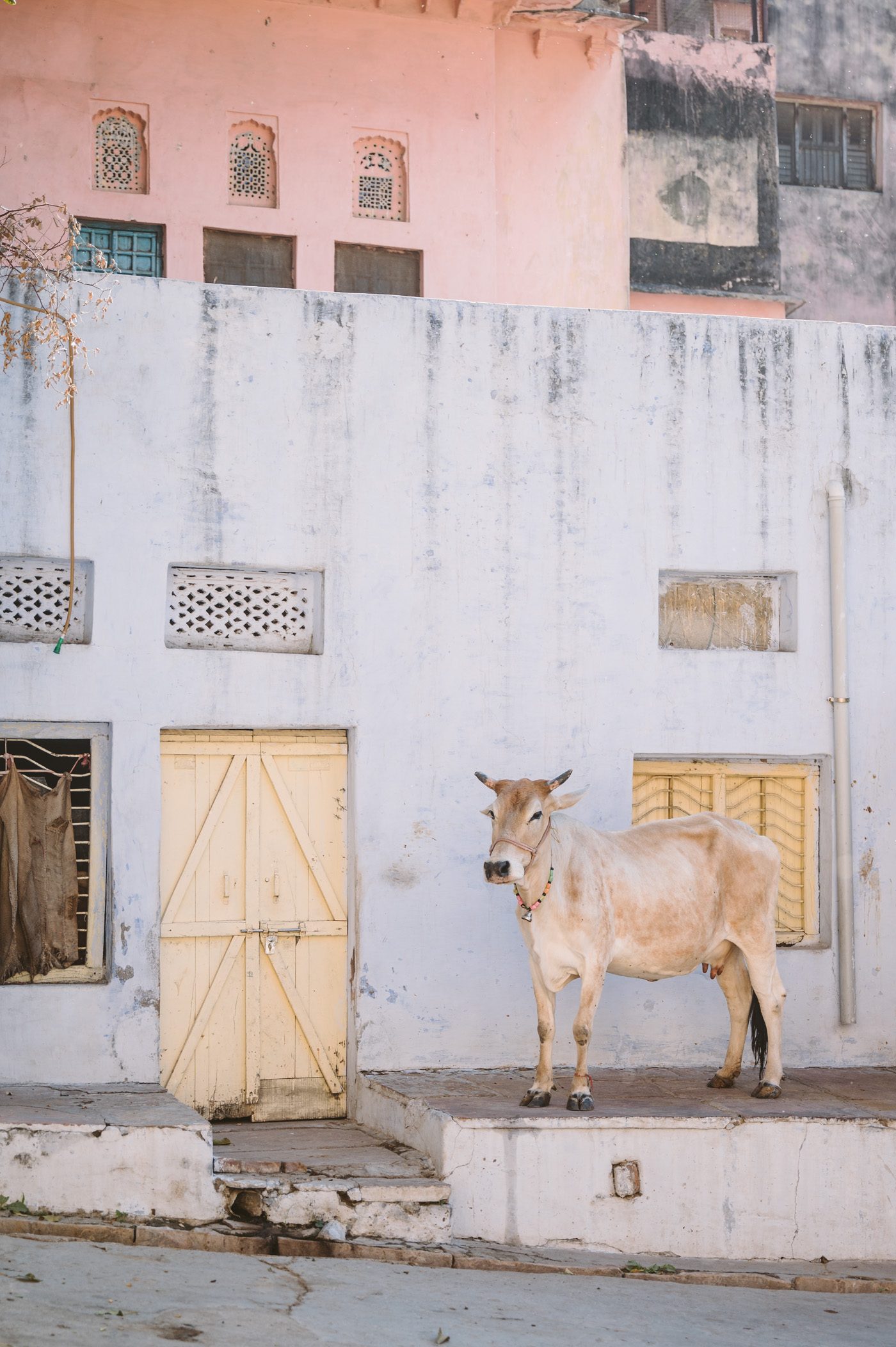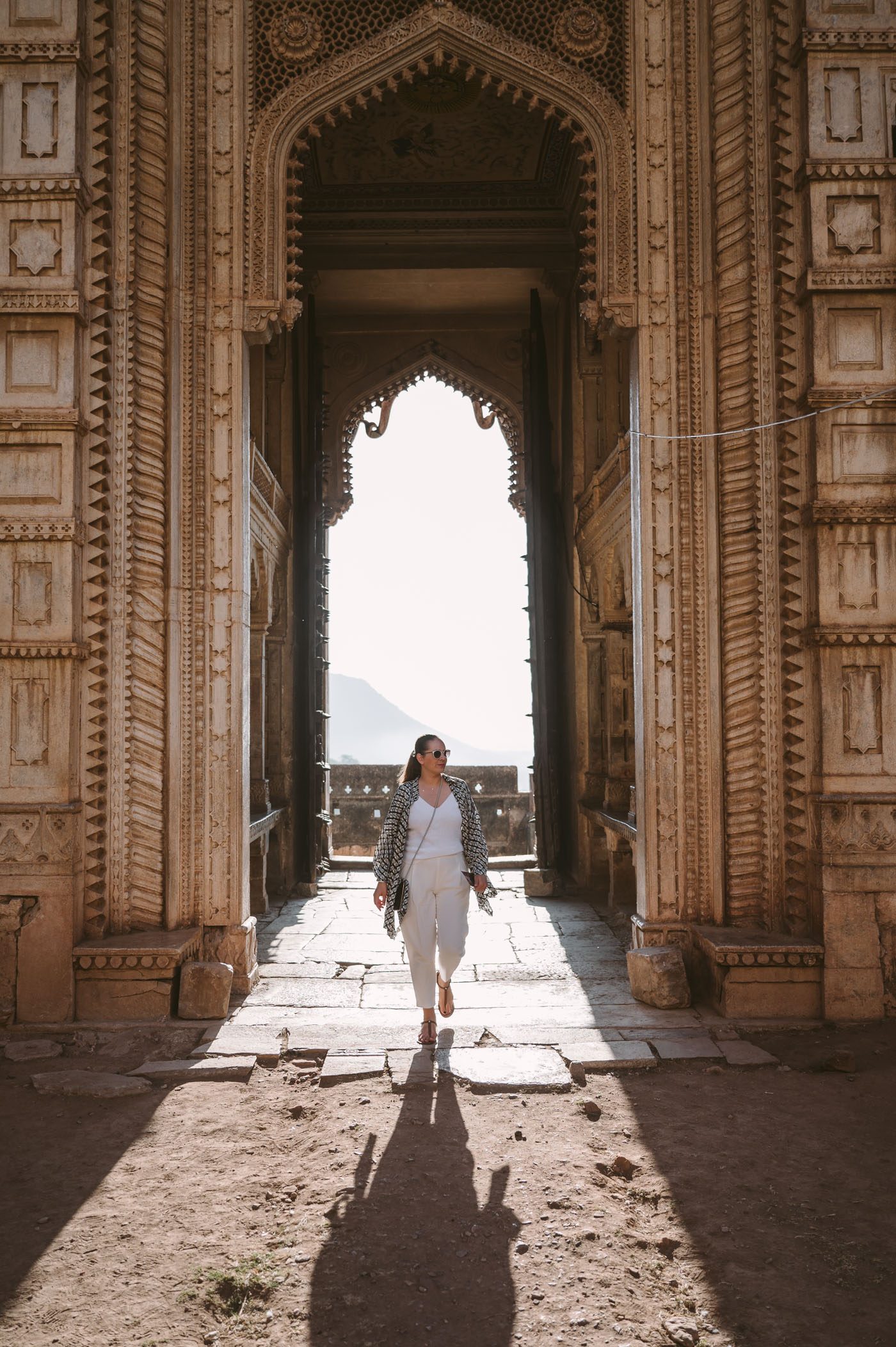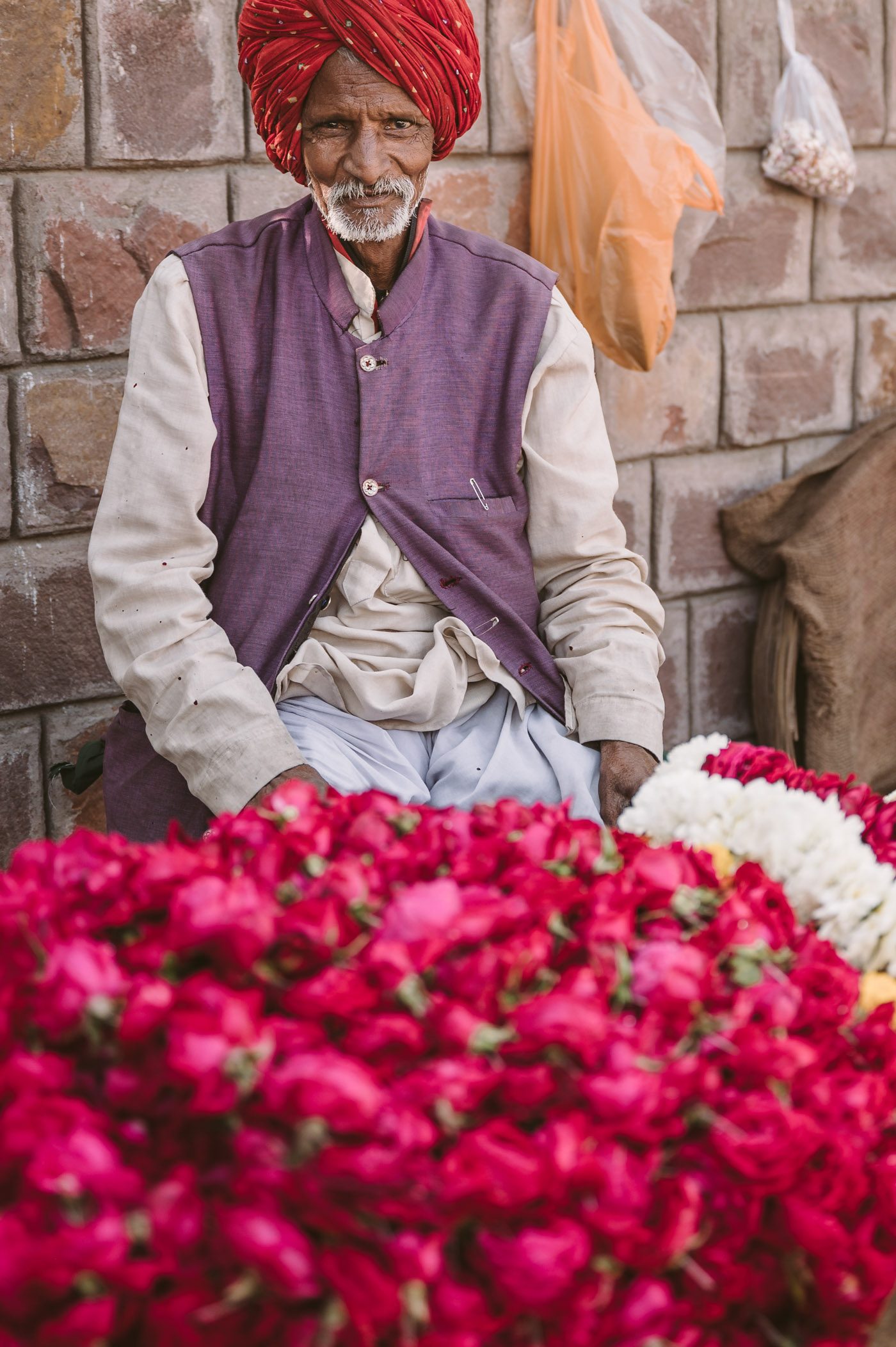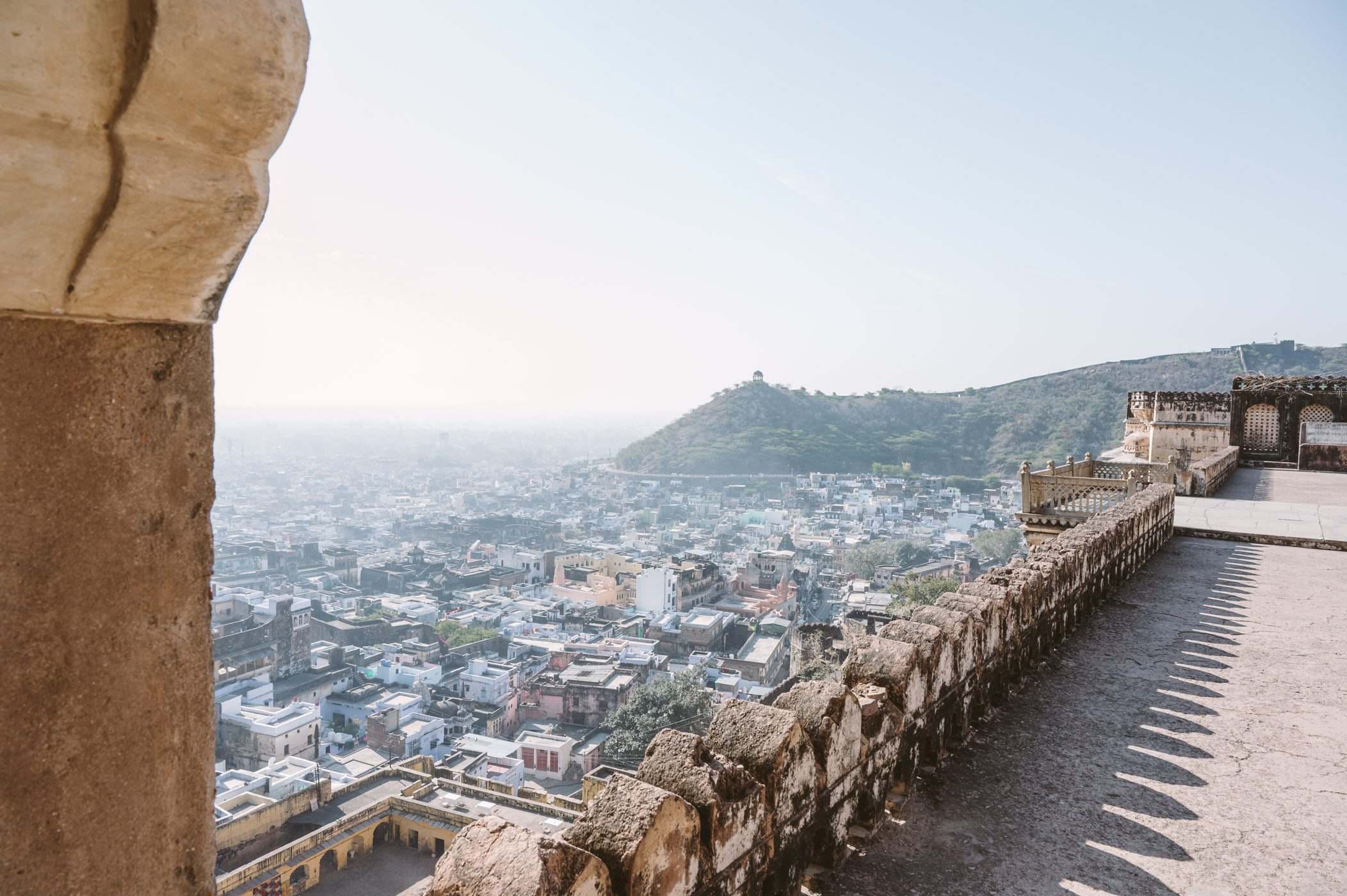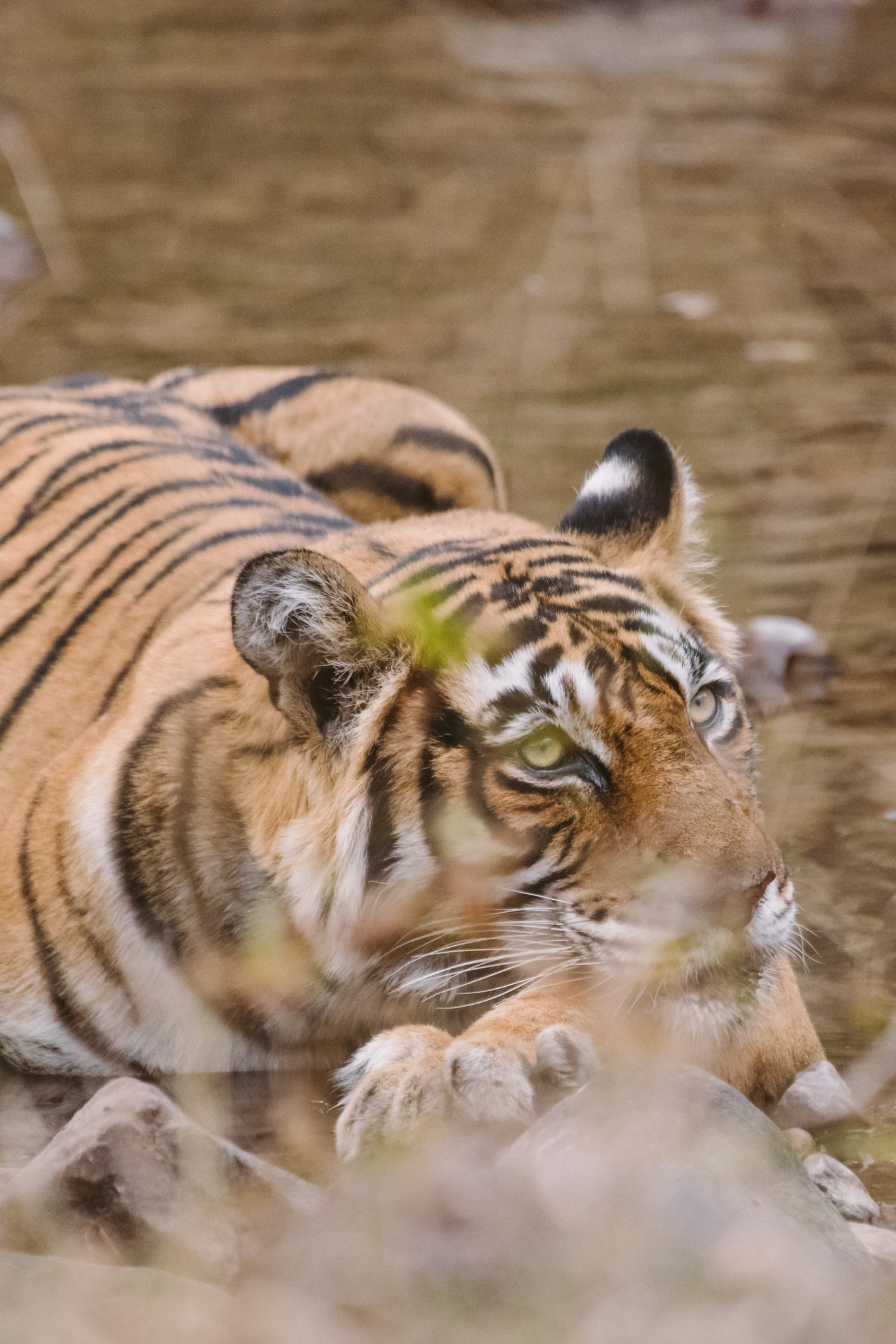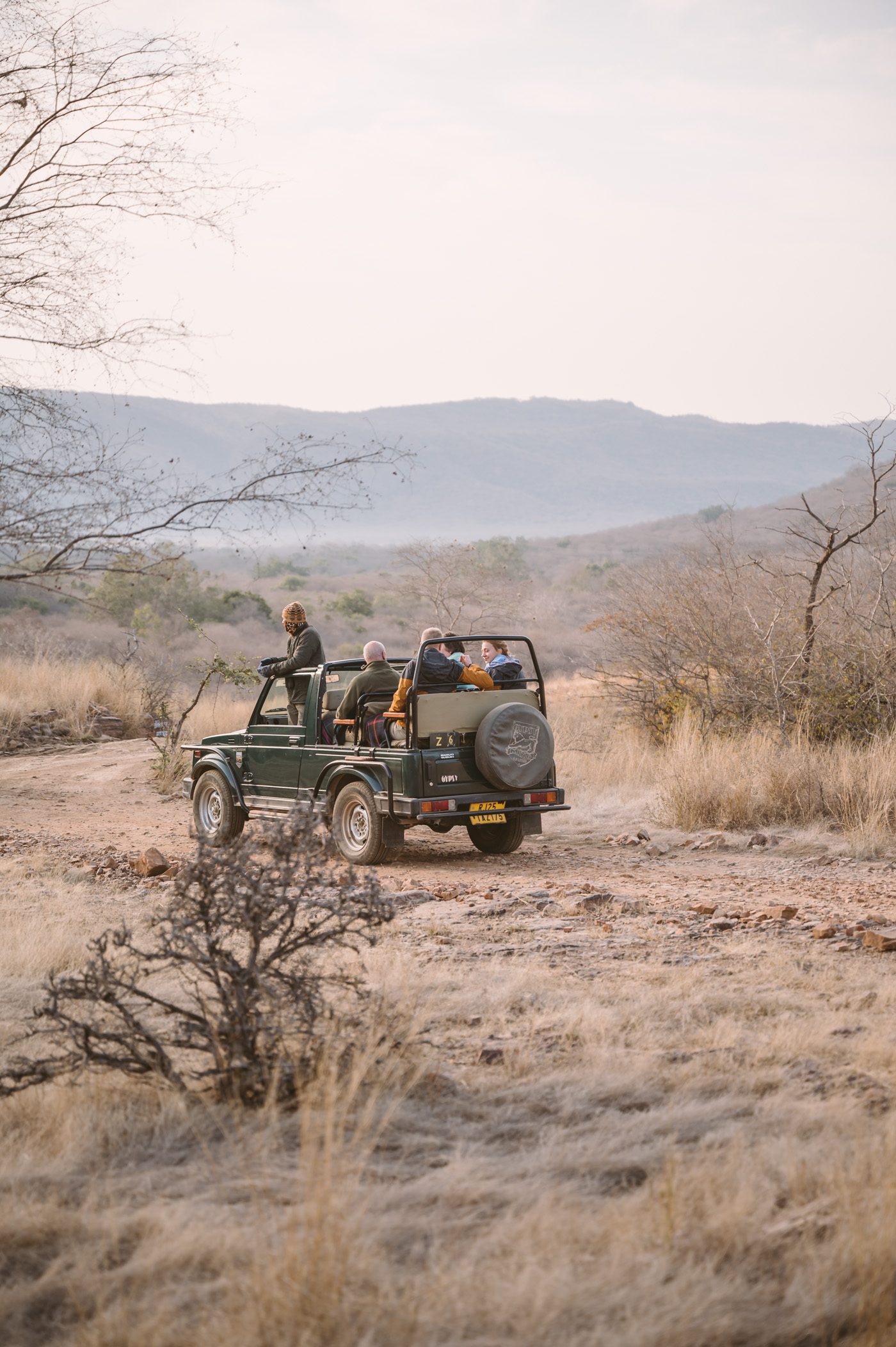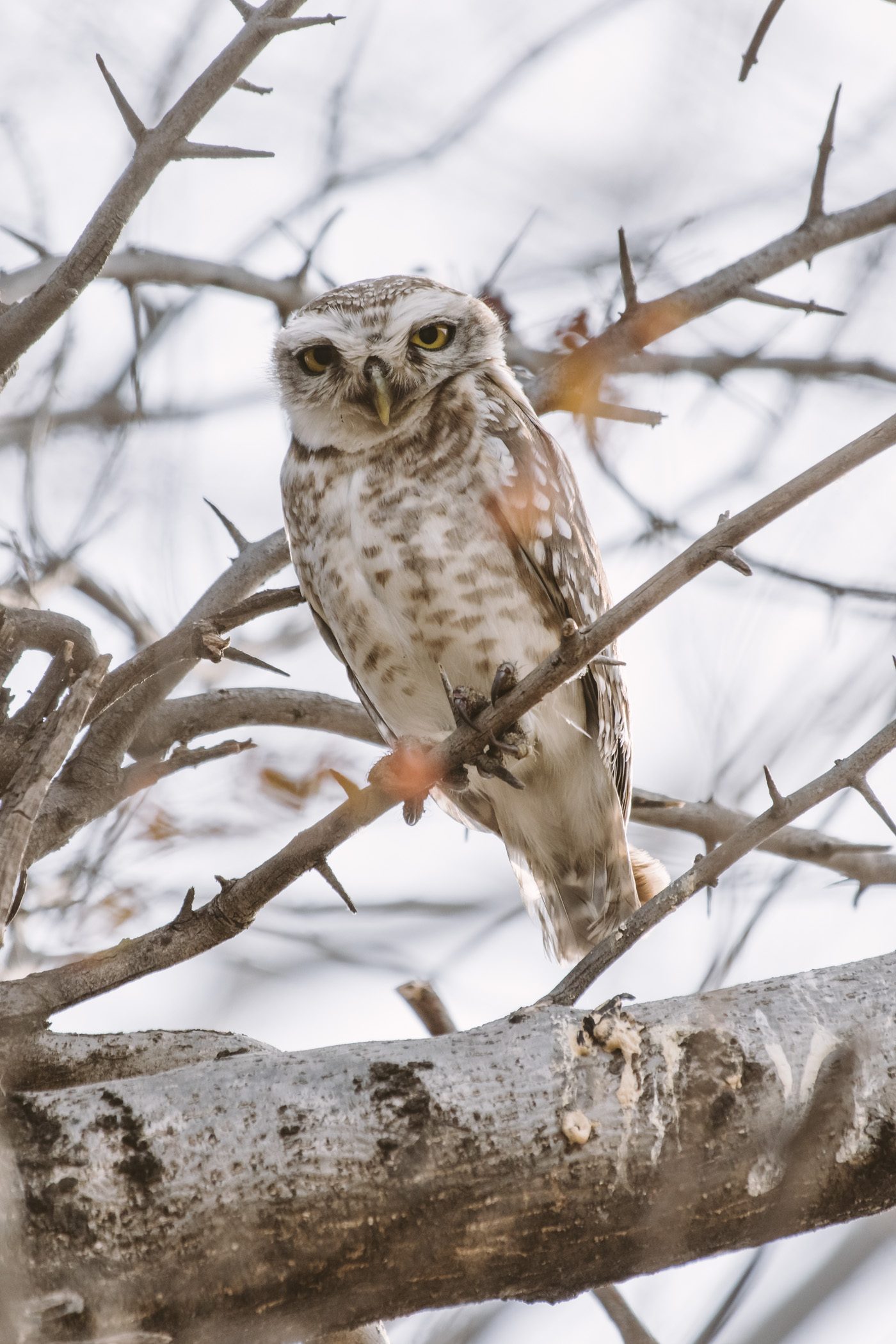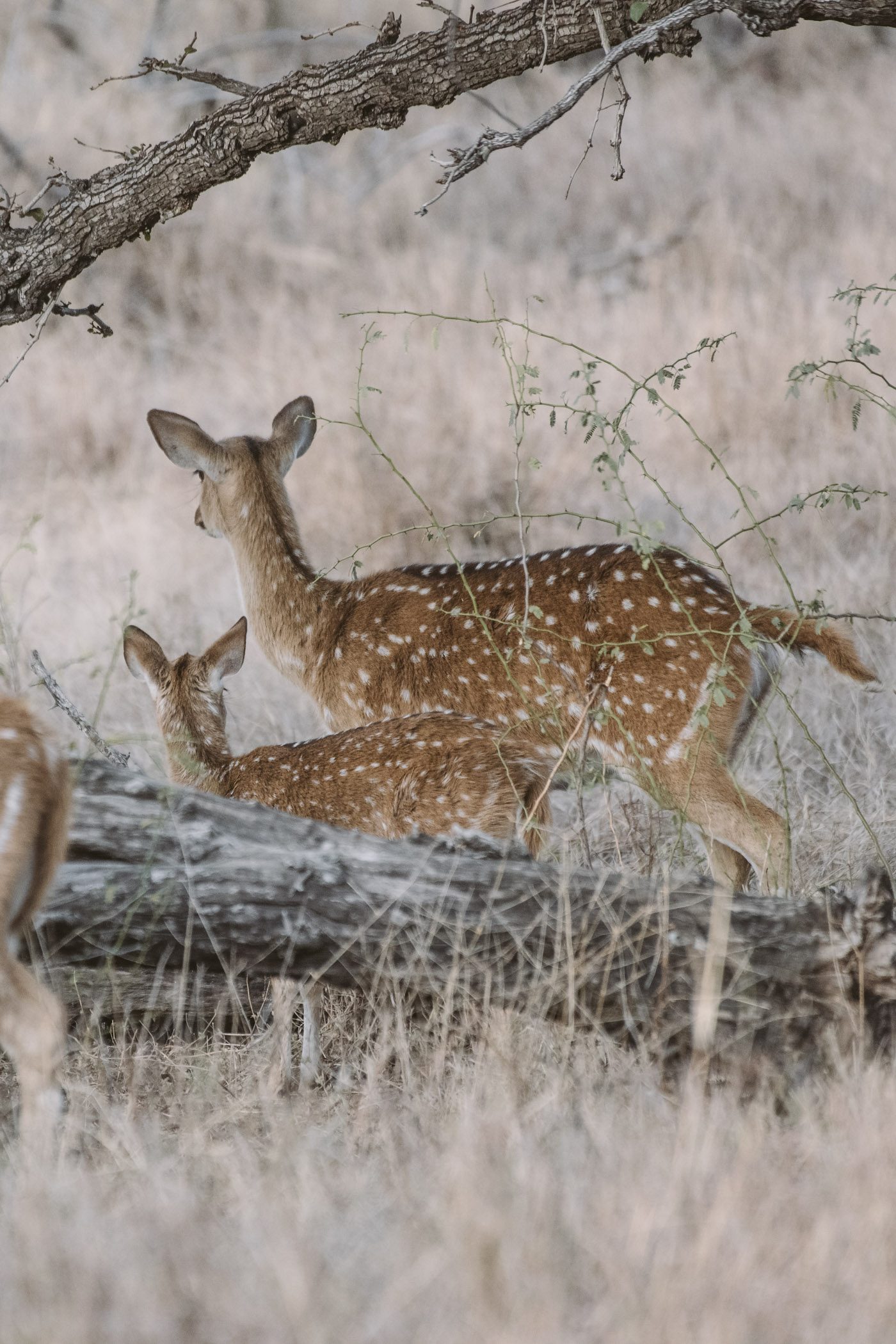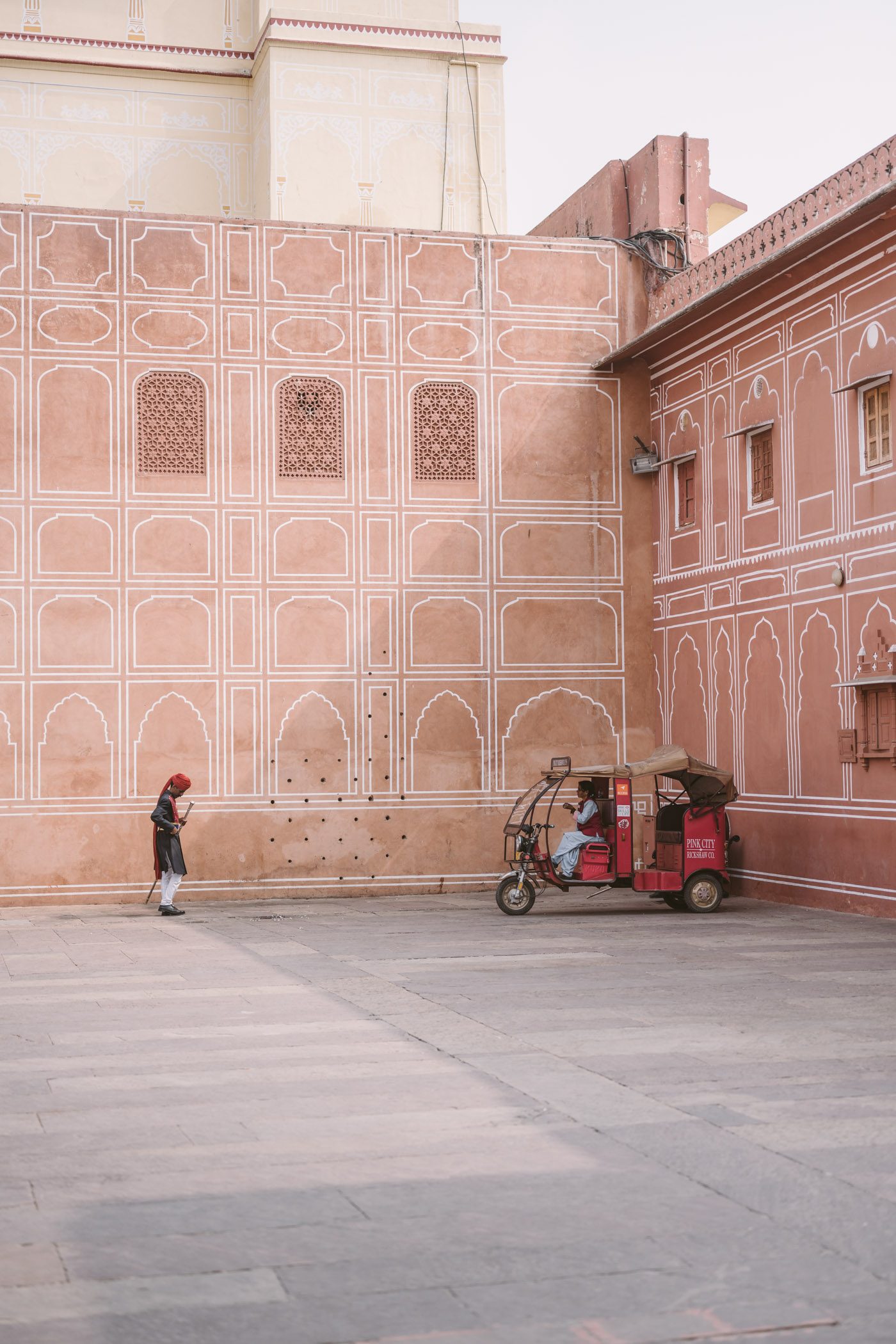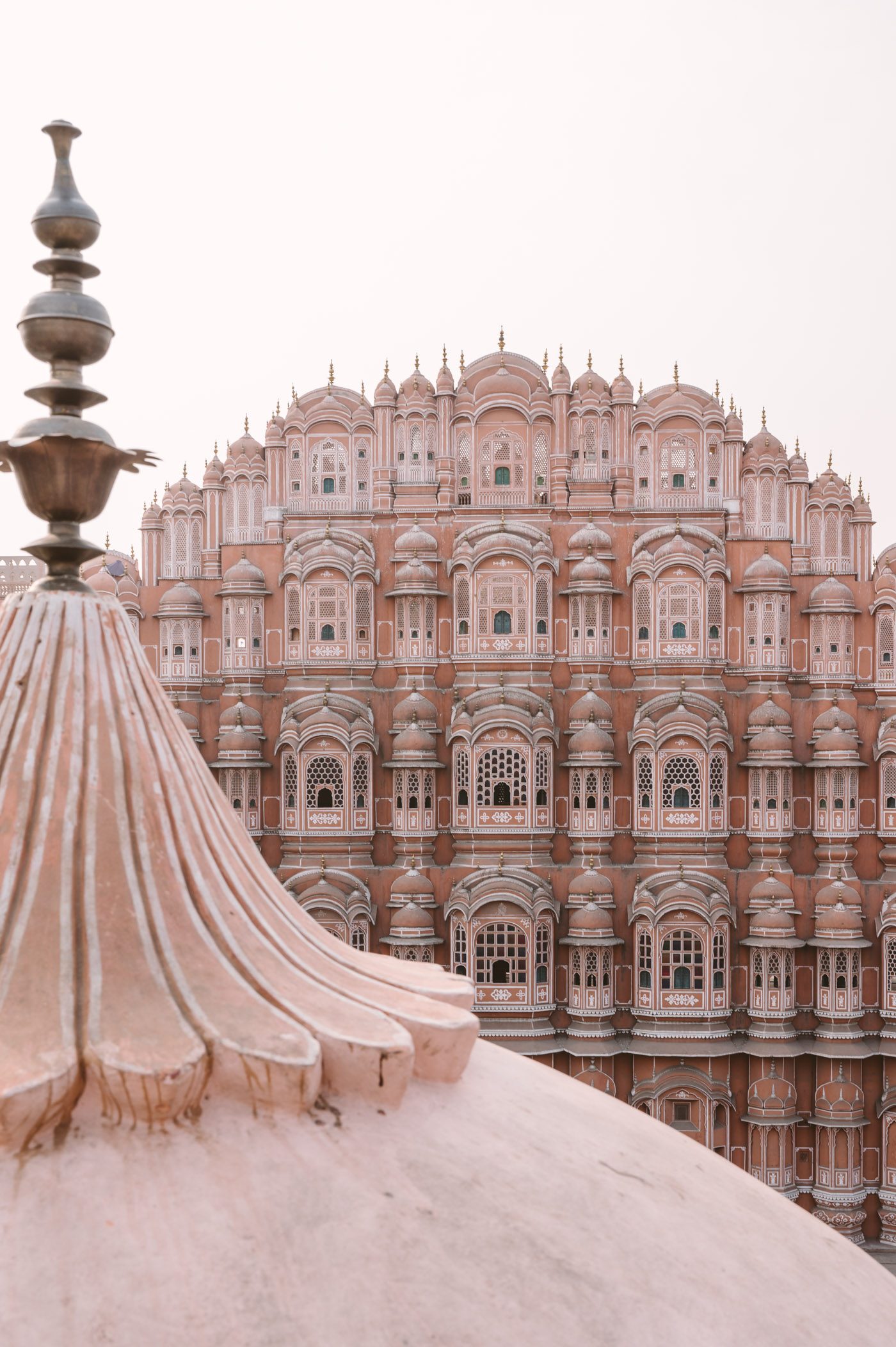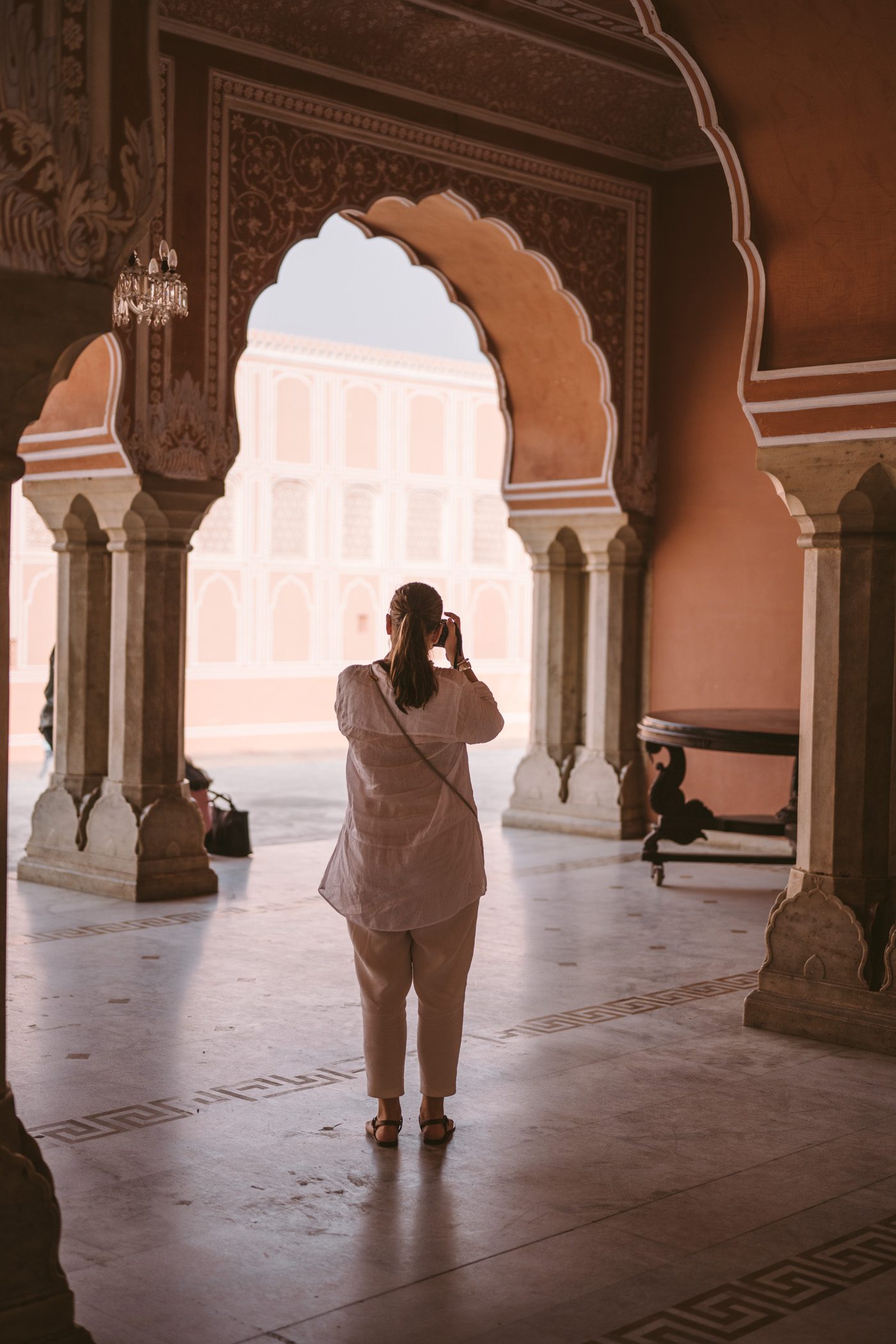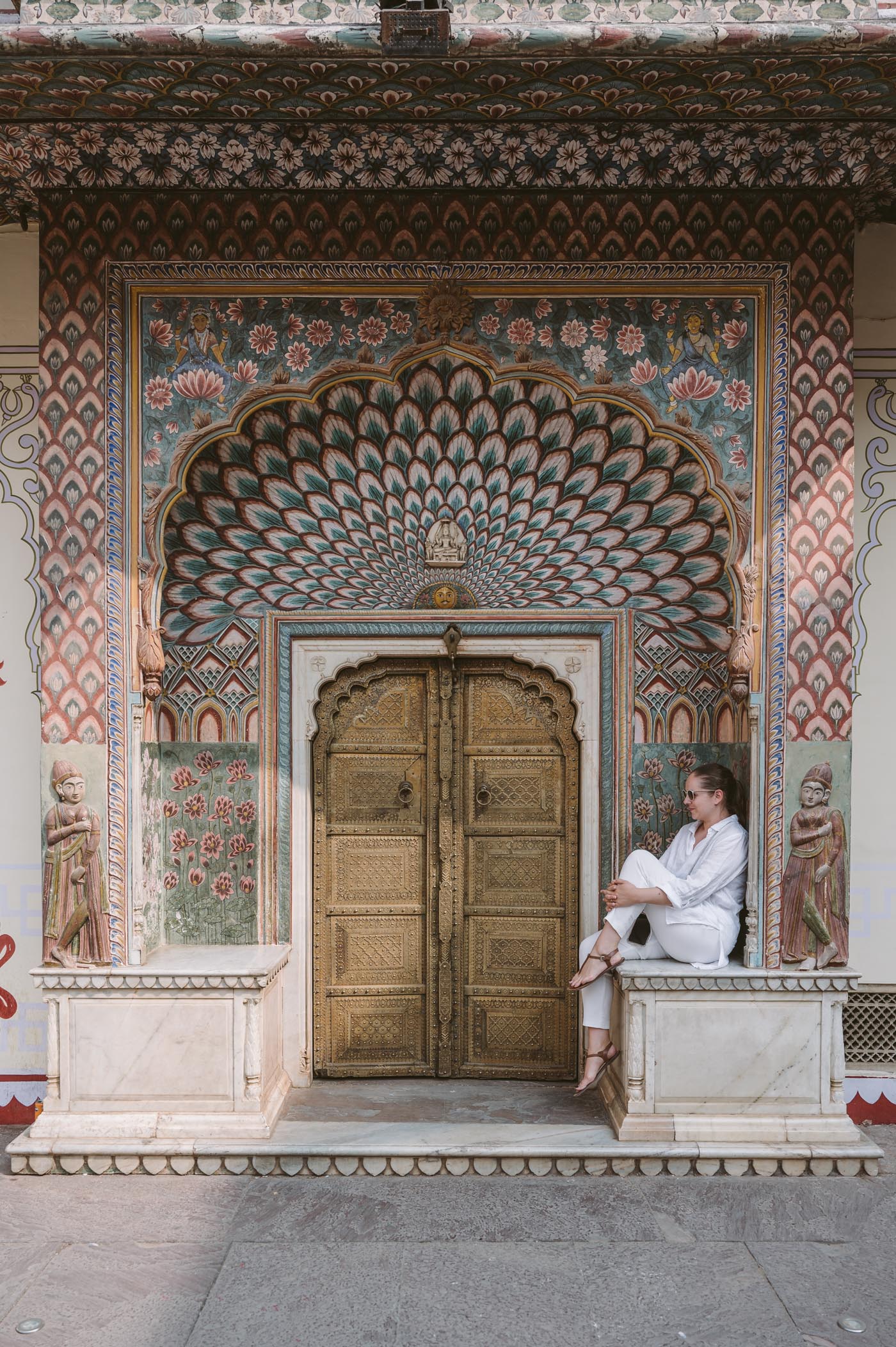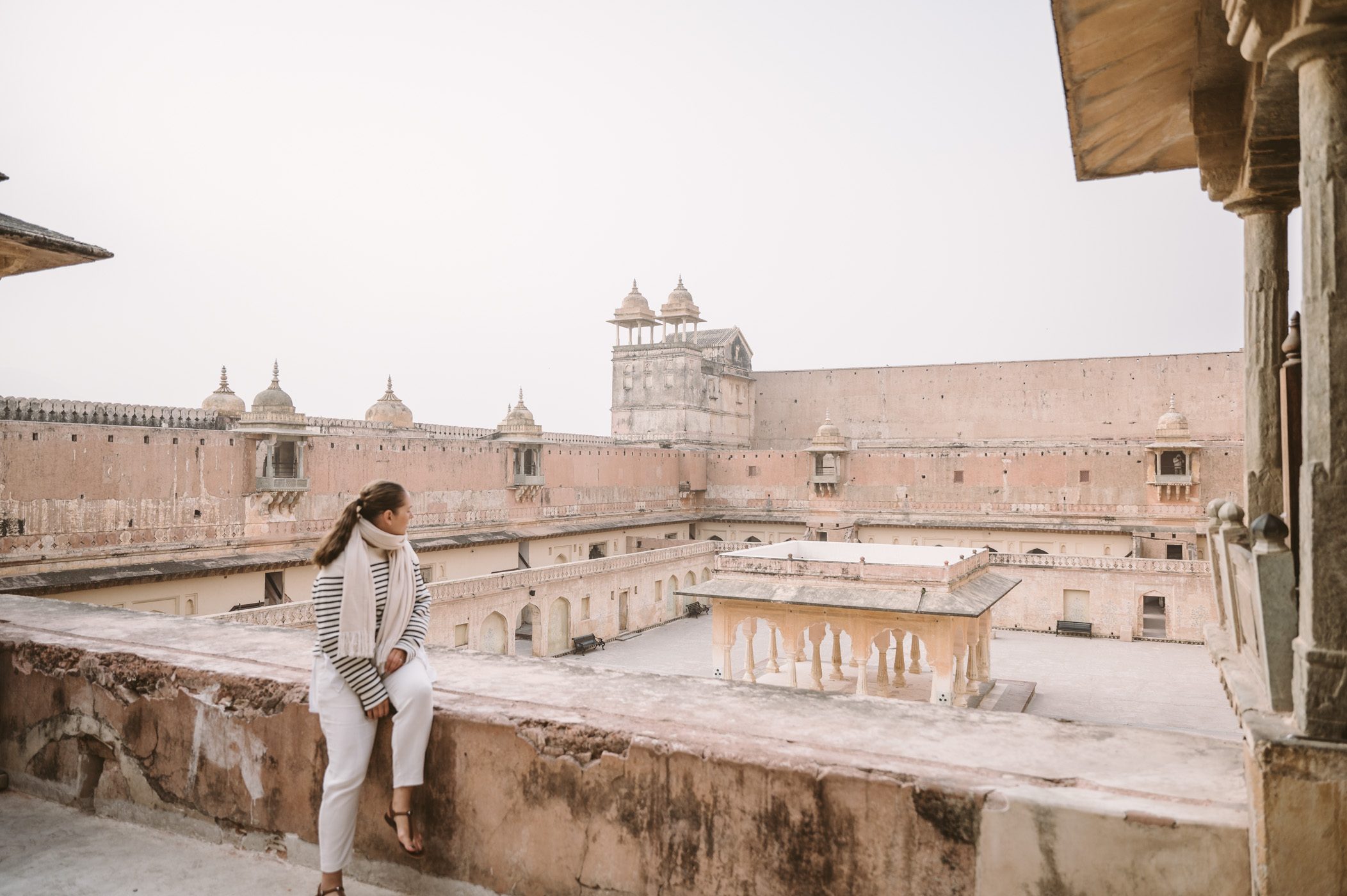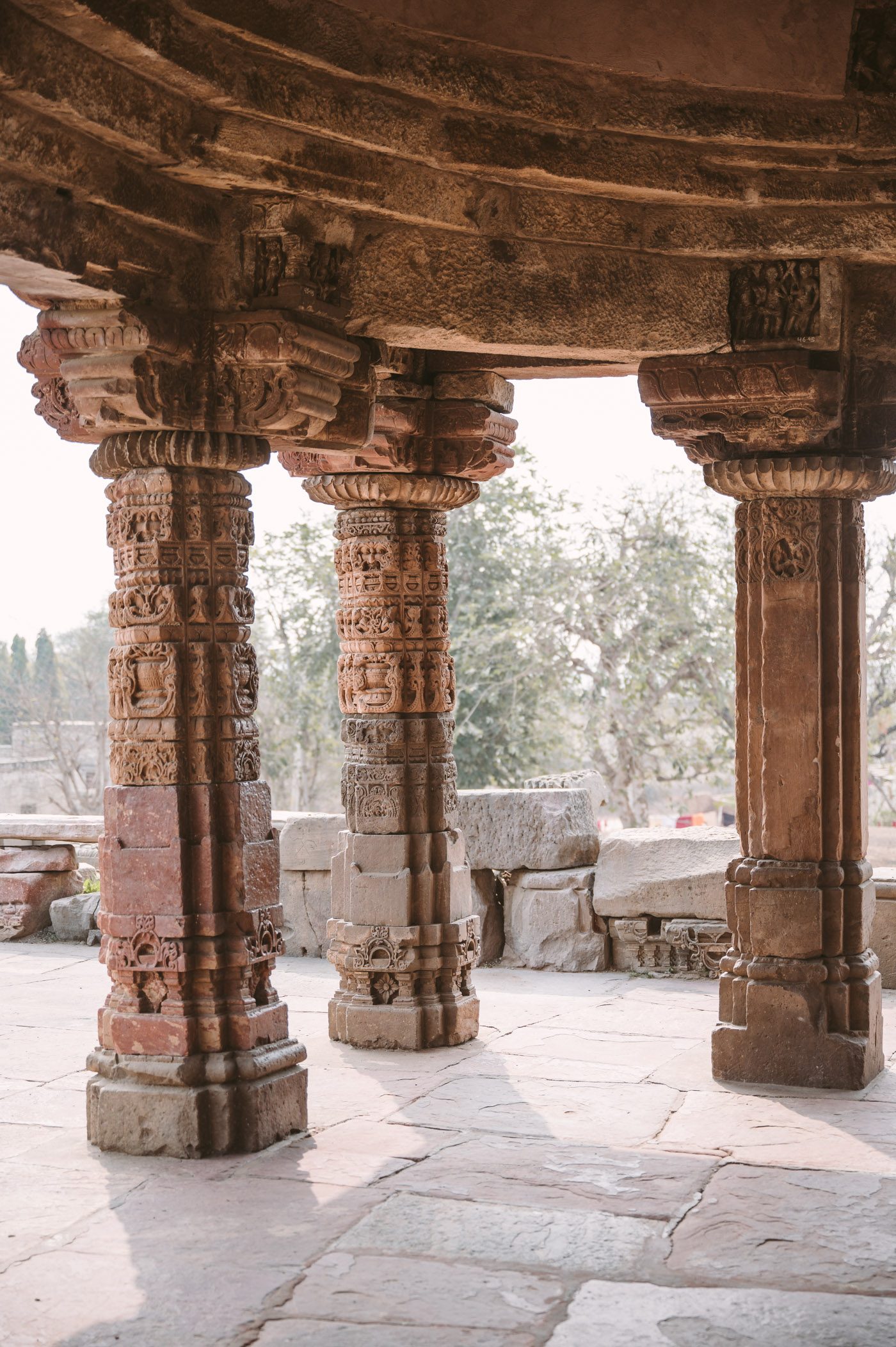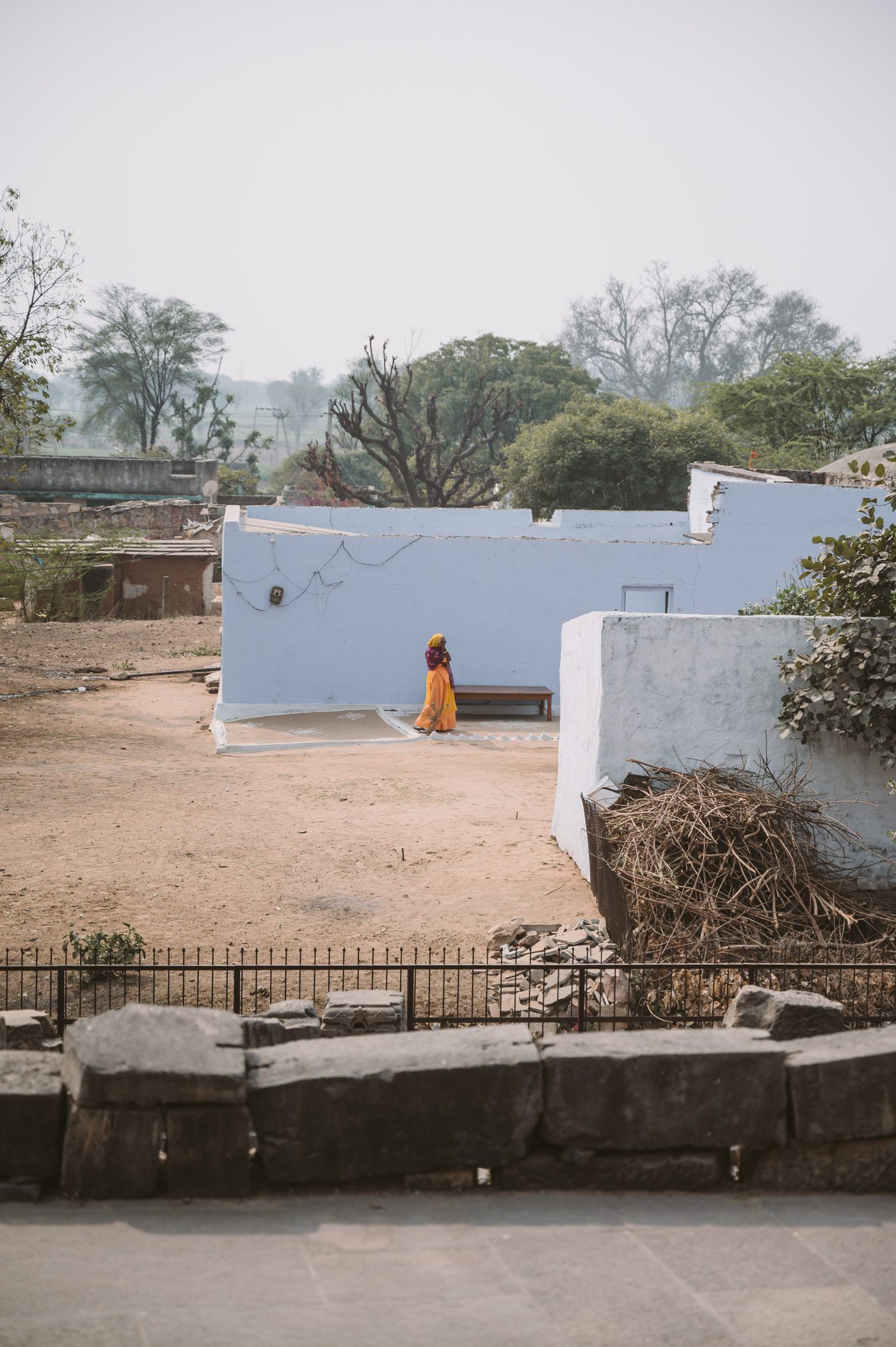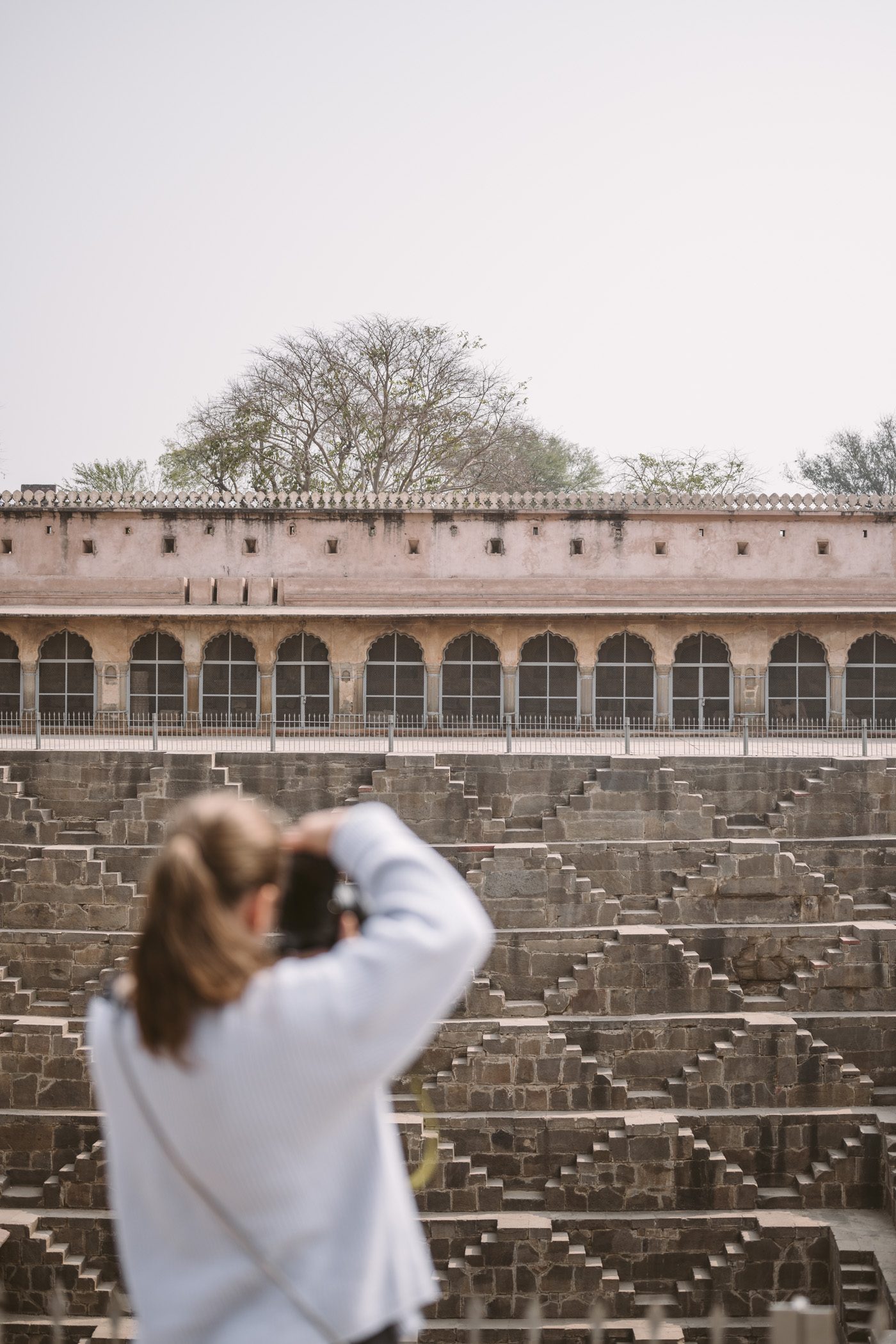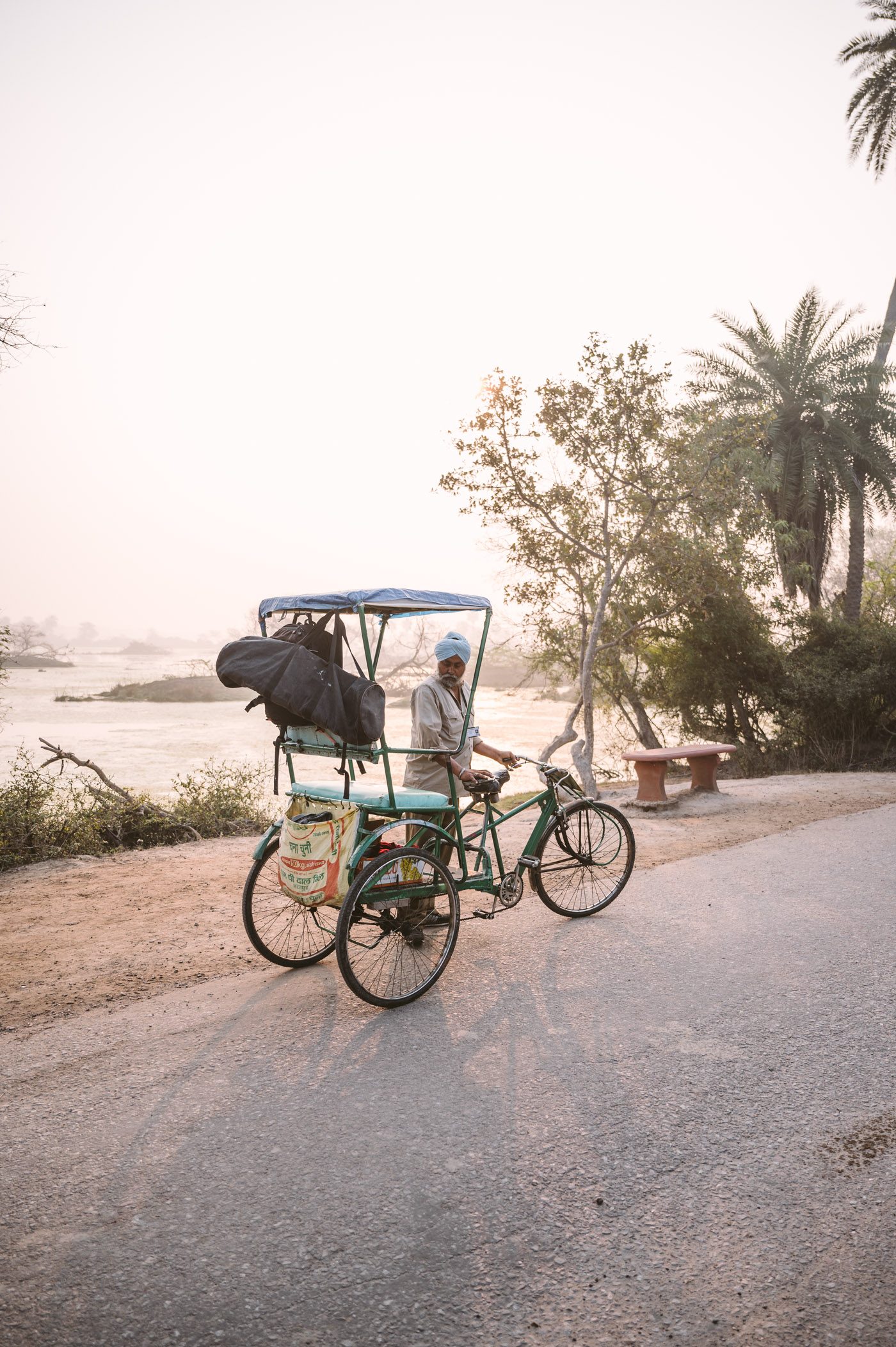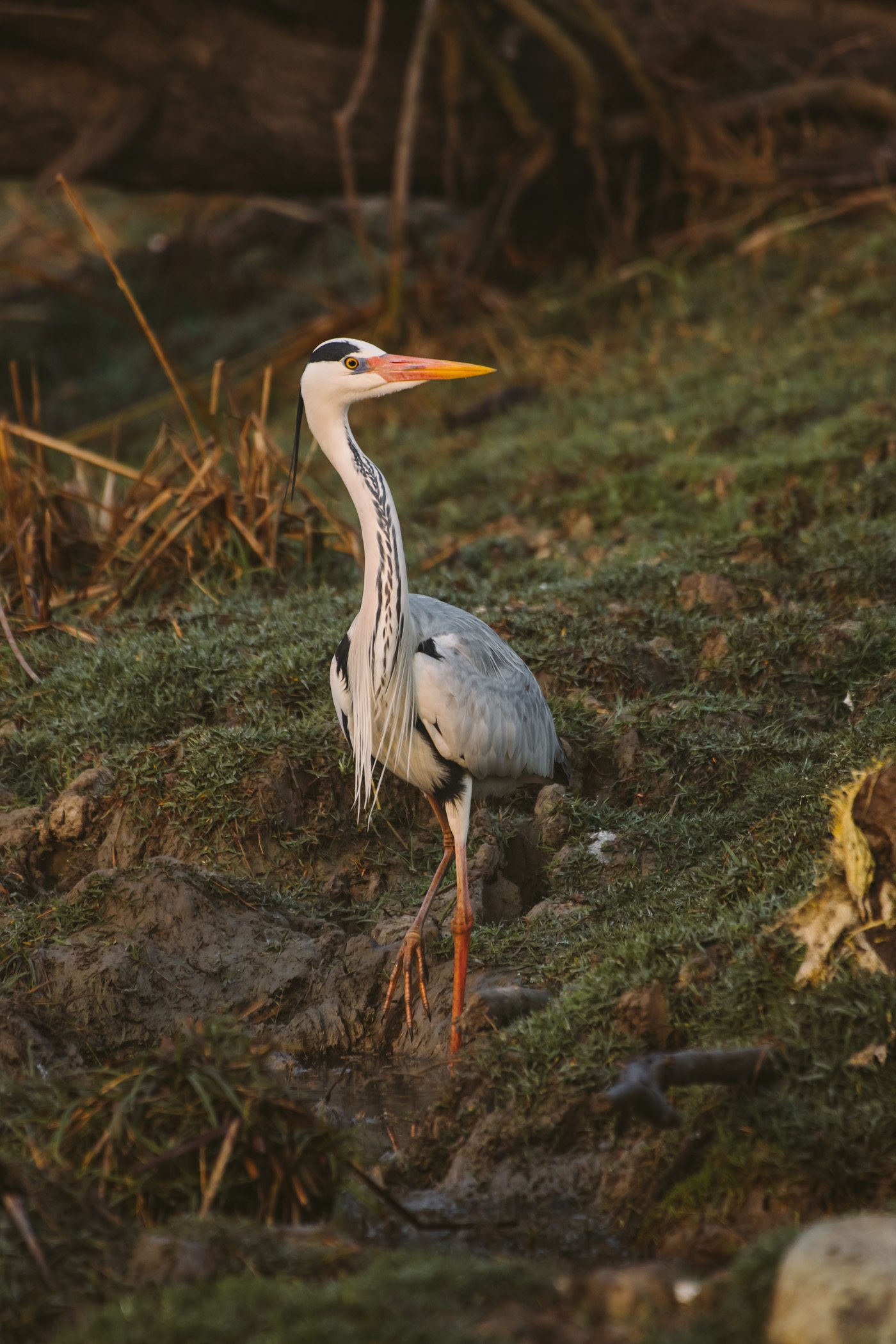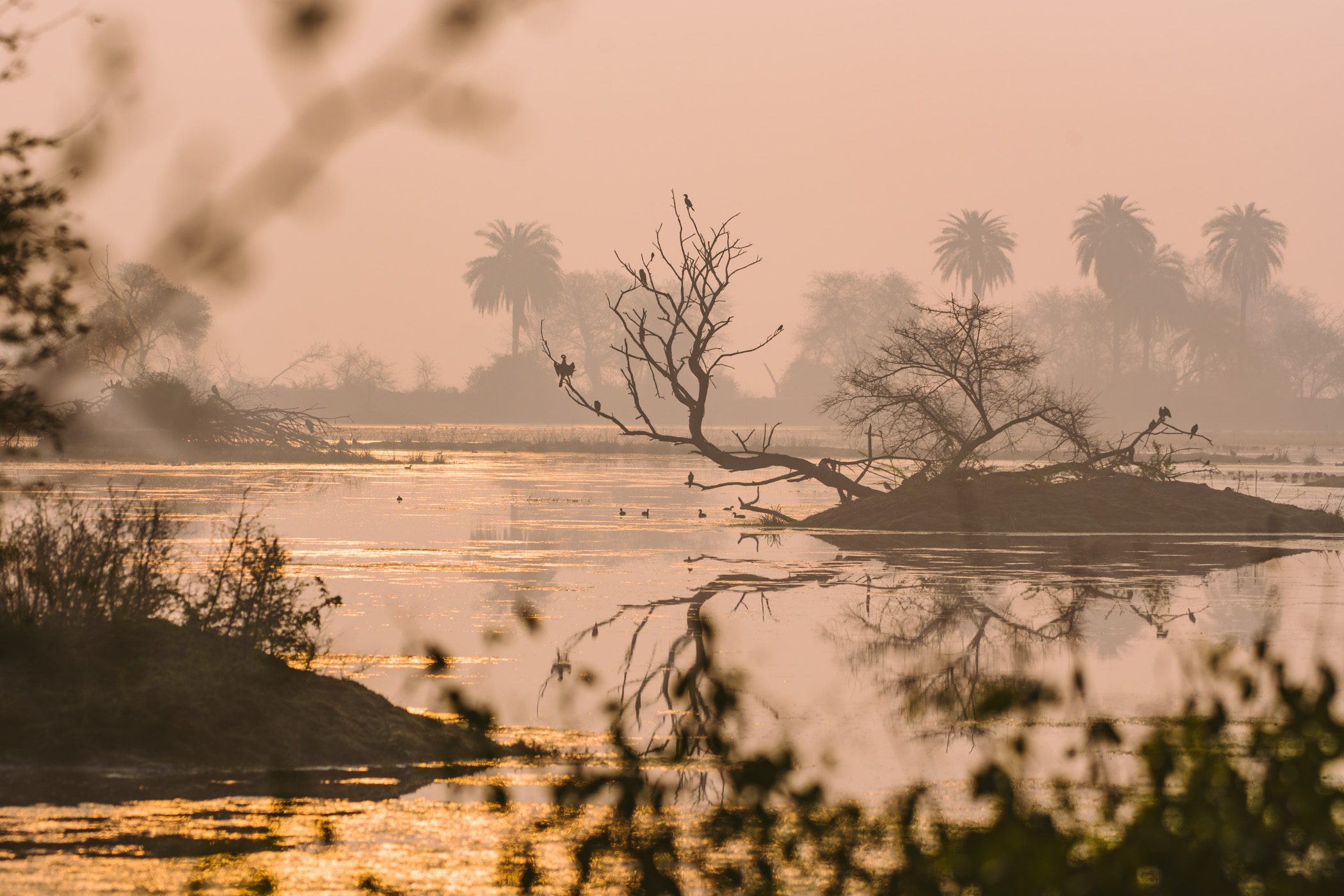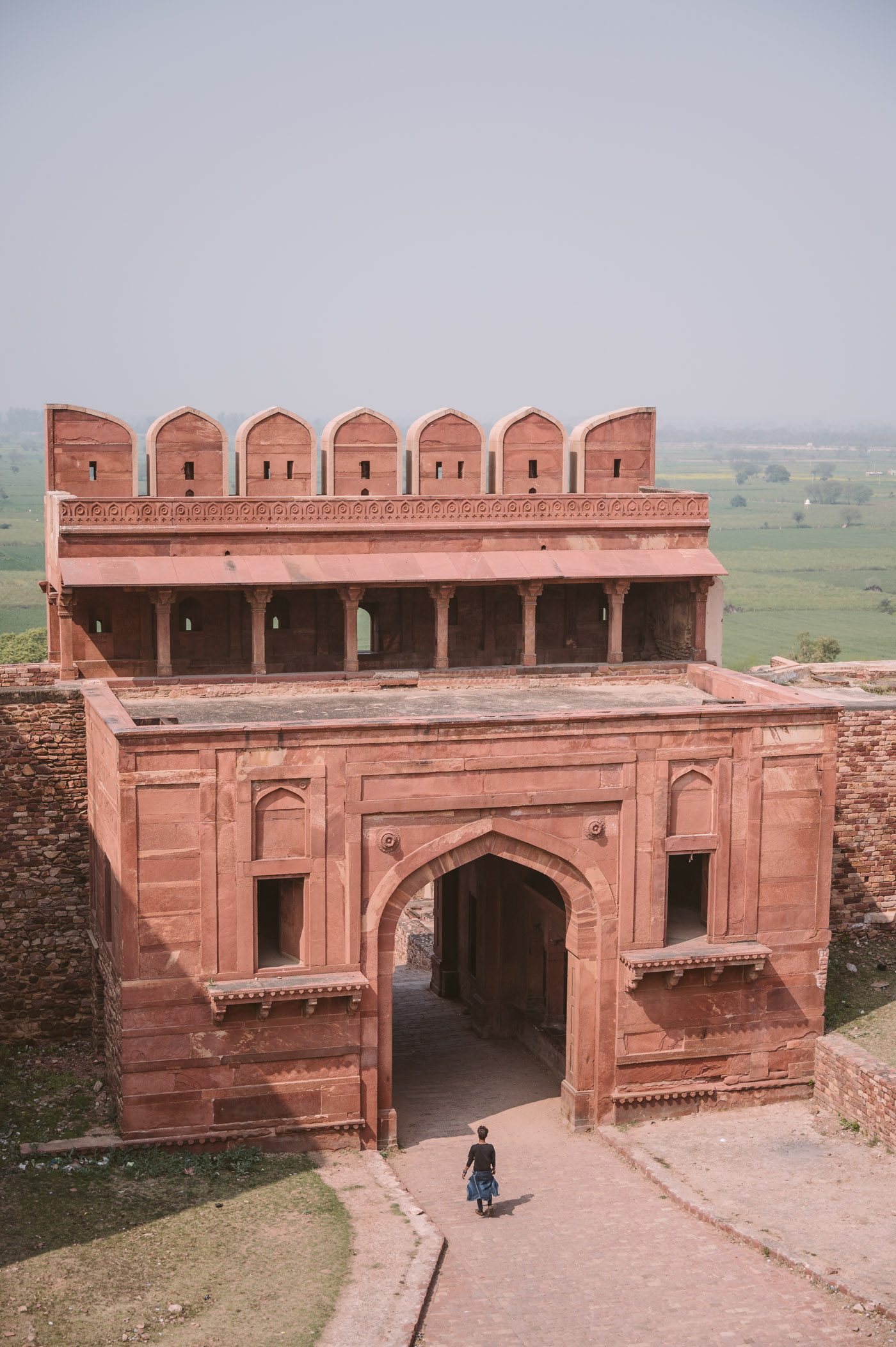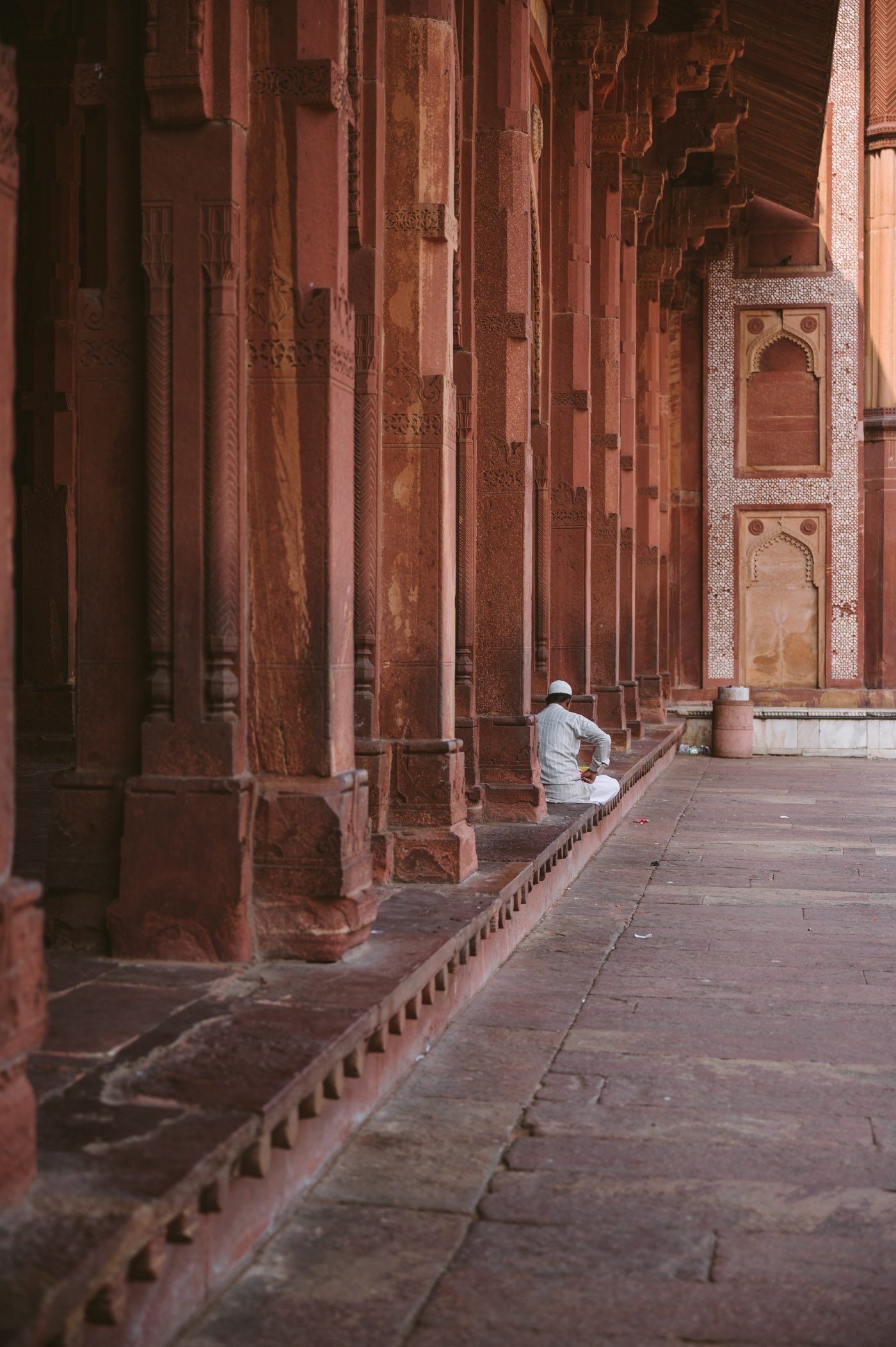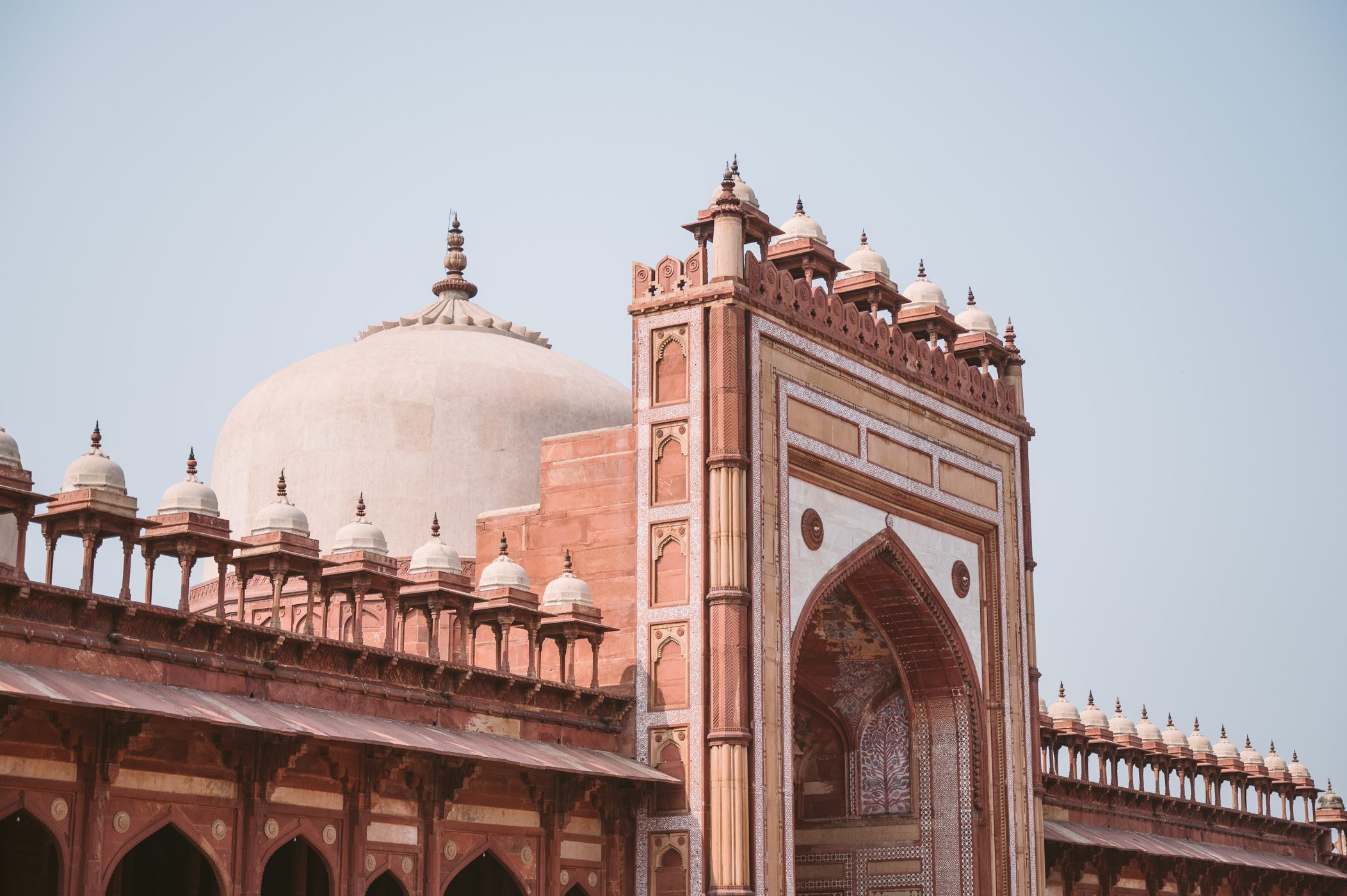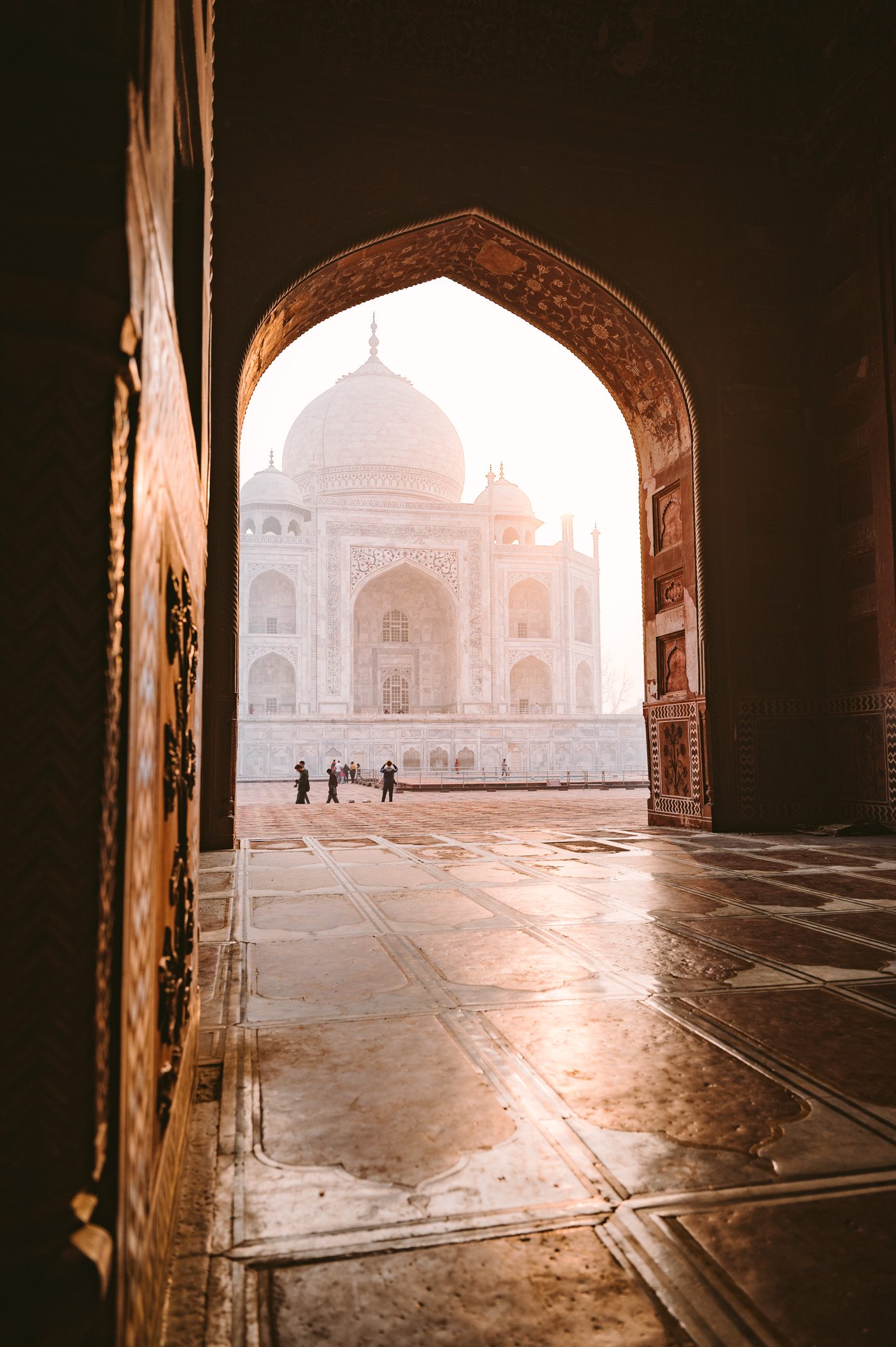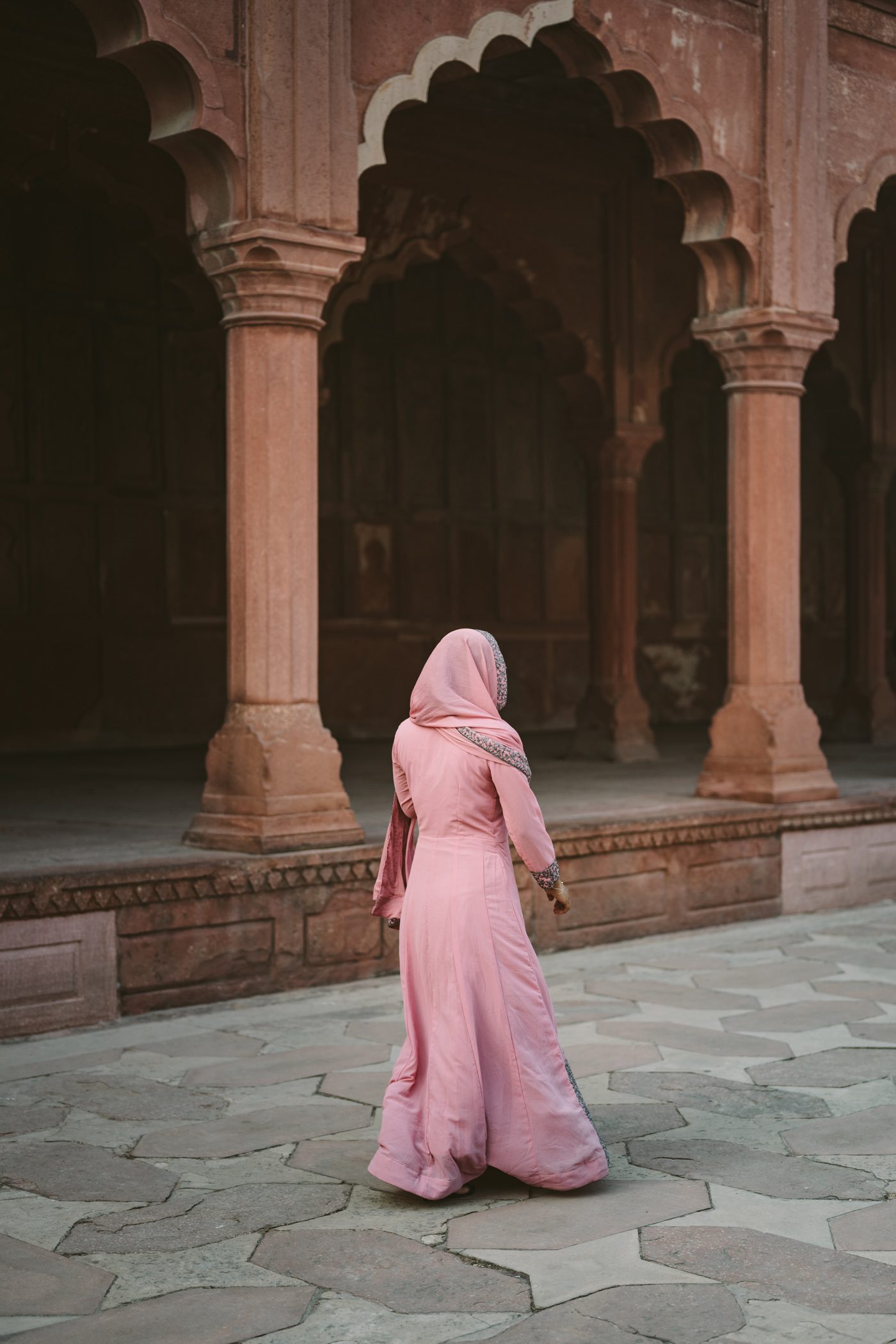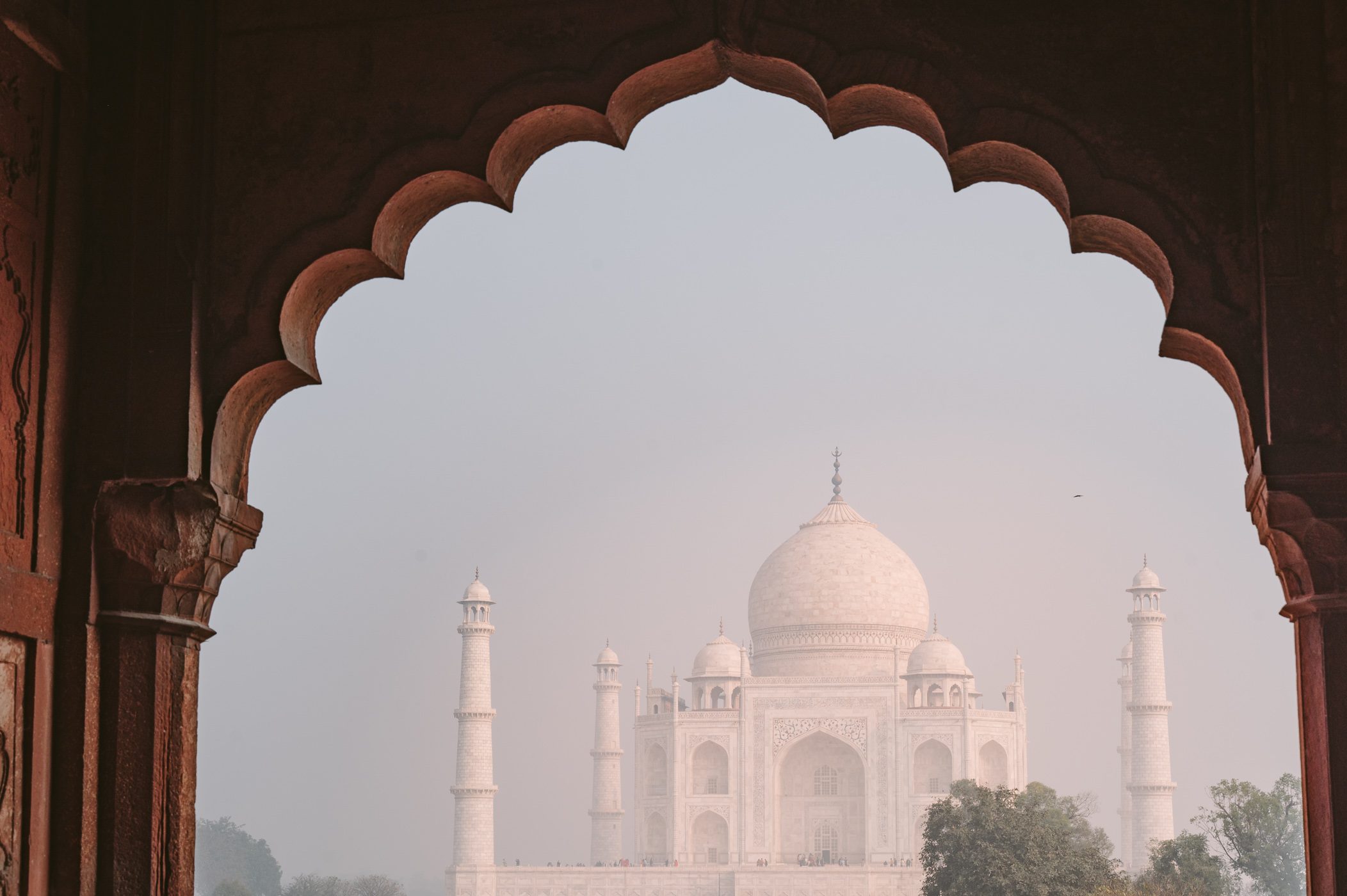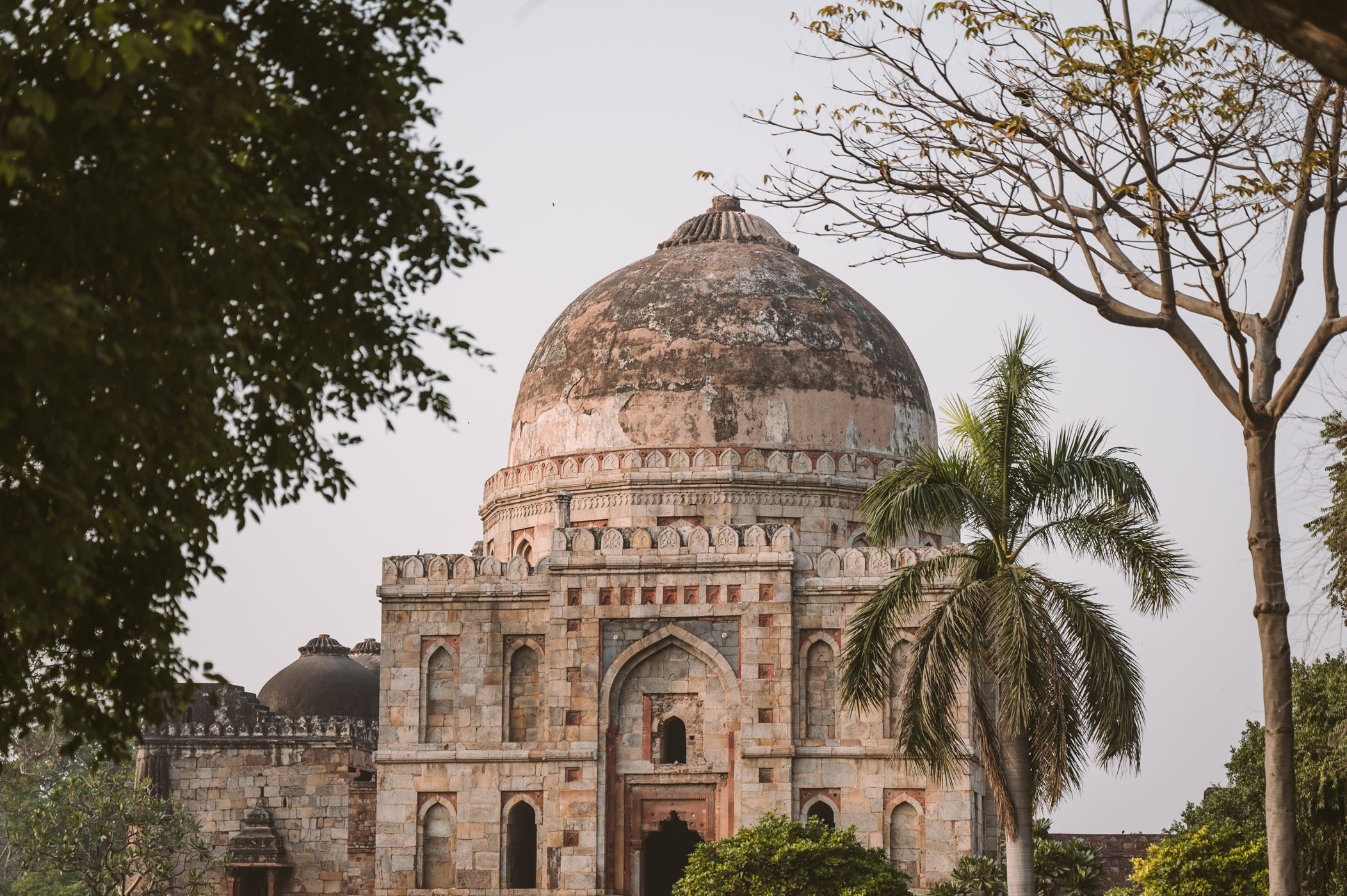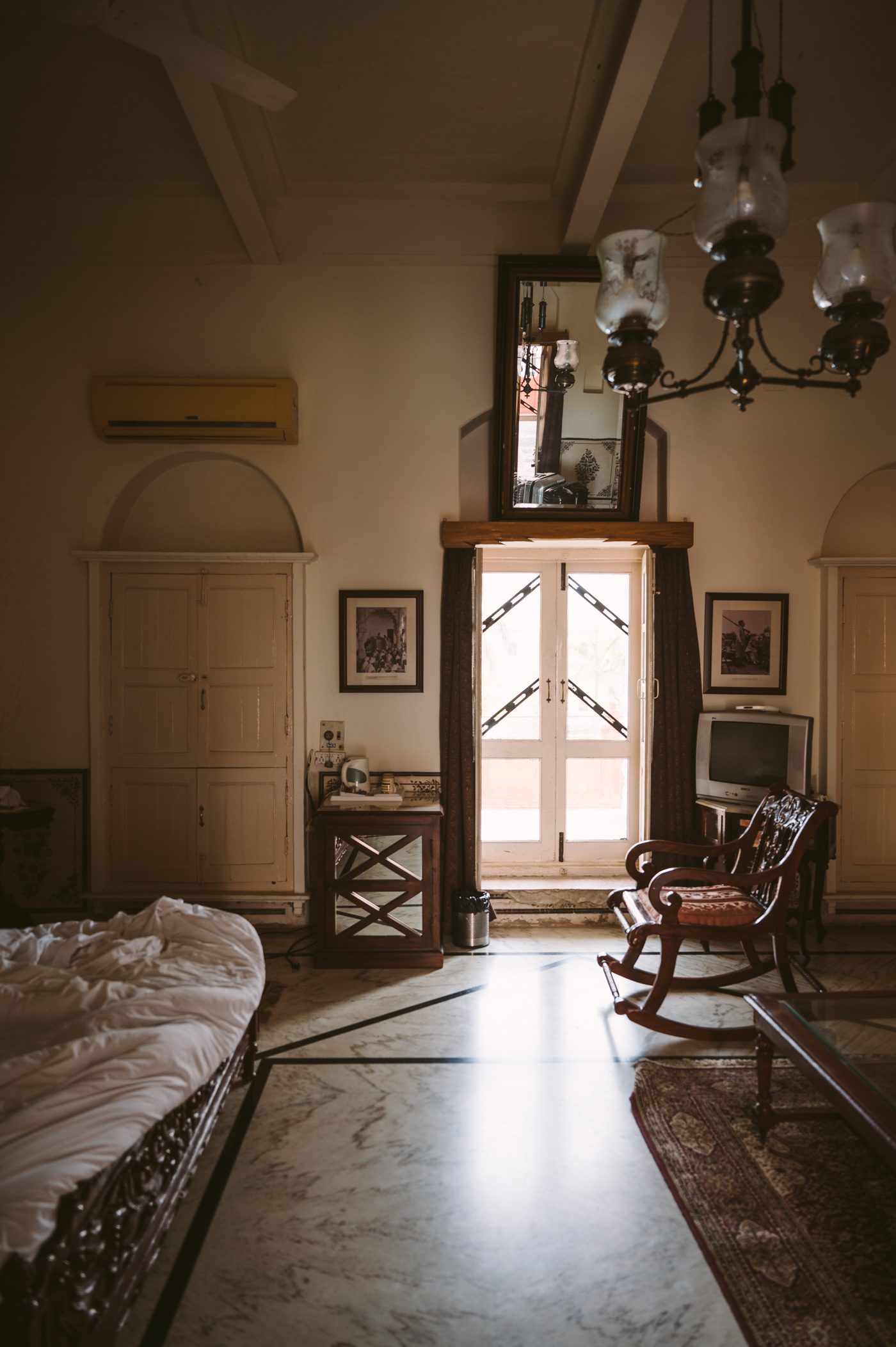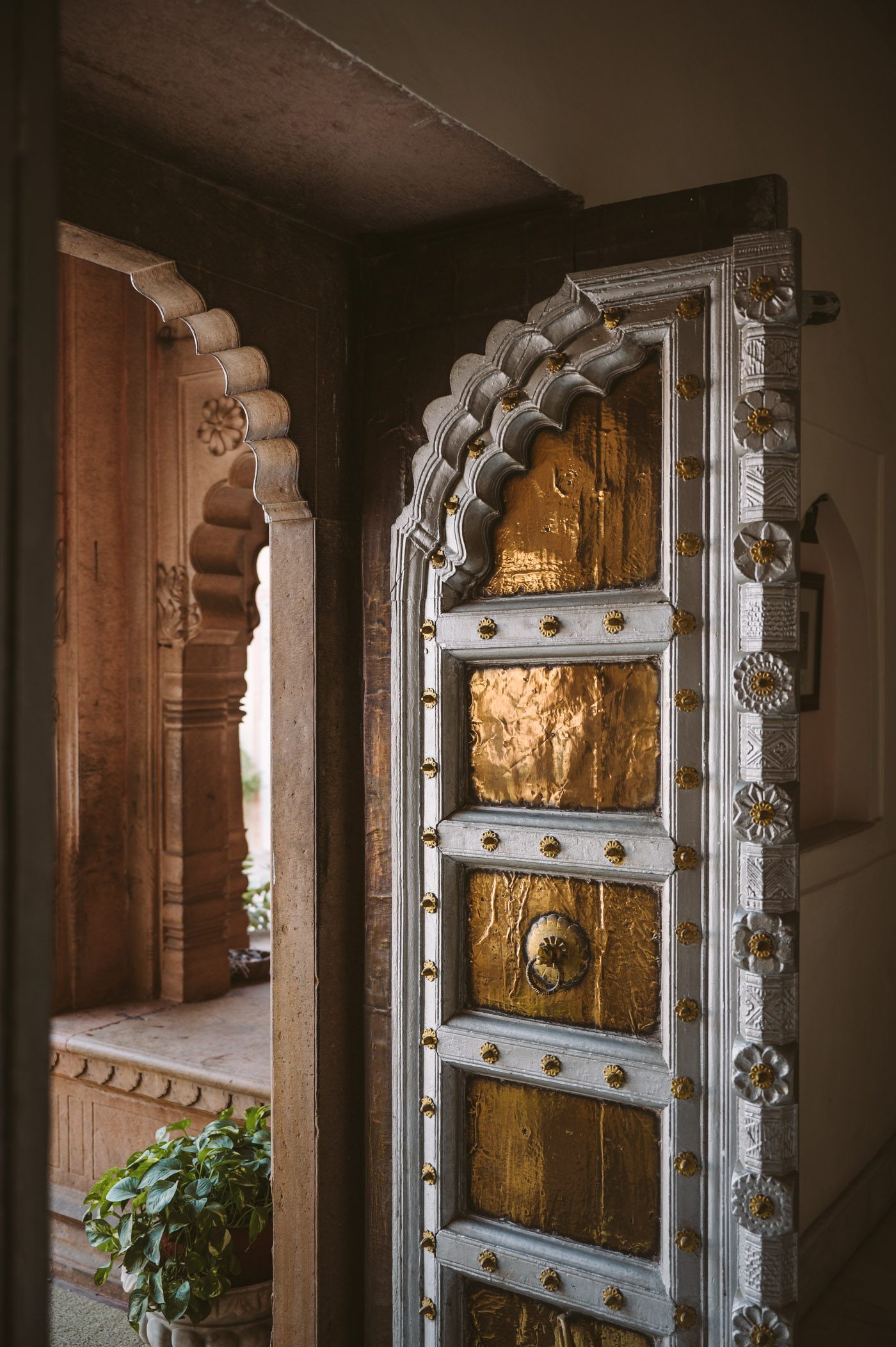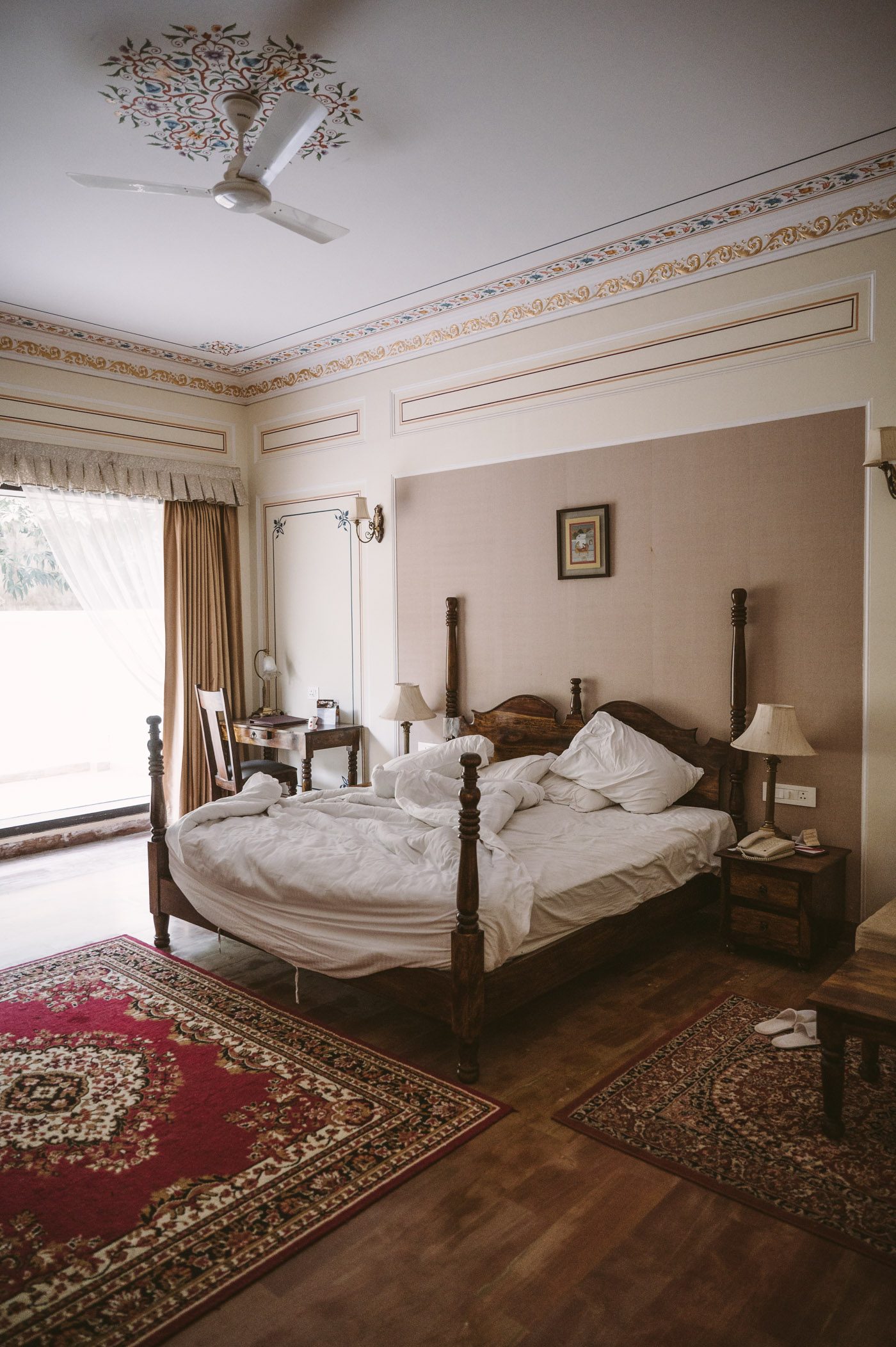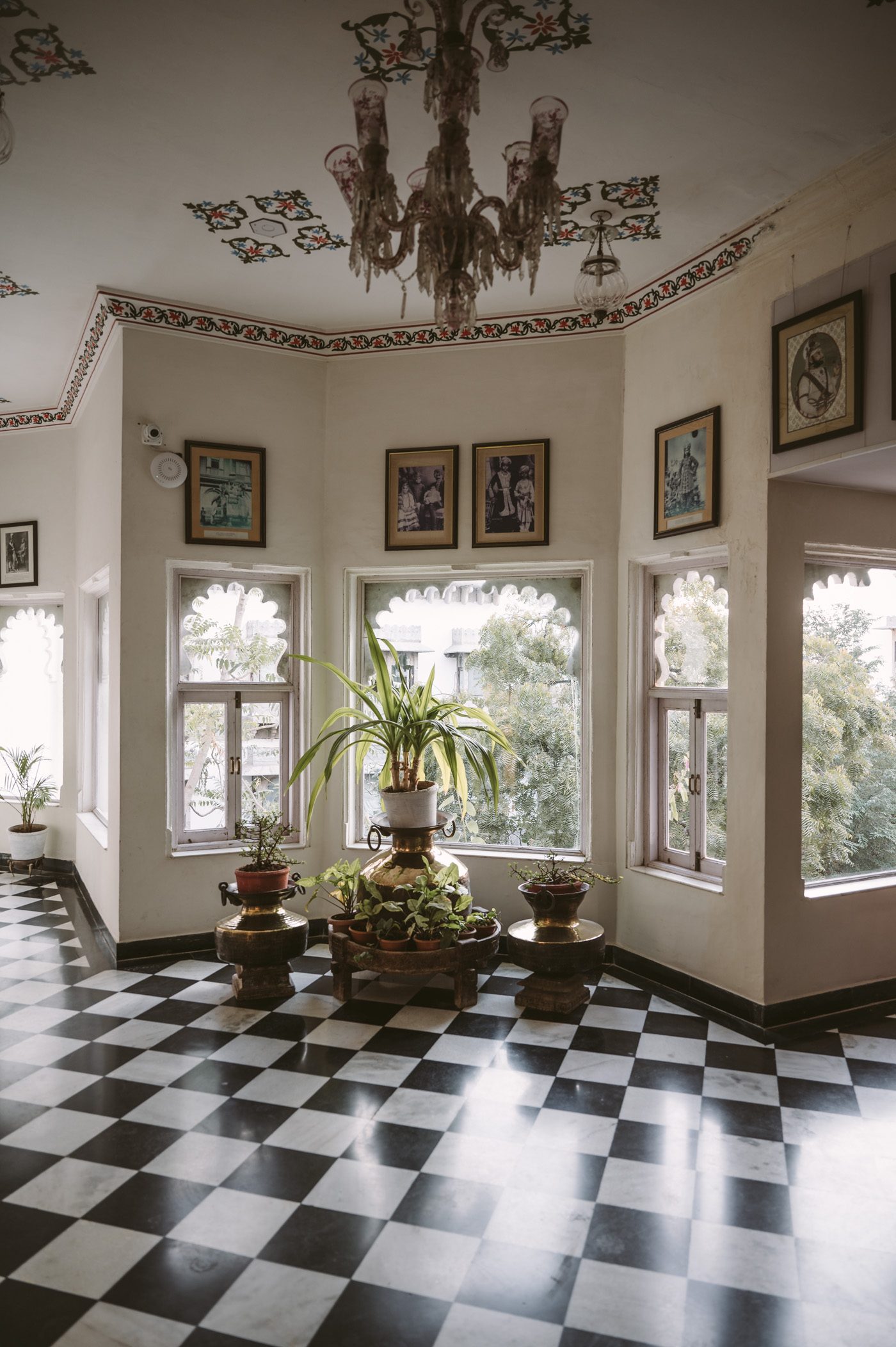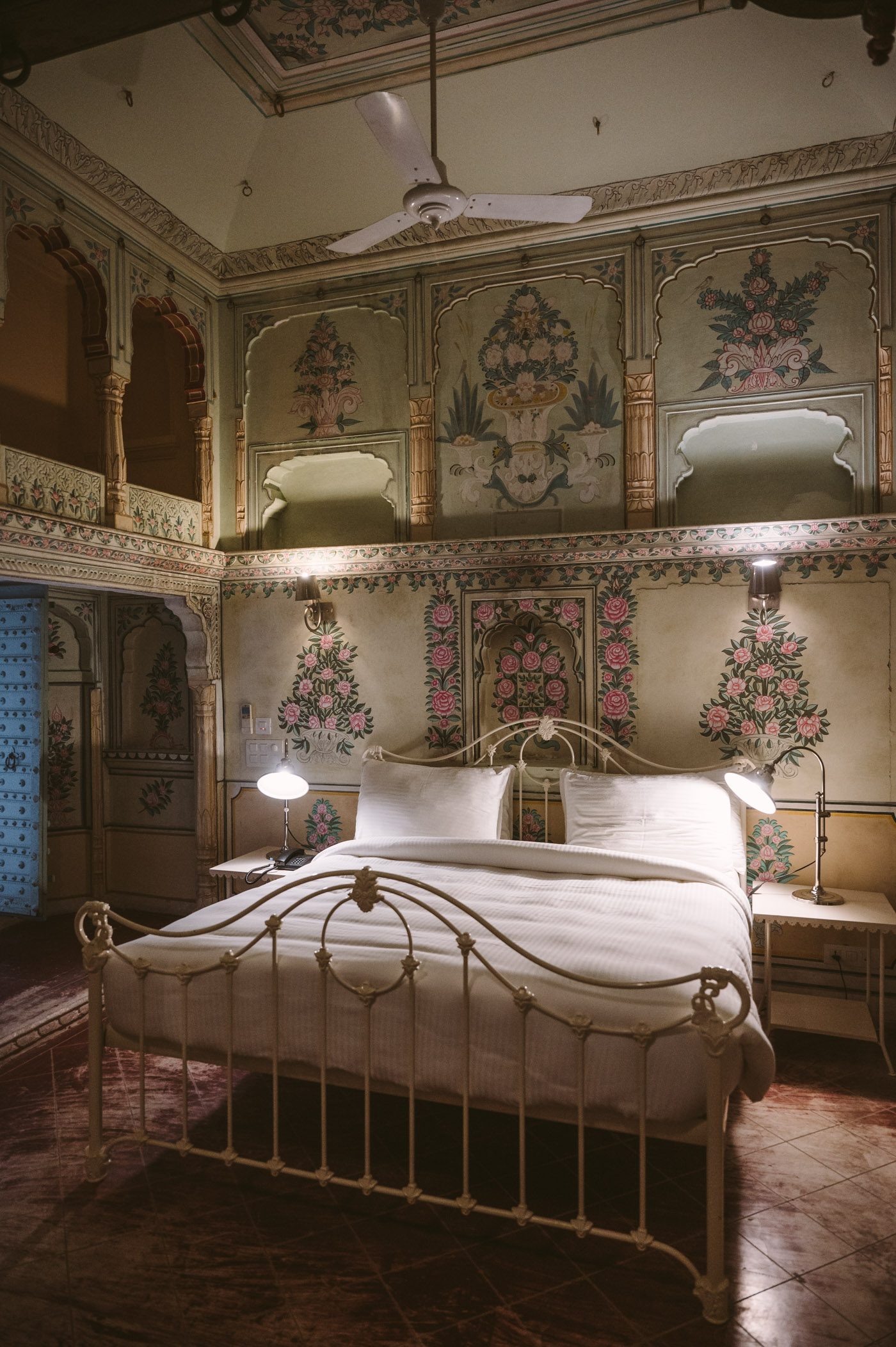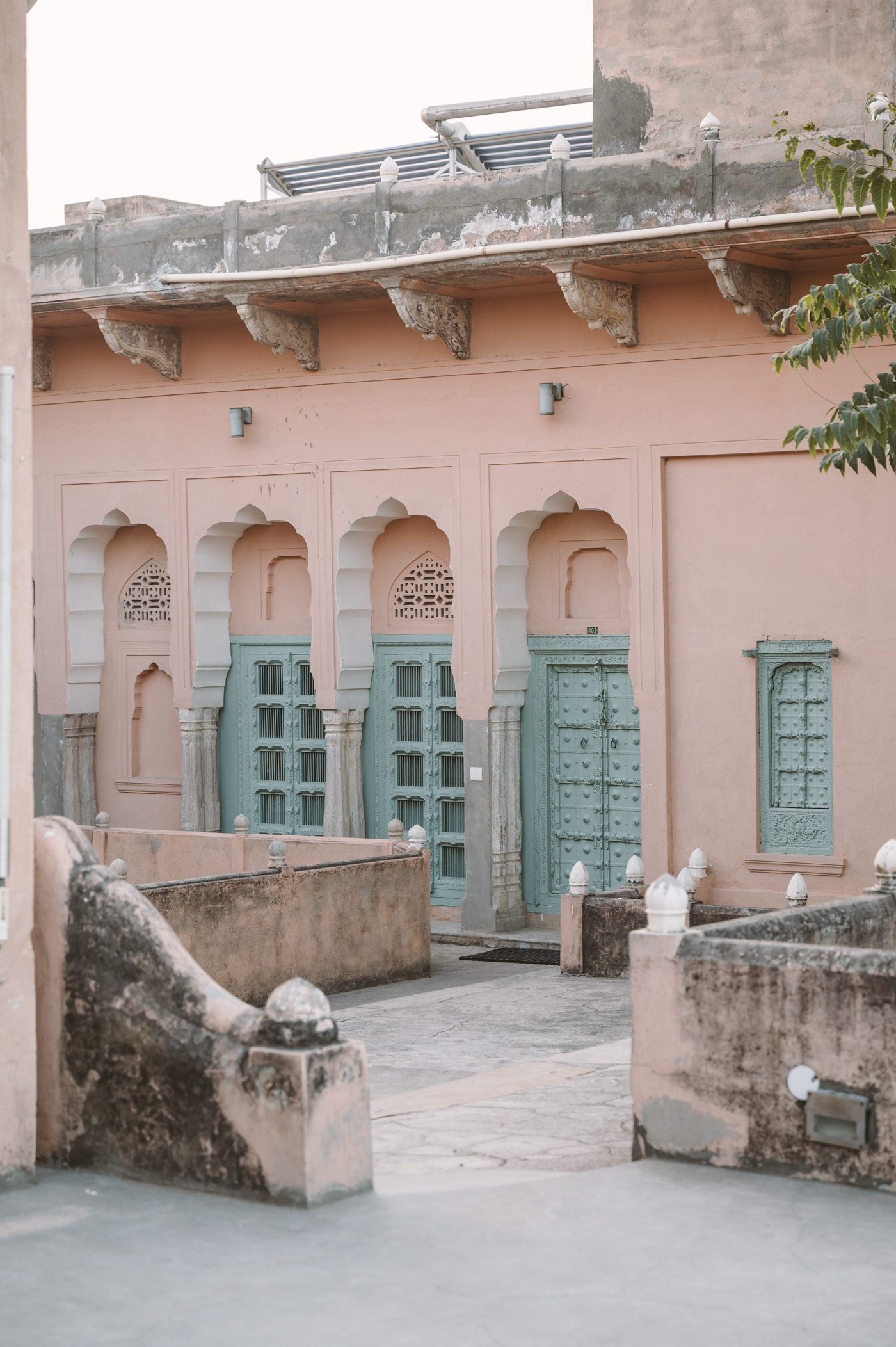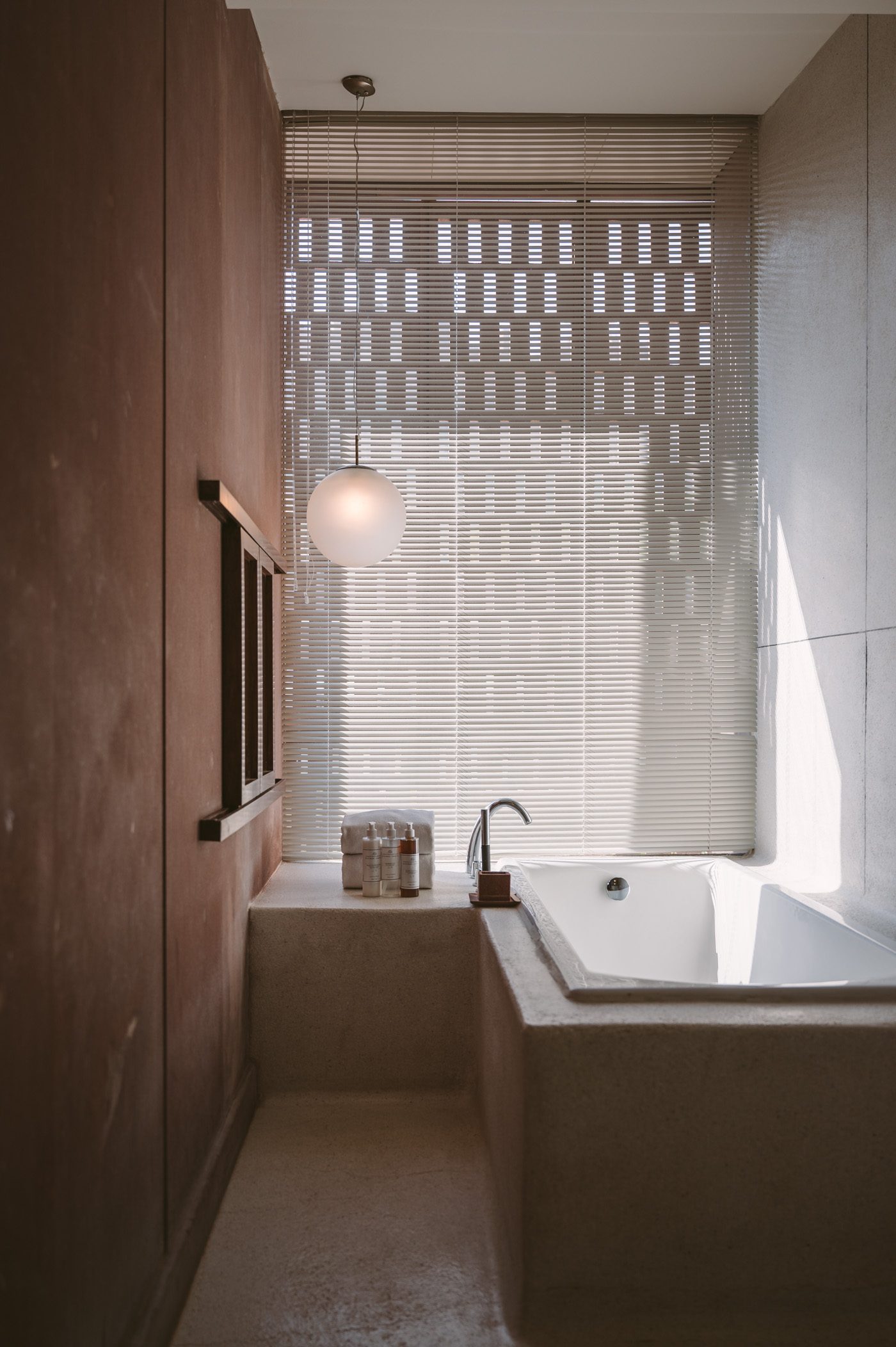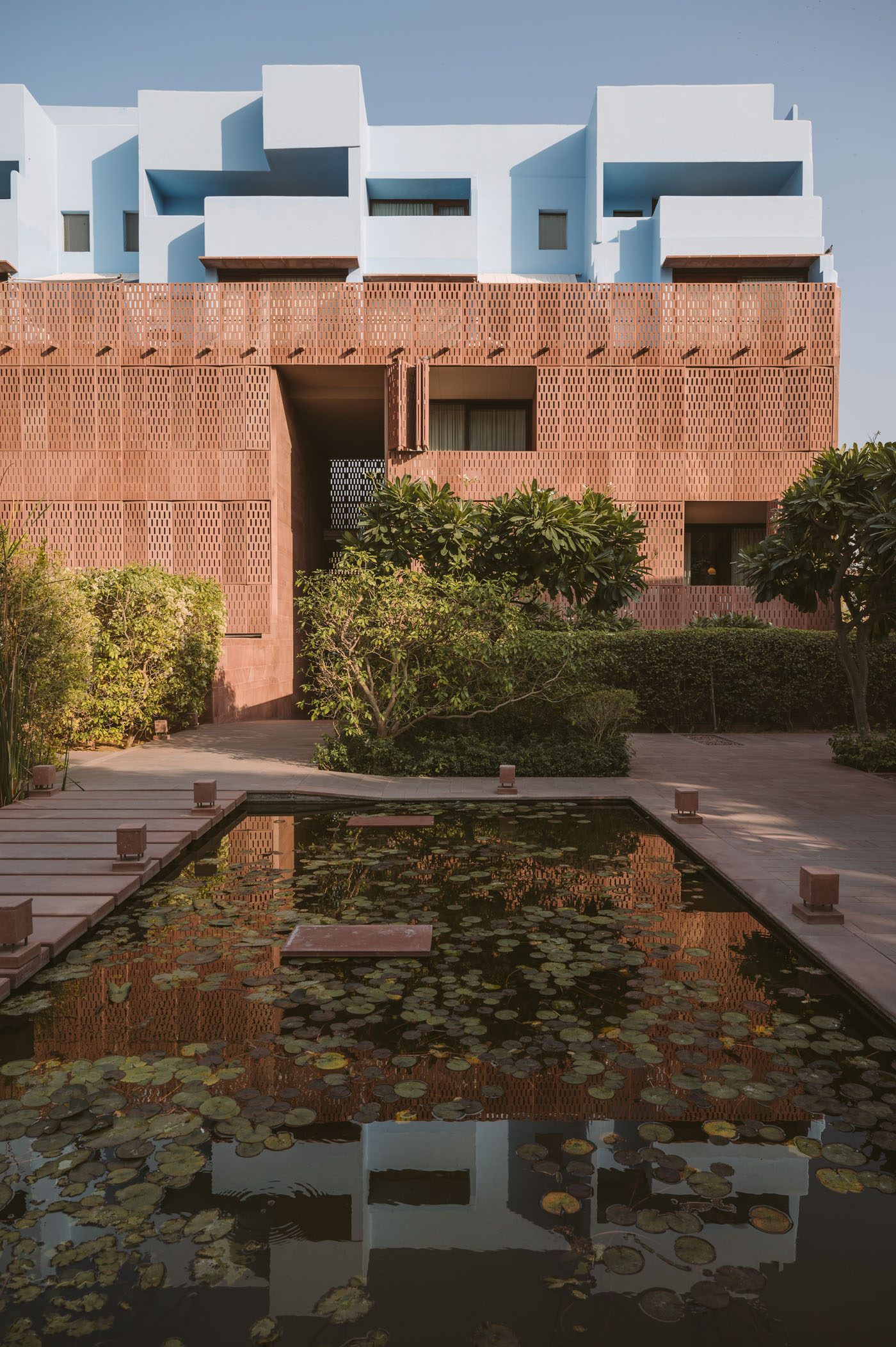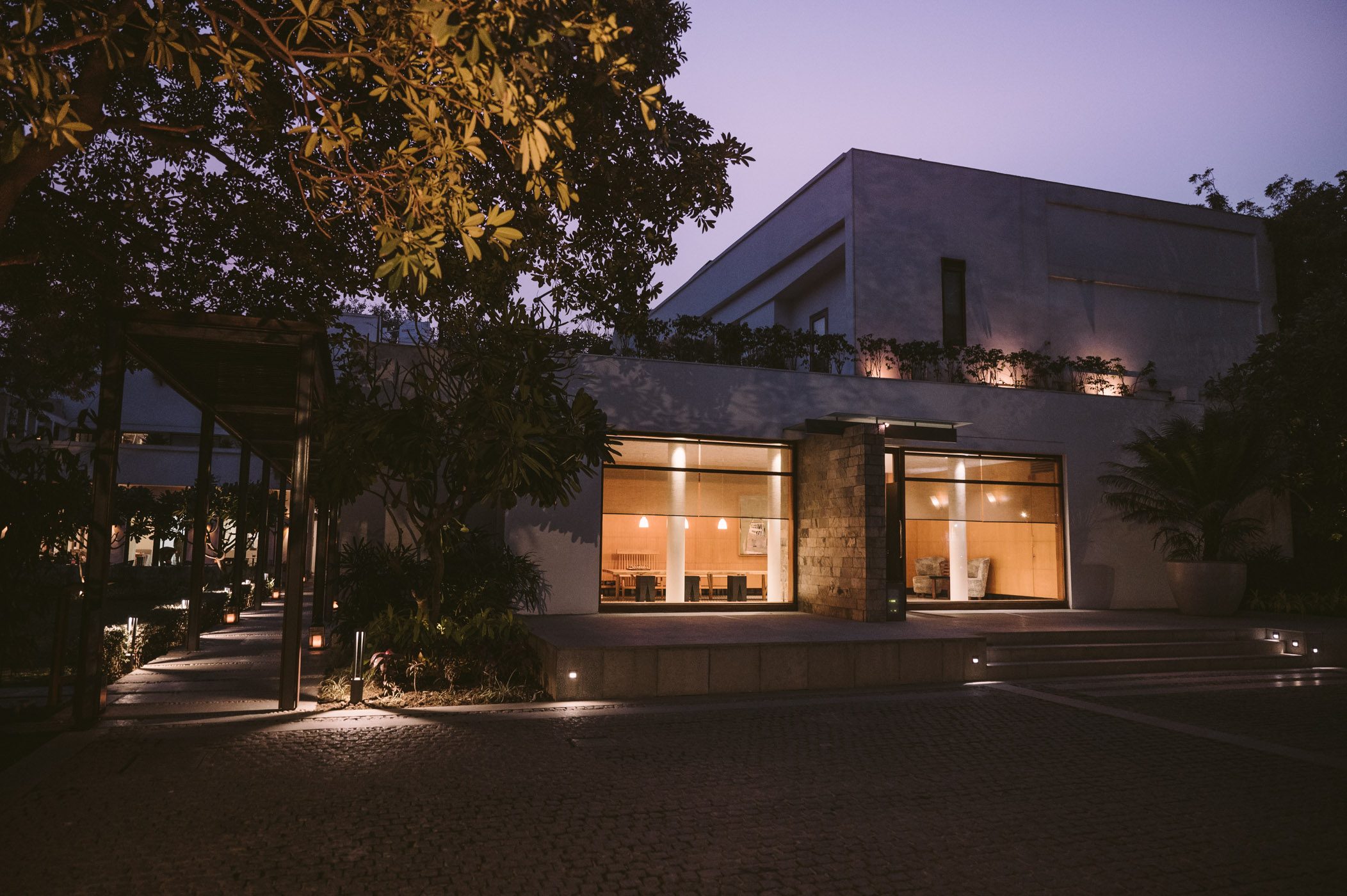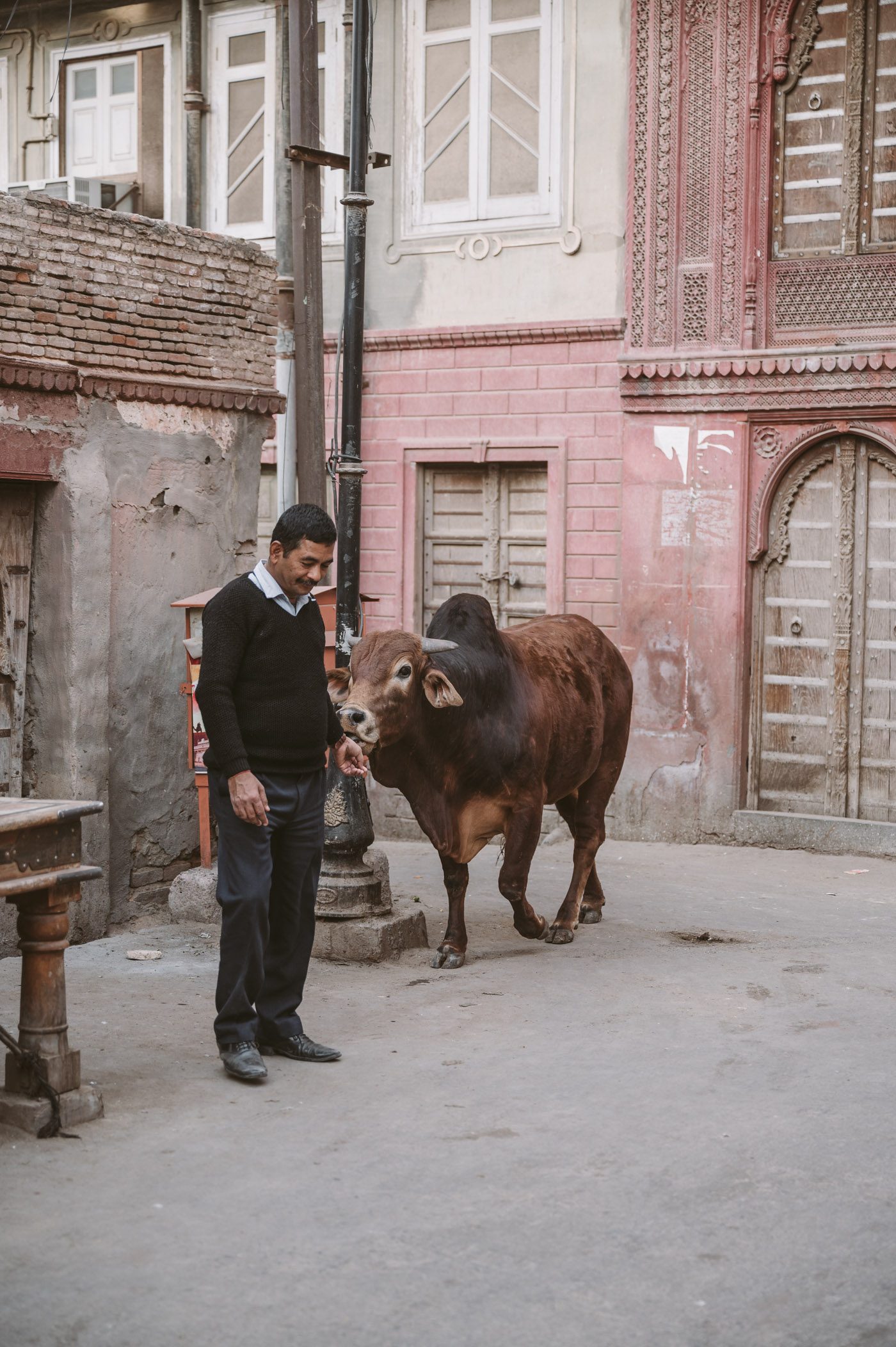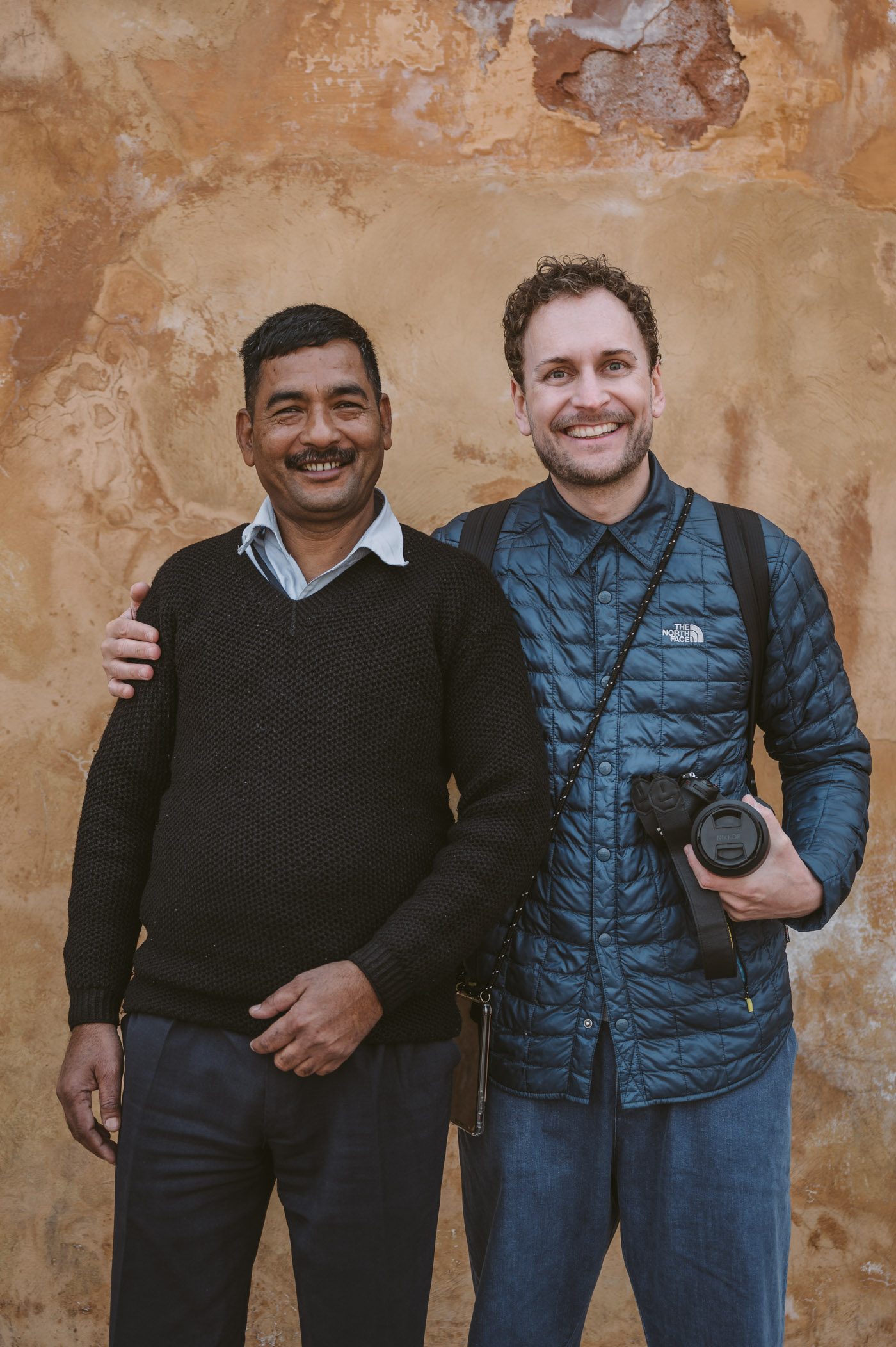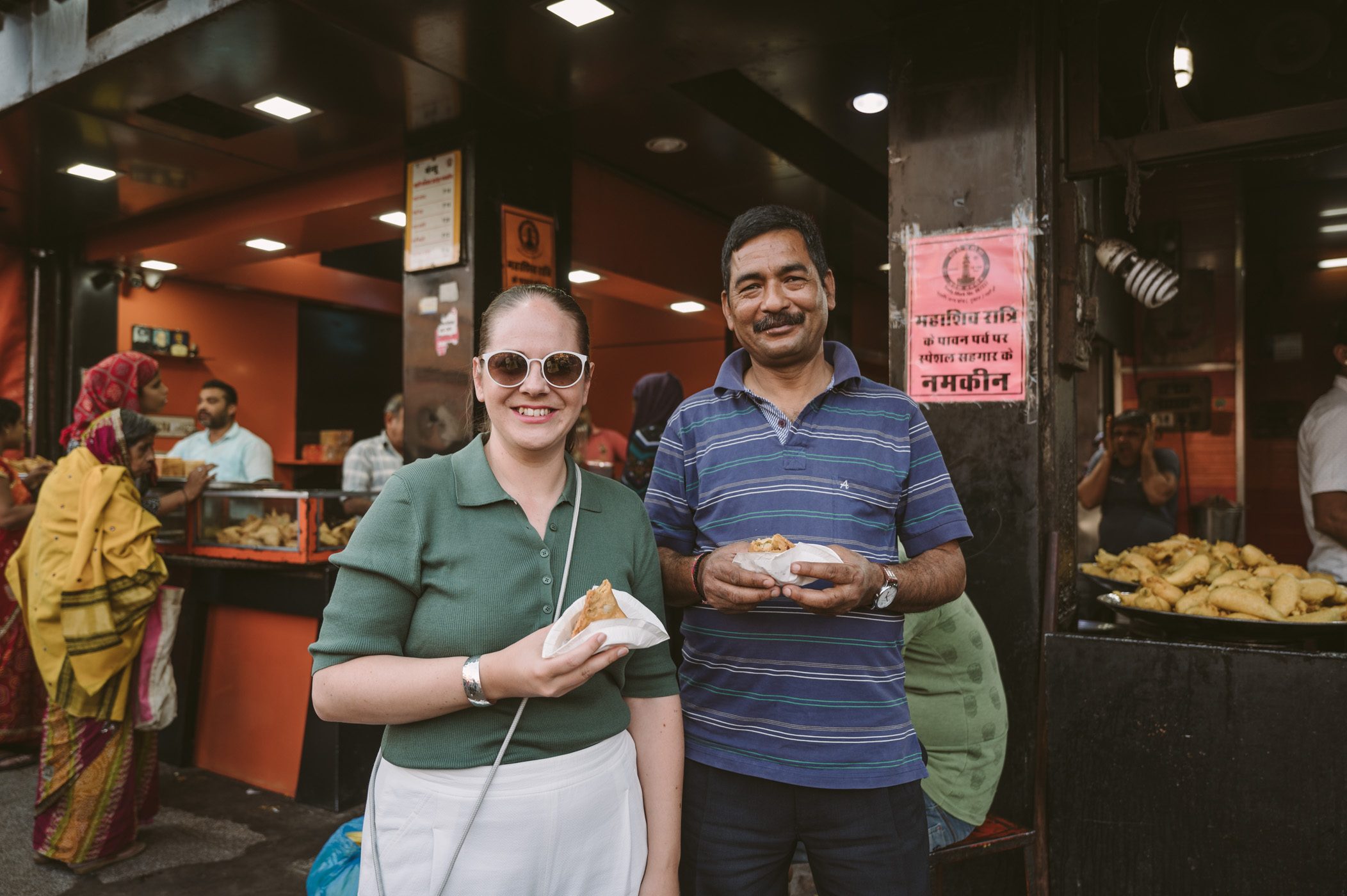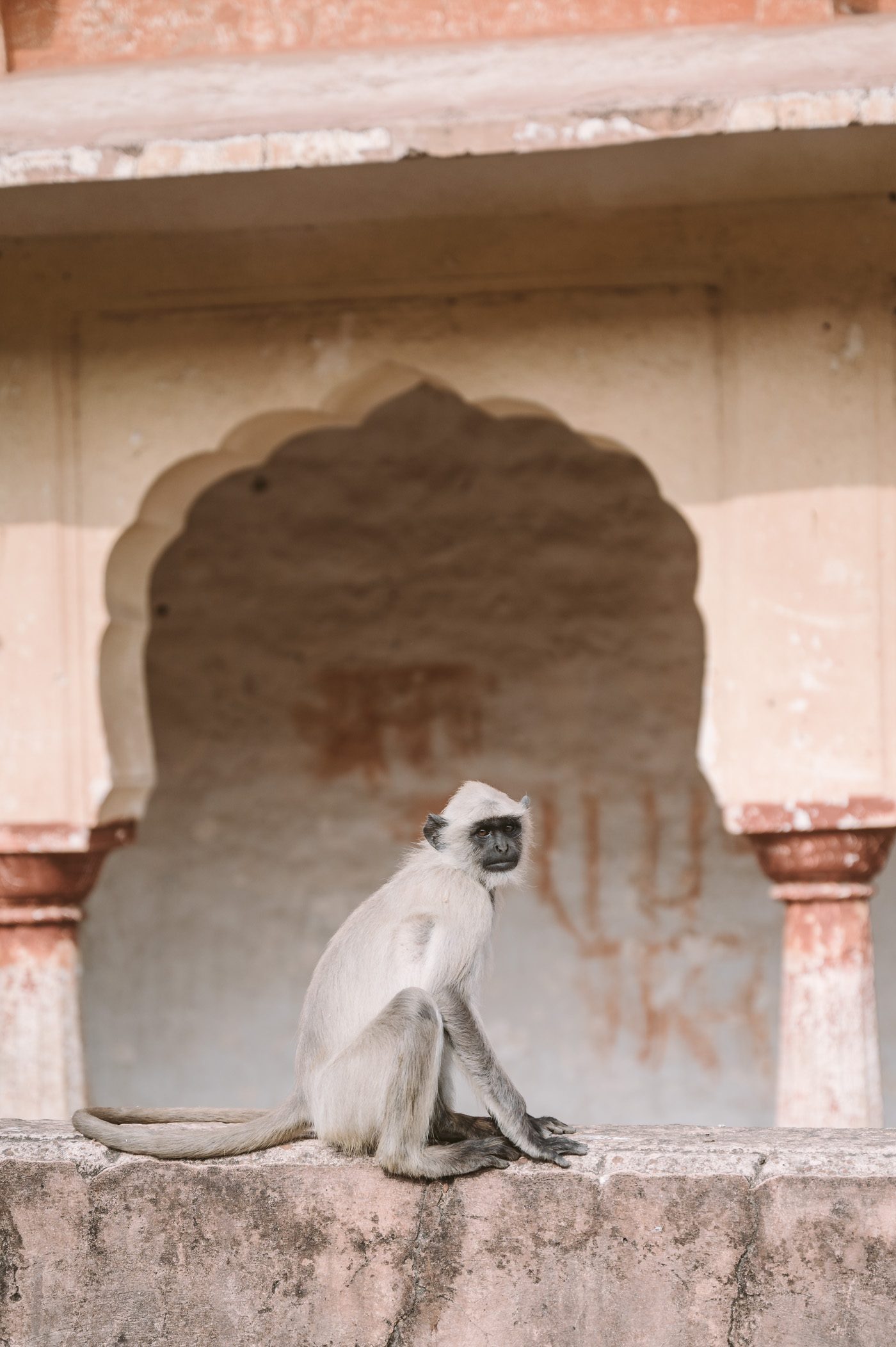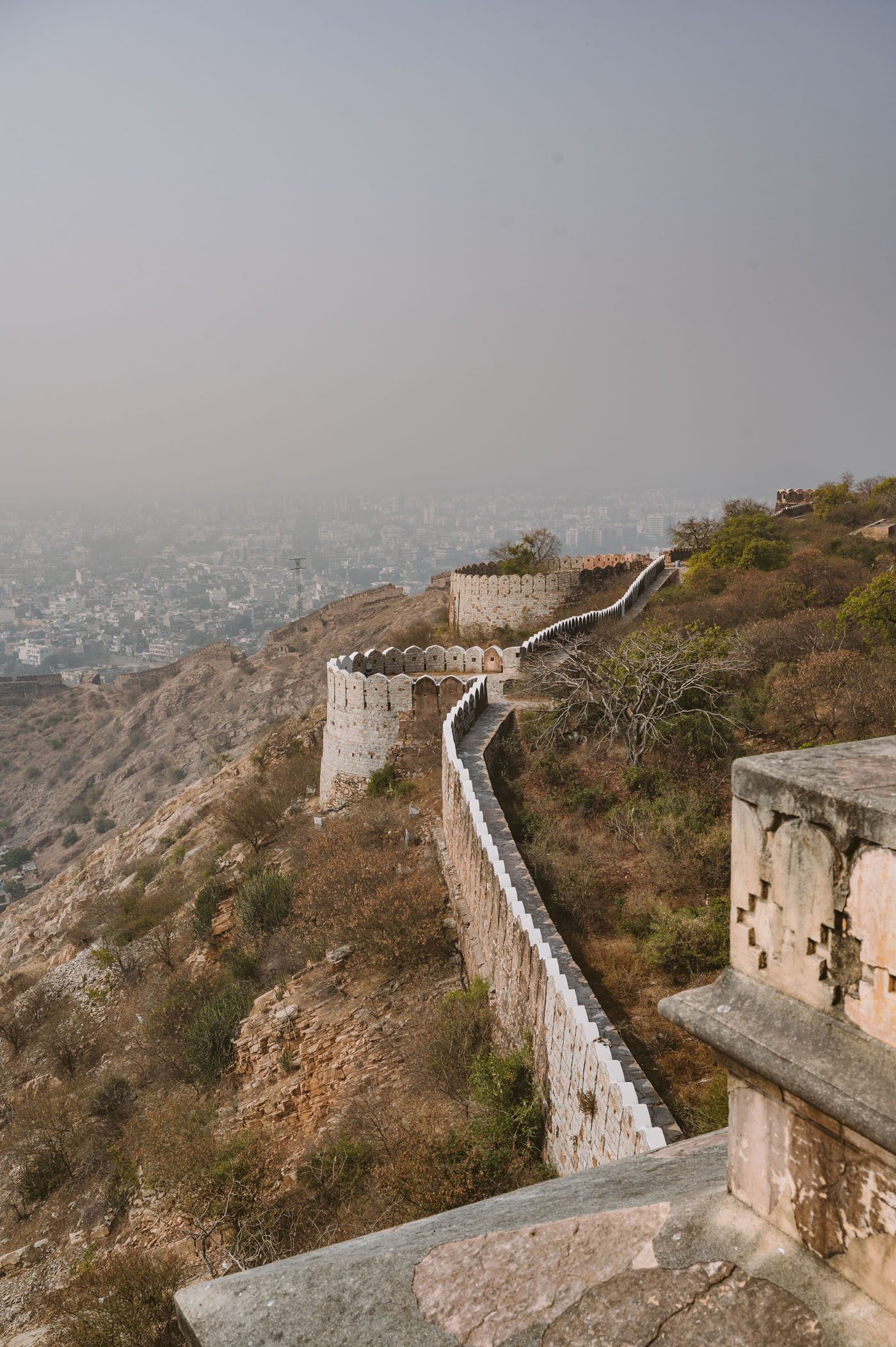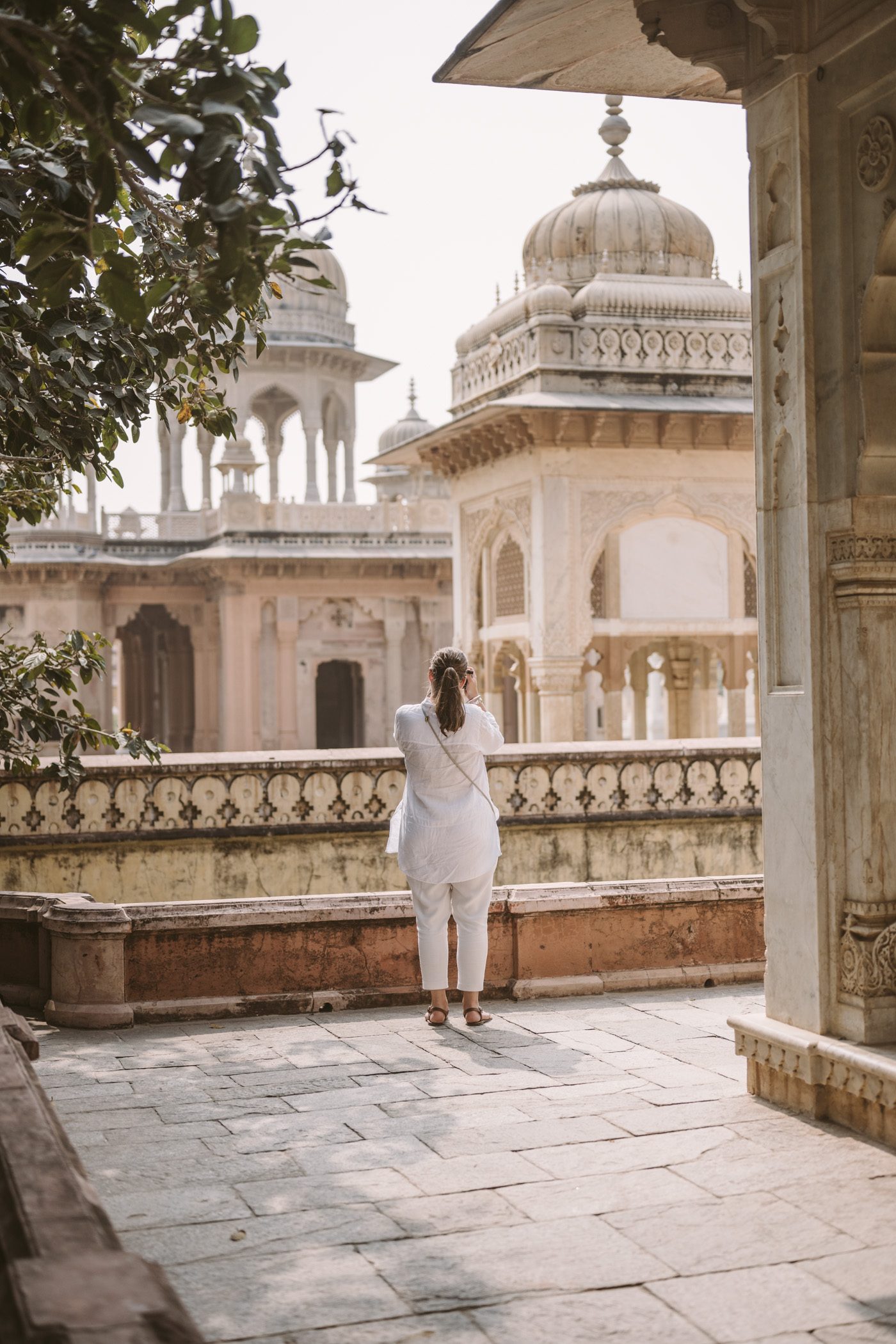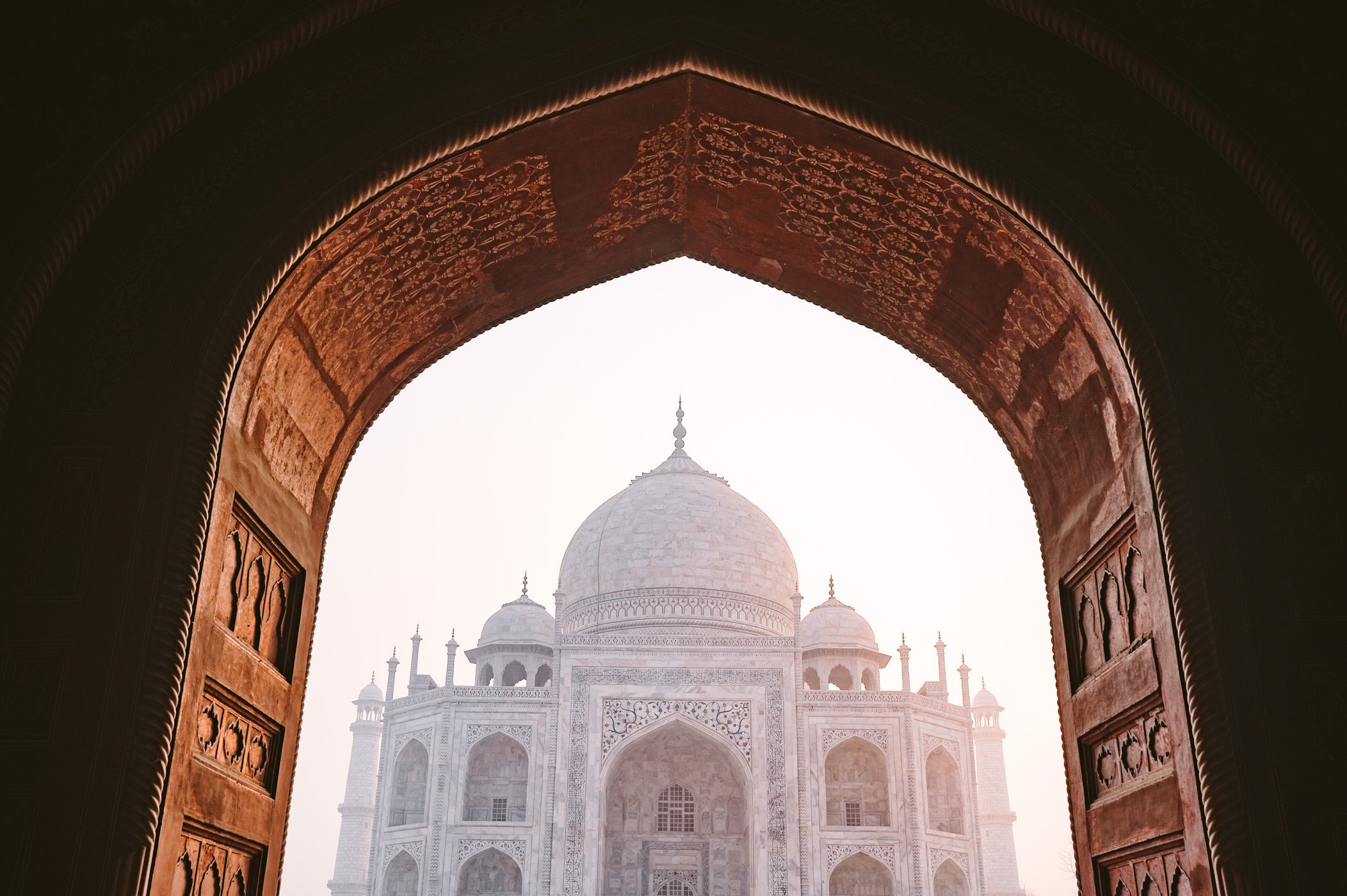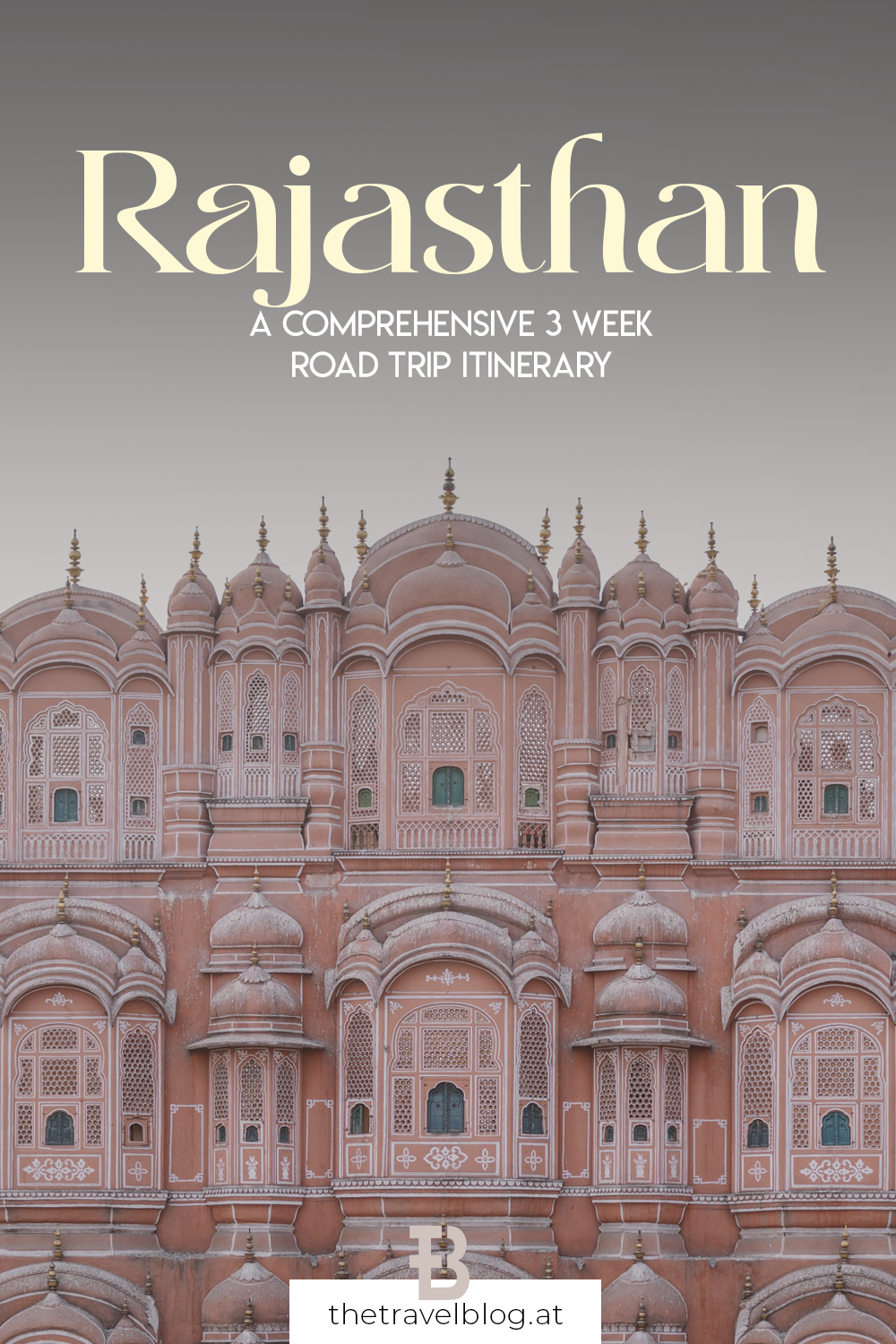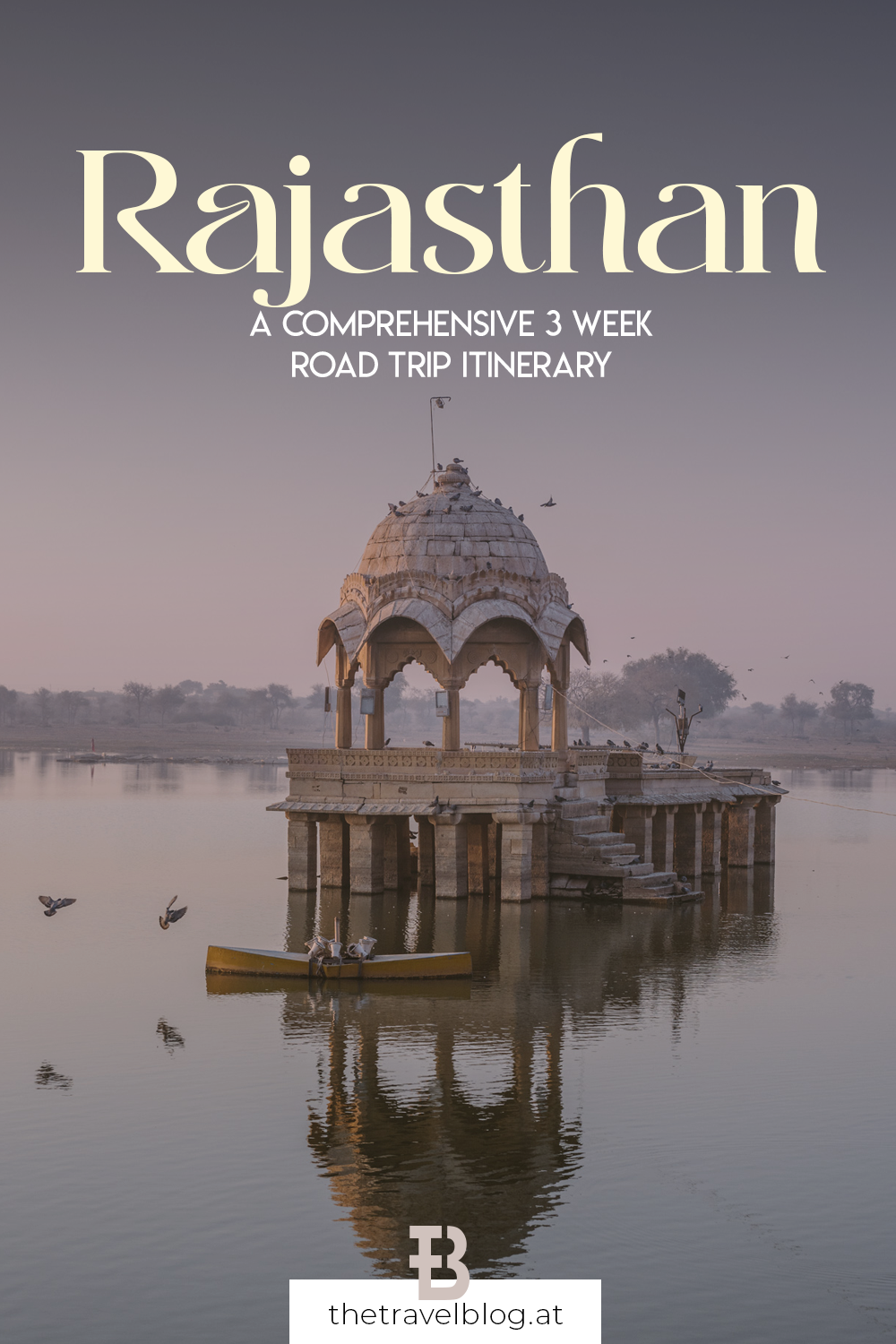Let’s rewind the clock a bit: It’s February 2020 and we’re somewhere deep in the bush of Ranthambore tracking tigers when the news about the first official cases of COVID-19 in our home country Austria hit. Little did we know at that time what would unravel in the next months and years and how much this pandemic would affect tourism.
When we returned home from India in March 2020 the first lockdown was just days away and all our excitement about sharing our trip details from Rajasthan vanished with it. Fast forward four years later and the world is open again for travellers like us and so we thought we should eventually share our experiences in a comprehensive Rajasthan travel guide and all our tips for a 3 week itinerary.
Welcome to Rajasthan
When we were planning our India trip we were thoroughly overwhelmed. Where to start? Where to end? Three weeks all of a sudden seemed very short. We were intrigued by the allure of Goa, the highlands of Ladakh, the Himalayas and everything in between, but we also knew we had to focus on one region – given the size of the country. And Rajasthan was always our first priority, so we decided to focus fully on Rajasthan, where every corner is steeped in history, culture, and vibrant colors.
If you’re planning a trip to Rajasthan and looking to immerse yourself in the royal splendor of this enchanting state, this guide gives you a comprehensive overview and all the details of a perfect three-week itinerary.
We’ll guide you through the heart of Rajasthan, where ancient forts, magnificent palaces, and bustling bazaars await!
The round trip will take you from the bustling streets of Delhi to the shimmering lakes of Udaipur, the golden sands of Jaisalmer, and the regal palaces of Jaipur. From the blue city of Jodhpur all the way to a tiger safari! Whether you’re a history & culture buff, a safari & wildlife enthusiast or simply an adventurous traveler, Rajasthan has something extraordinary to offer.
In this blogpost we’ll unravel the secrets of this captivating destination, introduce you to its rich heritage, and help you create memories that will last a lifetime – when you plan your own 3 week Rajasthan trip.
So, grab your travel journal, pack your bags, and let’s embark on this unforgettable journey through the majestic realm of Rajasthan.
Our 3 week Rajasthan itinerary
Well, it’s not just Rajasthan… In fact we also ventured out of the state for a few days, like most visitors will do. First we started our trip in Delhi, which technically isn’t located in Rajasthan, but comprises its own state. Delhi is the ideal gateway to Rajasthan and where most visitors will land from their international flights.
And later we also traveled to neighbouring state Uttar Pradesh to visit Agra and the iconic Taj Mahal for two days. In total we spent 22 nights in India, thereof 16 nights in Rajasthan and believe this is a very typical & ideal combination for a round trip.
Our Rajasthan (plus extras) road trip route
Delhi (1) – Mandawa (2) – Bikaner (3) – Deshnok (4) – Jaisalmer (5) – Dechu (6) – Jodhpur (7) – Ranakpur (8) – Udaipur (9) – Chittorgarh (10) – Bundi (11) – Ranthambhore (12) – Jaipur (13) – Abhaneri (14) – Bharatpur (15) – Fatehpur Sikri (16) – Agra (17) – Delhi (1)
Our overnight stays during the trip
On this road trip you’ll get to stay in some less frequented little towns like Mandawa or Bharatpur, but also enjoy extended stays in the larger cities like Udaipur. Of course you can alway mix and match how many nights you want to stay in each place, depending on your interests. The only thing we would recommend is to stay at least 3 nights in Ranthambore when you want to see tigers, as there are no sighting guarantees and anything less might be risky.
- 2 nights: Delhi
- 1 night: Mandawa
- 1 night: Bikaner
- 1 night: Jaisalmer
- 1 night: Dechu
- 2 nights: Jodhpur
- 3 nights: Udaipur
- 1 night: Bundi
- 3 nights: Ranthambhore
- 2 nights: Jaipur
- 1 night: Bharatpur
- 2 nights: Agra
- 2 nights: Delhi
If you have some extra time add a night or two in Jodhpur – we absolutely loved the city and could’ve easily stayed a little bit longer. The same goes for Jaipur, where 3 nights would also be advisable if you have more time. But: Don’t spare any nights in Ranthambore, as tiger sightings can prove tricky and you don’t want to leave without having encountered one, we needed all 3 days to finally see one!
Obviously Delhi is also a huge city, so the 4 nights in total (2 at the beginning and 2 at the end) weren’t nearly enough. Yet we believe that at the end of the trip it was a bit overwhelming to still do sightseeing in Delhi, so you could opt for a few days at a resort instead relaxing a bit instead of 2 more days of Delhi sightseeing. Or you fly home directly.
Other than that we were really happy with the pace of our trip and think we got to cover a lot in these 3 weeks!
Highlights from our Rajasthan trip
Believe us when we say, three weeks can be intense in Rajasthan. There’s so many new impressions, intense sensations (if not sensory overload). Therefore it’s not easy to comprise a best of, but these were some of our most memorable experiences from our three week Rajasthan trip:
- Rickshaw ride in Old Delhi
- Haveli stay in Mandawa
- Rat Temple in Deshnok
- Tented luxury camp in the desert
- The blue city of Jodhpur
- The pink city of Jaipur
- Private boat ride at Pichola Lake, Udaipur
- Tiger Safari in Ranthambhore
- Sunrise and sunset at the Taj Mahal
Delhi: Capital city and gateway to Rajasthan
Delhi, India’s bustling capital, is a dynamic fusion of ancient history and modernity. This metropolis is a microcosm of the nation’s diverse cultures, where historic monuments like the Red Fort, Qutub Minar, and Humayun’s Tomb coexist with contemporary skyscrapers and vibrant markets. Delhi’s contrasting neighborhoods, from Old Delhi’s chaotic lanes to New Delhi’s orderly boulevards, offer a unique blend of experiences. Yes, it’s loud, it’s dusty and sometimes a bit overwhelming. But it perfectly sets the tone for the rest of the trip – you’ll have to get used to your senses being challenged during this trip!
Our first day in Delhi:
- Arrive at airport
- Buy local SIM card at the airport
- Check-In Hotel
- Dinner
Our second day in Delhi:
In the morning we met our driver for the whole trip, the wonderful Vikram Singh. Even four years later we are still in touch, he was such a gem and without him this trip wouldn’t have been as lovely and relaxed. He managed to stay calm and professional even in the craziest road traffic situations (as in driving off the road to avoid colliding with a donkey cart). Personally, we wouldn’t recommend driving yourselves in Rajasthan, but hiring a driver like Vikram (if you want his contact details let us know, we’ll gladly recommend and share them).
- City Tour Old Delhi with rickshaw ride, Jana Masjid visit, stops at Chandni Chowk, Raj Ghat, Mahatma Ghandi Memorial, Bangla Sahib Gurudwara Sikh temple and kitchen, President’s palace & India Gate
- Lunch @ Oberoi Hotel
- Afternoon visit of Humayun’s Tomb
Mandawa: Haveli paradise
Mandawa, situated in Rajasthan’s Shekhawati region, is a charming town renowned for its well-preserved havelis (traditional mansions) adorned with intricate frescoes dating back to the 18th century. These grand mansions, including the Goenka Double Haveli and Murmuria Haveli, offer a glimpse into the region’s opulent history and artistic heritage. Mandawa’s narrow streets are a photographer’s paradise and transport you right back to a bygone era, where time seems to stand still.
Beyond its architectural treasures, the town provides a tranquil and relaxing atmosphere and we thoroughly enjoyed our first taste of Rajasthan here.
Our day in Mandawa:
- Haveli visit
- Shopping for miniature paintings and silk pashmina
- Overnight in a Haveli
Deshnok: Rat temple
Deshnok is a small town in Rajasthan, India, renowned for the Karni Mata Temple, often called the “Rat Temple”. This unique and sacred place is home to thousands of rats that are revered by devotees. It’s a fascinating and unconventional religious site, but not for the faint hearted.
We personally love rats, but can imagine it’s not for everyone 😉 We also really enjoyed mingling with the hundreds of locals and were asked for selfies constantly – so it was a fun experience! Deshnok was only a stopover on the way to Bikaner, so we didn’t stay overnight here.
Bikaner: Camel safaris
Unlike the more touristy Jaisalmer, Bikaner offers a unique experience with its camel safaris in the desert. Personally we opted out of this activity, as we don’t really like camel riding and also don’t want to endorse it as it’s hard to judge how much animal cruelty is involved. But the city itself is worth a stay nevertheless. It’s home to the intriguing Fort Junagarh, which is worth exploring, showcasing the rich history of the region. We also really enjoyed riding around the small town in a rickshaw and just walking around the colourful streets to capture some daily life.
Our day in Bikaner:
- Arrive in the afternoon after Deshnok stopover
- Junagarh Fort
- Rickshaw tour around Rampuria Haveli and Jain temple
- Additional idea if you want to explore more: Stop by Devi Kund Sagar Cenotaphs (Sharah Kajani, Rajasthan 334001)
Jaisalmer: A living fort in the desert
Jaisalmer, the enchanting sandstone city, boasts a living fort that emerges majestically from the desert landscape. It’s a popular hub for camel safaris, offering an authentic desert experience (if you want to do this – given that animal cruelty is still prevalent here). But even without a camel safari Jaisalmer is worth the visit as it’s unique architecture makes it appear like a scene from a Star Wars movie.
Our day in Jaisalmer:
- Gadisar Lake visit at sunrise
- Walk around city, fort and market
- Salam Singh Ki Haveli (Moti Mahal) visit and passing by at Patwon ki Haveli/ Patwa Haveli (Kothari’s Patwa Haveli)
- Sunset at the fort’s stone wall
Dechu: A luxury desert tent stay
When in Jaisalmer, you should definitely consider also venturing out to the Thar Desert for a stay in one of the (more or less) luxurious tented camps. The desert’s mesmerizing sunsets and starry nights create a magical atmosphere, perfect for stargazing and relaxation. Here we also encountered the mandatory desert camels (although we opted out of riding them, again), but we spent a lovely evening with the local camel herders with live music and dinner at the open fireplace.
Our day in Dechu:
- Arrival at Samsara Resort
- Lunch at the resort
- Pick-Up in a jeep for a desert safari
- Check-In at Samsara desert camp
- Sundowner with local music & dancing
- Private Dinner on a sand dune
Just be aware that you won’t get this pure feeling of desert solitude here as most camps are located in close vicinity to each other and to local settlements.
Jodhpur: The blue city
After our short desert exploration it was time to head back to a city. Jodhpur, known as the “Blue City” of Rajasthan is famous for its stunning azure-hued buildings that create a striking contrast against the arid landscape. The city is home to the imposing Mehrangarh Fort, offering panoramic views, and it serves as a gateway to the Thar Desert, making it a popular tourist destination. We absolutely loved walking around the blue city, shopping souvenirs, strolling through markets and eating all the street food at the market stalls.
Our first day in Jodhpur:
- Mehrangarh Fort visit
- Check-In at RAAS luxury hotel
- Market visit around Clock tower, Snack of Samosas recommended by our driver Vikram (Shahi Samosas, 95/B Clock Tower Rd, Nai Sarak Clock Tower, Jodhpur, Rajasthan 342001)
Our second day in Jodhpur:
- Toorji Ka Jhalra Bavdi 18th century stepwell (right next to RAAS hotel)
- Relax at pool and Lunch at hotel
- Afternoon tour of Umaid Bhawan palace, Monkey garden (Mandore garden)
- Shopping at Sambhali Boutique (an incredible women’s cooperative)
- Dinner at RAAS hotel
Ranakpur: Intricate white Jain temple
On the next day we had a stopover on the way from Jodhpur to Udaipur at a serene place called Ranakpur. It is particularly famous for its impressive Jain temple (sometimes called Chaumukha Temple or Adinath temple or simply Ranakpur Jain Temple). This architectural wonderland showcases intricate marble carvings, with 1,444 beautifully crafted pillars, each unique in design.
Nestled in the Aravalli Range, Ranakpur offers a tranquil escape with its lush greenery and cool climate. We loved the feeling of spiritual solace here and stayed for quite a while, also sitting down in some places and simply soaking up the energy of the temple. Many people also take the time to meditate here for a while. A must stop if you ask us and rather plan a few hours here to really get to feel the calm atmosphere.
Udaipur: City of lakes
After quite a long day of driving all the way from Jodhpur we finally arrived in iconic Udaipur, also called Venice of Rajasthan or “City of Lakes and Palaces”. We decided to stay here for three nights to get some time to relax after the intense first 8 days in Rajasthan. Upon arrival a rickshaw picked us up and brought us (and our luggage) to the hotel – as many of the streets are too narrow for cars!
Nestled by serene lakes and adorned with splendid palaces, it offers a perfect setting for a relaxed getaway. Our first evening started with a wonderful 8 course farm-to-table dinner with local ingredients at SYAH Udaipur. The rest of our stay here was rather slow-paced and we enjoyed this break in the middle of our road trip.
Our first day in Udaipur:
- City Palace visit
- Jagdish Temple visit
- Shopping at local tailor and silver shop
- Relaxing at hotel
- Sunset boat ride
Our second day in Udaipur:
- Sunrise at Ahar Cenotaphs (which unfortunately have been permanently closed to visitors by now)
- Breakfast at hotel & relaxation
- Afternoon cable car ride at Karni Mata Ropeway
- Sunset overlooking the lake and city at the top at Shri Manshapurna Karni Mata Temple
Chittorgarh: India’s largest fort
After three relaxed days in Udaipur it was time for another long travel day from Udaipur to Bundi. To break up the trip we stopped at Chittorgarh Fort. Chittorgarh is India’s largest fort, and a UNESCO World Heritage Site with a rich history of battles and Rajput legends. The massive fort complex houses numerous palaces, temples, and stunning architecture. It’s a testament to the resilience and grandeur of Rajasthan’s royal past. This was only a short stopover and then we continued on to our next stop Bundi. Maybe we also suffered from a mild case of fort overload at this point. No matter how grand they are at this point we were a bit ready for something different 😉
Bundi: Off-the-beaten-path
Nestled in the Aravalli Range of Rajasthan, Bundi is a captivating town steeped in history and architectural splendor and a bit off-the-beaten-path when it comes to Rajasthan round trips. Known as the “city of step wells”, Bundi is home to over 50 step wells and the stunning Taragarh Fort, which is adorned with intricate frescoes and provides panoramic views of the town.
Bundi was probably one of our most favourite stops, as it’s such an incredible combination with so little visitors. Bundi’s charm lies in its well-preserved, less touristy ambiance, allowing for an authentic experience of Rajasthan.
Our day in Bundi:
- Chitrashala (= Garh Palace)
- Stepwell at Bundi Fort
- Rani Ji Ki Baoli Stepwell
- Sukh Mahal Palace
- Chai @ Sawariya Chai house
Ranthambore: On tiger safari in India
And then we headed to the most anticipated part of the trip: A tiger safari! Ranthambore National Park is a world-renowned wildlife destination celebrated for its iconic Bengal tigers. Spotting these majestic creatures in their natural habitat is a thrilling experience, although it took us many attempts to finally encounter a tiger in it’s natural habitat (read more about why it’s so complicated and follow our tips for a successful tiger safari here).
We stayed in Ranthambore National Park for 3 nights and it was worth the extended stay as it wasn’t easy to finally get a spot in a safari vehicle that was allocated the right zone… (which was the only chance to really see a tiger). And only then after a few unlucky attempts we saw one majestic female tiger – but this moment was worth it for eternity!
Our tip: Also visit “Dastkar Ranthambhore” – a private non-profit established in 1981, working to support traditional Indian craftspeople, many of them women and village based. It’s a great place to shop for souvenirs and also helps local communities participate in the economic success of the region!
Jaipur: The pink city
After three days of tiger safaris it was time to go back to a city – and what a beautiful one – yet again! Known as the “Pink City,” Jaipur is a must-visit destination in Rajasthan. The city is adorned with majestic forts, opulent palaces, and vibrant markets, making it a paradise for history buffs and shopaholics alike. Immerse yourself in the royal heritage as you explore the grandeur of the Amber Fort and Hawa Mahal, and don’t forget to indulge in shopping for traditional handicrafts.
Our first day in Jaipur:
- Galta Ji temple for Shiva festival
- Albert Hall museum
- Afternoon tea at luxurious Taj Rambagh Palace
Our second day in Jaipur:
- Sunrise at Jal Mahal
- Panna Meena ka Kund Stepwell (which we found overrated)
- Visit of Amer Palace / Amber Fort (make sure not to ride elephants here, this practice is outdated and pure animal cruelty)
- Jaigarh fort & Nahagarh Fort (they are all impressive, but to be honest at this point we were already a bit tired of forts)
- Gaitor Ki Chhatriyan (this one we loved though – it’s a royal crematory with loads of carved stone monuments and was a bit more quaint with very little visitors)
- Visit of City palace Jaipur with Royal Grandeur Tour (there’s various ticket options, only this one grants entrance to several hidden rooms like the blue room Sukh Niwas, the pink room Diwan-i-Aam and the mirror room)
- Shopping for silver jewellery and silk pashminas
- Hawa Mahal (best seen from Tattoo café on other side of street)
- Get an analog photo taken at Tikam Chand “The Old Photography” (P-120, Hawa Mahal Rd, near Old Vidhan Sabha, Gangori Bazaar, J.D.A. Market, Pink City, Jaipur, Rajasthan 302002)
As you can see especially our second day was quite a long and exhausting day – so it might be worth adding one more night in Jaipur if your itinerary allows!
Abhaneri: The step well town
On our way from Jaipur to our next stop we made a quick detour to also visit Abhaneri, a quaint village in Rajasthan, which is famous for its step well called Chand Baori, one of the deepest and most intricate stepwells in India. It’s an architectural marvel, featuring 3,500 steps and stunning geometric patterns. Compared to other step wells this is much more touristy (as in you pay an entrance fee, it’s not used anymore by locals and you cannot go down the steps, which we understand for safety reasons). Yet, other step wells gave us better experiences. It’s still worth the stopover just for the lovely village atmosphere and to break up your travel day.
Bharatpur: Bird sanctuary
In favour of another day in Jaipur we had opted for a visit of Bharatpur, which is renowned for Keoladeo National Park, a UNESCO World Heritage Site and a haven for bird enthusiasts.
This park, formerly a royal hunting ground, is now a vital wetland habitat attracting migratory birds from across the globe. Every year, thousands of species flock to this avian paradise, making it a birdwatcher’s dream. We would only recommend this stop if you’re a keen wildlife enthusiast or bird lover. Other than that skip Bharatpur in favour for another day in Jaipur. Personally we loved the atmosphere of the park and really enjoyed our time here.
Fatehpur Sikri: Mughal city (Uttar Pradesh)
Let’s be honest, at this stage of the trip we were quite tired already and not really in the mood for another historical monument. Yet on our way from Bharatpur to Agra this was a planned stop and so we went – if only a little unwillingly 😉 The Mughal city of Fatehpur Sikri is a UNESCO World Heritage Site and the Jama Masjid mosque is visited by religious devotees. This place was not our favourite and we would skip it next time (but don’t tell anyone please 😉 ), but it might have had to do with our palace fatigue at this point as well…
Agra, Uttar Pradesh: Home to the Taj Mahal
Yes, so this is the point where we technically aren’t in Rajasthan anymore – but most Rajasthan round trips include the city of Agra anyhow. Although the city itself isn’t so appealing, it’s home to the iconic Taj Mahal, a UNESCO World Heritage Site and one of the Seven Wonders of the World.
This white marble masterpiece, built by Emperor Shah Jahan in memory of his beloved wife Mumtaz Mahal, epitomizes eternal love and architectural perfection.
Now please be warned: The Taj Mahal draws millions of visitors from around the globe and this is also how a visit here feels. You’ll stand in line a lot – even when you come at the earliest possible moment of opening at sunrise. Yet, even when you’re shoved through the entrance gate in a huge crowd, the first view of it is awe-inspiring. We recommend to hire a guide here to make sure you understand the significance and don’t miss a part of it!
Other than that Agra is also home to historical gems like Agra Fort which we really liked.
Also worth a visit: Mehtab Bagh – a park on the opposite end of the Taj Mahal – where you can see it best at sunset and watch locals herd their cattle at the river bank. Our tip: Pay the extra rupees at the second gate in front to get even better views.
Back to Delhi
From Agra our trip circle closed and we went back to Delhi, where we visited a few places, which we had missed during the first two days:
- Akshardam temple
- Agrasen ki baoli
- Jantar Mantar
- Lal Bahadur Shastri Memorial
- Gandhi Smriti
- Lodi Park
- Shopping at Khan market
- Nicobar: trendy Indian wear
- Ensemble: elegant silk saris
- Scentido: Niche Perfumery
- L‘Opera Café
This marks the end of our round trip. Three intense and exciting weeks in Rajasthan with many lasting impressions are behind us. Most vividly – even after four years – we remember the majestic tiger encounter in Ranthambore, the night spent in the Thar desert and the life in the streets in every city or village we visited, which couldn’t be more colourful and scenic.
Rajasthan has left a deep impact on us and we lived off of these memories through much of the lockdowns and despair during the months that followed this trip.
This was another reminder that some trips are less relaxing than others, but offer something else in exchange.
Where to stay in Rajasthan: Havelis, palace hotels & desert camps
To make the guide complete here’s the full list of the places we stayed at during our trip. Please know that many of those places are comfortable, but not luxurious.
Wherever possible we opted for local stays in historic Havelis or palaces as opposed to chain hotels (which we also couldn’t avoid fully – in Agra for example).
Some of the places we stayed at were crumbling and old, some felt like they hadn’t been updated in more than a few decades. We sometimes climbed up small wooden steps to get into royalty sized beds, at other times we found ourselves in ornately decorated chambers equipped with century old furniture.
For us this made much of the charm of the trip, but in between we also spoiled ourselves to some comforts and modern luxuries (RAAS in Jodhpur, Samsara Desert Camp where we upgraded to the luxury tent, The Manor in Delhi). Here’s the full list:
- 2 nights: Delhi – The Manor (very comfortable, set in a 1950s building in a secluded calm neighbourhood)
- 1 night: Mandawa – Vivaana Culture (ornately decorated and restored 19th century Shekhawati Haveli with lots of flair)
- 1 night: Bikaner – Maharaja Ganga Mahal (heritage hotel), luxury option: Narendra Bhawan
- 1 night: Jaisalmer – 1st Gate Home Fusion (boutique hotel in the fort with rooftop and vegetarian restaurant), other option: Rang Mahal
- 1 night: Dechu – Samsara Desert Camp (luxurious tented camp with many desert activities)
- 2 nights: Jodhpur – RAAS (highly recommended luxury hotel in the middle of Jodhpur right next to an iconic step well)
- 3 nights: Udaipur – Udai Kothi (colourful hotel with views of the lake from the rooftop), luxury option: Taj Lake Palace
- 1 night: Bundi – Hadoti Palace (we called it the “White House” of Bundi, a bit of a weird place, but comfortable 😂)
- 3 nights: Ranthambhore: Tigress (heritage style hotel with spacious rooms, but not our preferred option), luxury option: SUJÁN Sher Bagh
- 2 nights: Jaipur: Shahpura House (19th Century Palace of Shahpura Royal Family), luxury option: Rambagh Palace
- 1 night: Bharatpur – Laxmi Vilas Palace (palace of the erstwhile Jat rulers of Bharatpur, in dire need of updates)
- 2 nights: Agra – Courtyard by Marriott (standard city hotel, not our favourite), luxury option: The Oberoi Amarvilas
- 2 nights: Delhi – The Manor (back at the beginning, because we liked it so much)
How to travel Rajasthan
As mentioned before we hired a private driver for our round trip and never regretted our decision. Although we travel around a lot independently, Rajasthan would be one of the exceptions where we believe it’s really worth hiring a driver.
The roads are a dusty labyrinth of insane traffic dotted with potholes, a myriad of rikshas, donkeys and cows and people walking on highways as well as constant encounters with suicidal motorists driving in the wrong lane even on motorways.
Not to mention the wealth of knowledge a driver brings (if you don’t want to hire an additional guide, which also comes recommended). Personally we sometimes enjoy a bit of solitude and just experiencing places on our own – so we didn’t want to have a guide with us for the full 3 weeks.
Yet at some locations we hired additional guides to learn more about the places we visited.
A driver doesn’t usually act as guide, so he would stay behind in the car during your site visits, yet sometimes our gem of a driver Vikram would join us for lunch or the occasional haggling at a market.
Vikram bought entrance tickets for us and also made sure we stood in the right line at times. He would show us his favourite places to eat candied pumpkin in Agra or the hidden samosas stall in Jodhpur. Also Vikram made sure we replenished on coconut water during long drives and stopped at places where we could have decent vegetarian lunch or snacks.
Vikram brought us to Gadisar lake or Ahar Cenotaphs pre sunrise – which is not the usual itinerary, so we could take photos there alone and during perfect light. He protected us from stray dogs and made sure we knew where it was save for us to walk around at night.
In fact now – four years later – he’s still texting us on WhatsApp once in a while to share how his house is coming along in the Himalayas and asking us when we return to India – he’s become family in these 3 weeks!
How to get to Rajasthan
Most travelers start their round trip in Delhi, which has international flight connections to almost anywhere in the world. For us it was also a direct flight connection from Vienna to Delhi with Air India, which was comfortable and cost efficient.
How to book your Rajasthan trip
We used the services of Evaneos – a platform for individual travellers, connecting local tour operators with adventure seekers like us. The advantage of this kind of trip is that everything is pre-organised – from pick-ups at the airport to transfers and hotels and even our driver, everything was set up by the local tour operator.
Yet, every detail of the trip was tailored to our needs. From the first request to the final trip we made many changes and all our wishes were accommodated. During the trip we had the phone number of a personal trip specialist, who would even come hand over all the travel documents at the first hotel in Delhi and have a personal check-in at the end of the trip if everything was to our liking.
We also love the philosophy of Evaneos, they are very much invested in responsible and ethical traveling and making sure that tourism really benefits locals and also protects and cherishes the environment, wildlife and nature alike.
In our case the local tour operator was Quality India Tours and we can 100% vouch for their services. Everything went smoothly and was organised to the tee.
Best time to visit Rajasthan
The best time to visit Rajasthan is during the winter months, from October to March. This period offers pleasant weather, with daytime temperatures ranging from 20°C to 30°C (68°F to 86°F), making it ideal for exploring the state’s historic cities, deserts, and wildlife sanctuaries without the scorching heat of summer or the monsoon rains.
Our take-away from 3 weeks in Rajasthan
We might be biased, because this was our last trip before COVID-19 hit and we were then stuck at home for much longer than anyone could have anticipated at this stage. But our memories and impressions from Rajasthan went on to last for quite a while.
Yes, it’s sometimes sensory overload – it’s rarely quiet and still, it’s colourful and loud, different textures and scents arise at each corner. 3 weeks was quite a long trip, especially with so many things compressed and condensed into the itinerary. We would’ve loved to decompress for a few days after (well we got a lockdown at home, so that was it 😉 ).
Believe us when we say, a few days at the beach or at an Ayurveda retreat would’ve been nice in the end.
We hope this guide was helpful and make your plans a little easier. Please enjoy Rajasthan and if you drive with Vikram, say Hi from us!
Planning a trip to Rajasthan? Pin & save this post for later:
Disclaimer: This is a not a sponsored post, but we had a collaboration with Evaneos at the time, which doesn’t include this blogpost. The views in this blogpost are our own.

